This is the case of the quiet Tudor at 808 South 60th Street, perched on the eastern edge of Elmwood Park. I began trailing her history, spurred by a tip from a friend. The contents of my dossier shared today are an ode to her secret past. Mostly hidden in all of her years just south of the busy 60th and Leavenworth corner, it wasn’t too terribly long ago she became publicly known–chided as the central character in more than one Omaha Scandal and openly mocked as The Mansion of Elmwood Park and Omaha’s White House. Rather than appear disgraced, the Caretaker’s Mansion carried on as the trees grew in around her, enveloping her in protective shadow, enclosed by the very wood her caretakers nurtured. In recent years we have seen 808 South 60th’s glorious surrounding wood sheared back, highlighting the brick Tudor once again.
We’ll also survey the whole corner culture of 60th and Leavenworth, clearly one of the most peculiar intersections in all of Omaha.
If you haven’t tiptoed with us in the past, this is going to be a long read. We slink and smoke and click like it’s 1944. Pull on a fedora, up in the back. We are aiming to piece together local architecture and the whodunnits. This involves maps, aerials, articles and photos. Hopefully a delight for the late wanderer where all streets are inky, winding and narrow.
If wandering isn’t right up your alley, feel free to skip down to the header: The Case Against Charles Lindsey.
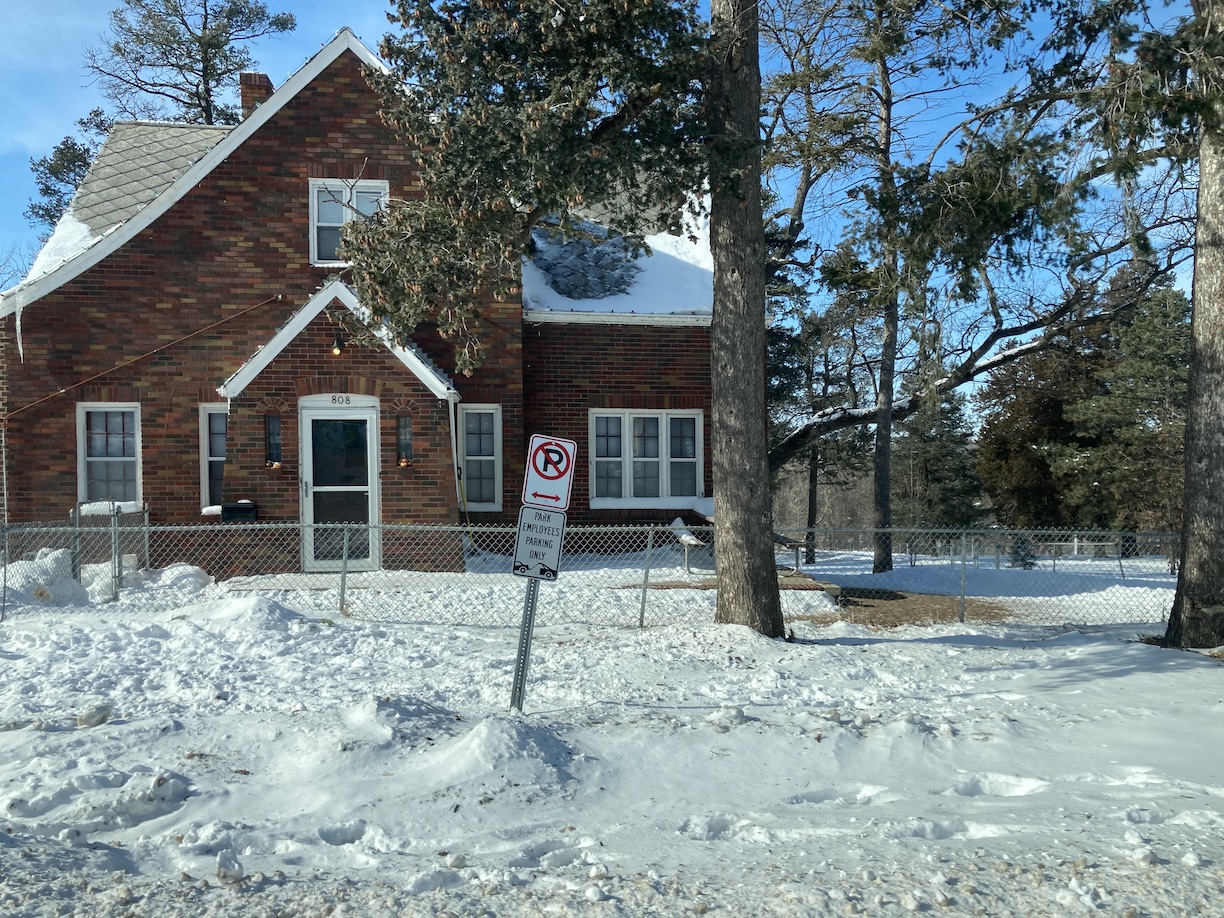
808 South 60th Street as she appears today. A sign I had not previously seen read, “Park Employees Parking Only.”
I had been toiling over a corresponding case in the winter of 2021-2022 involving the Riverview Park, the monkeys, and their caretakers when my true obsession began—the mystery of those public park caretakers’ homes. Unbeknownst to me, most, if not all of those caretakers of the past lived in quaint, almost Seven Dwarfs’ accommodations nestled within the city parks. A coveted city job, the park caretaker positions offered a residence and all utilities were included. As I mentioned, my original focus was on Riverview (and we will get to that portion of the investigation at some point) but I got swept away when I suspected that one of my favorite public park buildings ever had possibly been built as a caretaker’s cottage, something I had not considered.
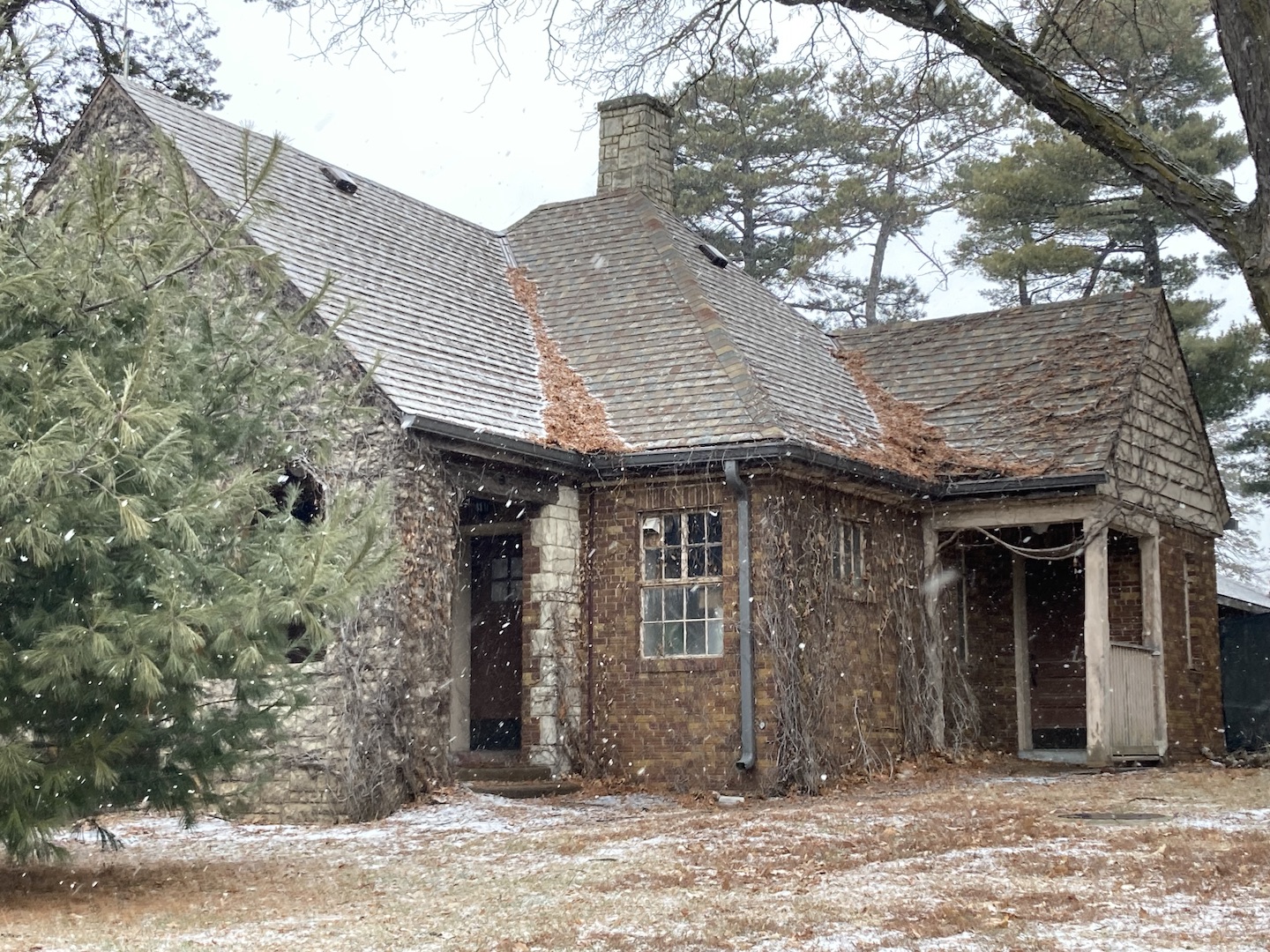
My favorite, most dear, snowy English cottage within Elmwood Park. Much studied before and after swimming at Elmwood Pool. Was this the caretaker’s cottage? It is right up there with the Riverview Park caretaker’s cottage, now called Henry Doorly Zoo. Obsessed.
These clues I’ve spread about on the desk will connect, I promise. In the fall of 2022 my friend, Jimmy Kaufman, owner of a construction company, was hired to remove the garage at 808 South 60th Street. That once wonderful, sloping garage on the south side was “basically sinking and pulling away from the house.” As you might remember 808’s roofline gently curved down into the garage. Interestingly Jimmy was paid by the city to remove the garage and later tipped me off that this was the Elmwood Park caretaker’s home. His team handily completed the work but I was left in disbelief. How was this the Elmwood Park caretaker’s house? Why was it up on 60th Street? And if this was the caretaker’s cottage, what was that great stone house across from Elmwood Pool?
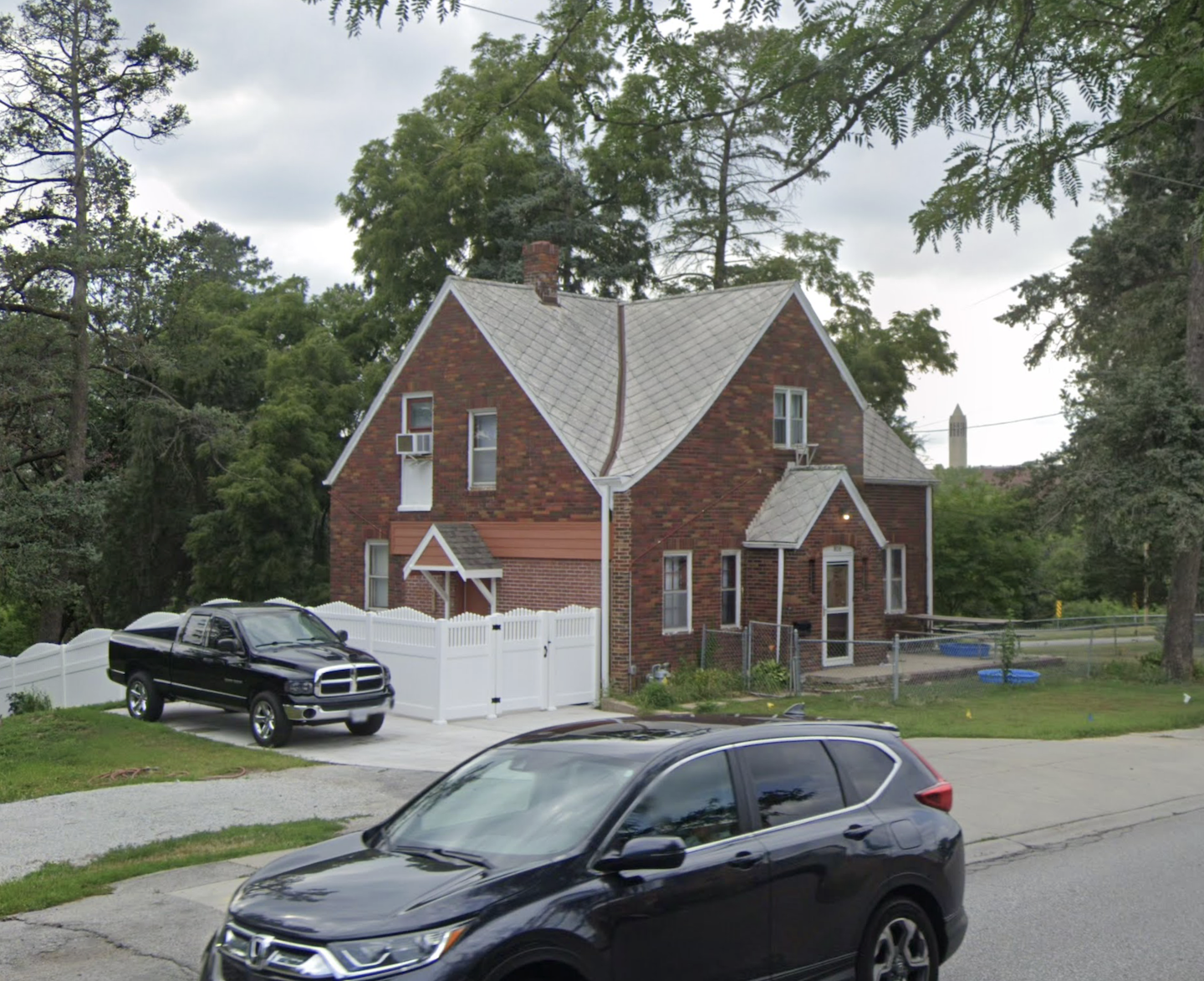
Camera faces northwest angle across 60th Street. Jimmy’s team completed the 808 South 60th Street job in October of 2022. As one can observe the garage was removed, new side door portico added on the southern elevation, masonry, fence installed etc. Above the sloping valley between the two gables now ended in an abrupt manner and yet created a cool visual distortion. “At the end of the job the caretaker up and moved to Montana to go do something else.” Upon questioning, Jimmy believed the 808 house wasn’t the Elmwood Park office–that it was strictly a residence but I wasn’t so sure. As I dug into my case on 808 South 60th, I realized a caretaker disappearing in the night was just one of her many curiosities.
Initial Case Notes
As usually is the case, I began gathering data on location, consisting of walk-bys, drive-bys and historical aerial images. I will share my observations after another cup of coffee. I reviewed the Douglas County Assessor’s site to see if 808 South 60th had parcel data I could scoop up.
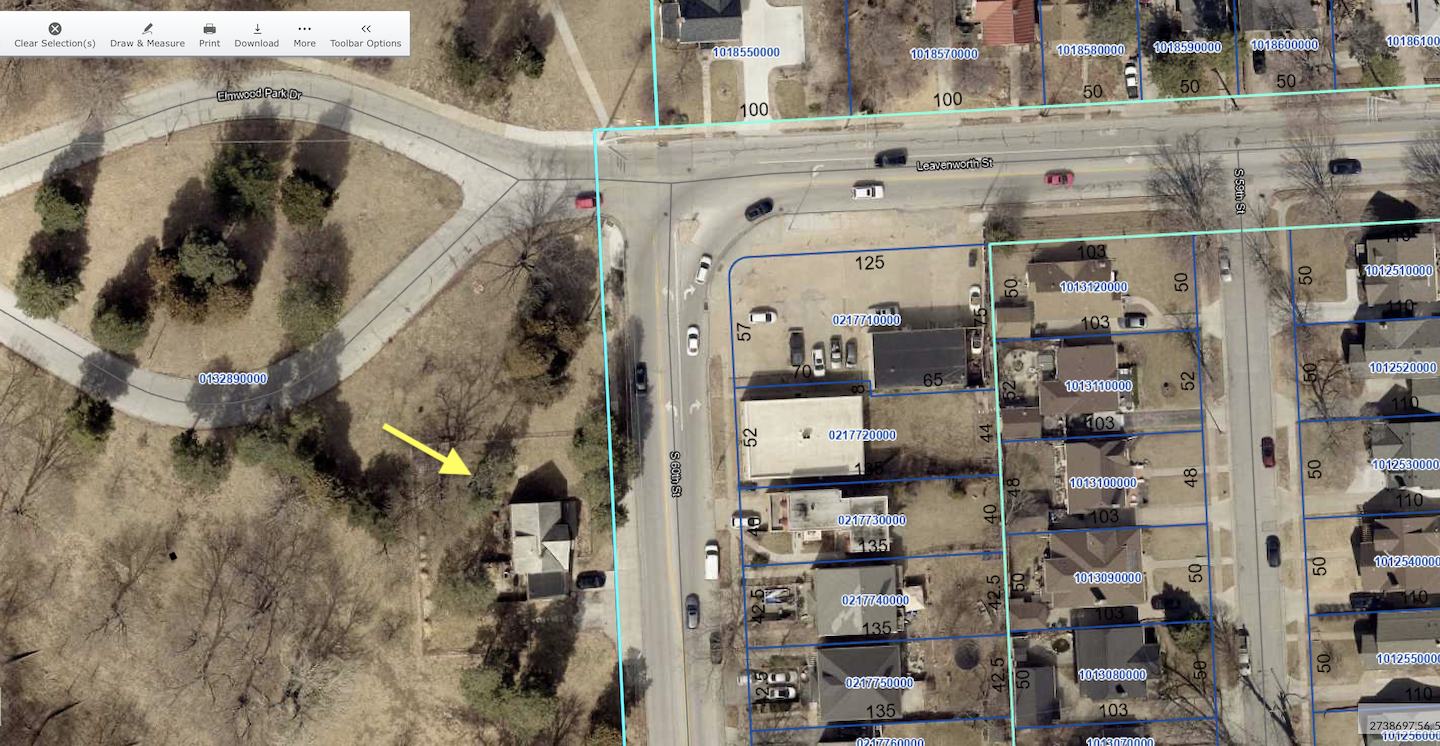
Image borrowed from the Douglas County Assessor site. Top of photo is north. I denoted 808 South 60th Street with a yellow arrow, just south of the Leavenworth-60th Streets corner. As one can see, all of the surrounding buildings have parcel addresses but the 808 house. Near to the Tudor building is a blue parcel number, 0132890000, which I clicked on. This revealed the City of OMAHA Elmwood parcel and even included information about some of the park’s buildings—but 808 South 60th’s info was conveniently missing. To make matters more complicated, 808 South 60th Street is actually the formal address of Elmwood Park. At that point I reached out to my contact in the assessor’s department, describing the brick Tudor on the west side of 60th and speculation that it was the park caretaker’s house, even though there were no parcel perimeters or details within the park’s building data. All of it strange. Now why do I share all of this, you may be asking? Because in doing this work, one becomes obsessed with process.
My contact shared that our newest mystery was a tricky one because it is owned by the city on a parcel that is believed to have always been tax exempt. “In the past our office was not diligent in keeping records on these tax exempt parcels as they always maintained the tax exempt status, so the data and valuations (at least from our office’s perspective) were inconsequential. We are now trying to verify all of the improvements on these exempt parcels, though sometimes on ones like these, it can be tough as we don’t have any data to start with. Based on similar houses in that area, it looks like it was built in the mid 1930’s.”
I was grateful for the information but finding said clues to the Tudor would be more challenging than I thought. Admittedly I was surprised by his mid 1930’s architectural suspicion, as I had thought 808 South 60th Street was possibly from the 1920’s. By the way, he was absolutely correct.
I’ve had another cup of joe, so here goes my observations on 808 South 60th Street.
Architectural Style
808 South 60th Street, to my eyes, is an attractive, brick Tudor of a modest variety. Her distinctive form, the side gabled roof with the façade dominated by a prominent, steep, front facing gable marks this a Tudor house. There is little by way of excessive elaborations seen in more pretentious Tudor examples. Still her subtly and good bones are the charm here.

2022 aerial image borrowed from borrowed from the Douglas-Omaha Geographic Information Systems site. Camera faces west. Front elevation of east-facing 808 South 60th Street.

2022 aerial image borrowed from the Douglas-Omaha Geographic Information Systems site. Rear elevation, west side, camera faces east. Interesting to note the chain link fence border. The only thing keeping 808 South 60th from subsuming into the massive park. Every local child from back in the day, when children went outside, wondered what it was like to live in the home with a backyard park.
The Tudor architectural style was a popular name, although suggested “historically imprecise” by Virginia Savage McAlester’s A Field Guide to American Houses. The American Tudor was “loosely adapted from a variety of late Medieval and early Renaissance English prototypes.” Its primary years of popularity were from 1890 to 1940. Savage McAlester described a “façade normally dominated by one or more front facing gables. Steeply pitched roof, usually side gabled. Tall, narrow windows. Front door or entry porch with round or Tudor arch.” Virginia Savage McAlester calls this porch “a nested entry gable in a larger prominent gable,” which I rather like. There is very subtle, decorative brickwork and twin vertical lights on either side of the front door, mimicked by tall narrow windows aside the nested gable. I’ve noted the sweeping curve of front facing gable roof into the adjoining garage, a favorite feature, now removed. 808 South 60th does not have the half timbering of some Tudors nor the emphasis on a chimney. Omaha examples to follow.
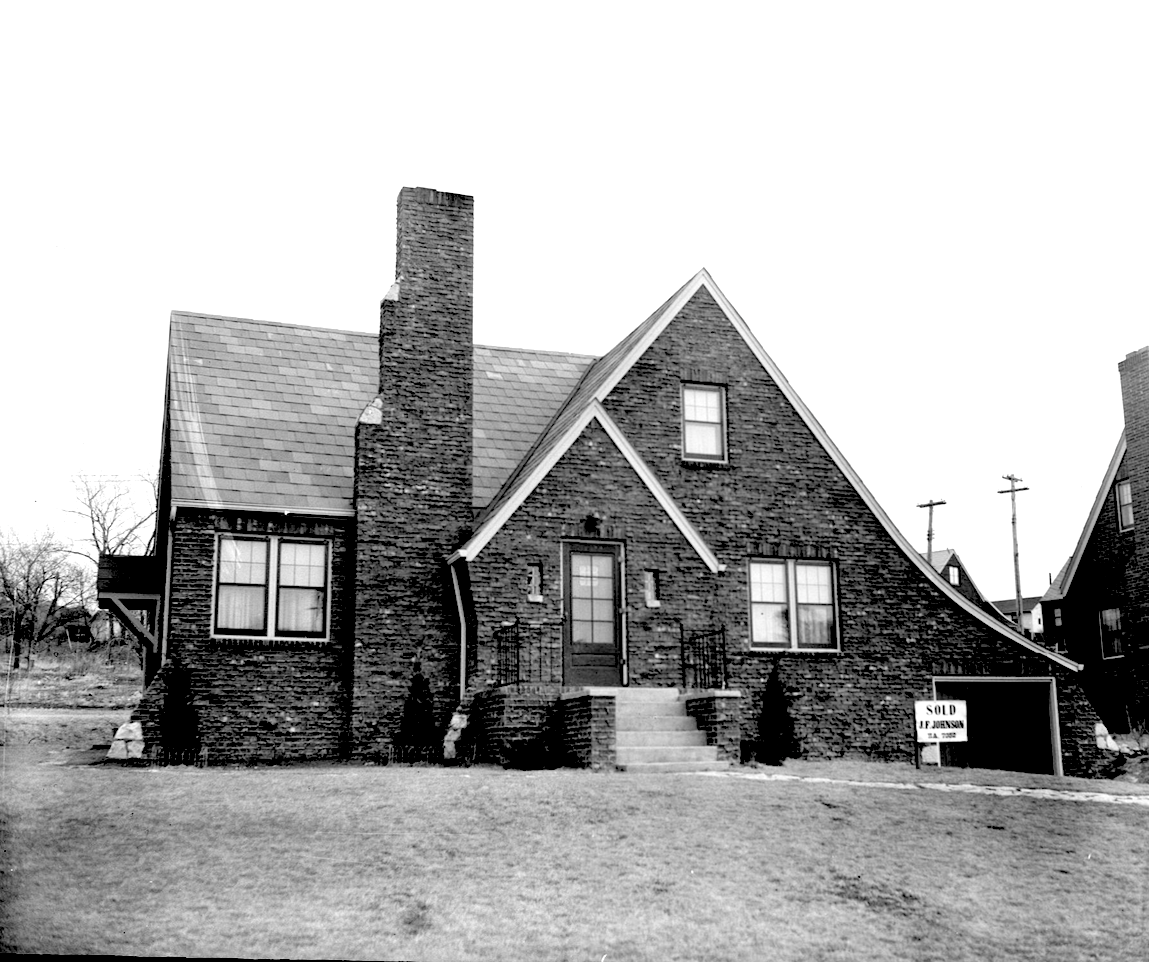
Very similar Omaha Tudor with the nested garage under a gentle curve. Oddly this version has an identical side door awning to Jimmy Kaufman’s addition to 808 South 60th Street. Similar brickwork to 808, although this might be Klinker. Sign in front reads: Sold J. Fe. Johnson. Photo by Savage, John. Publisher the Durham Museum.
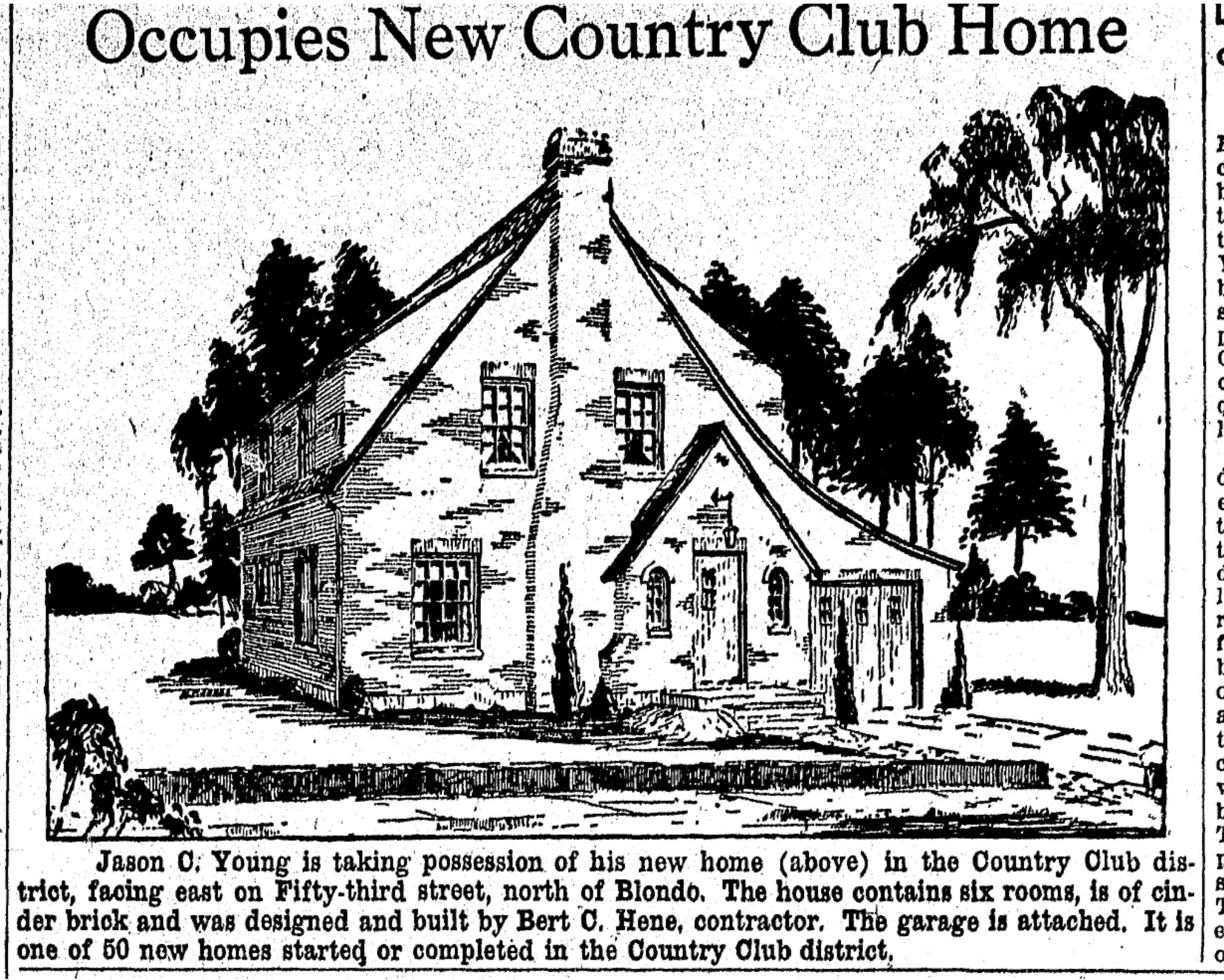
OWH. 1928. Beautiful little illustration of a similar Tudor garage.
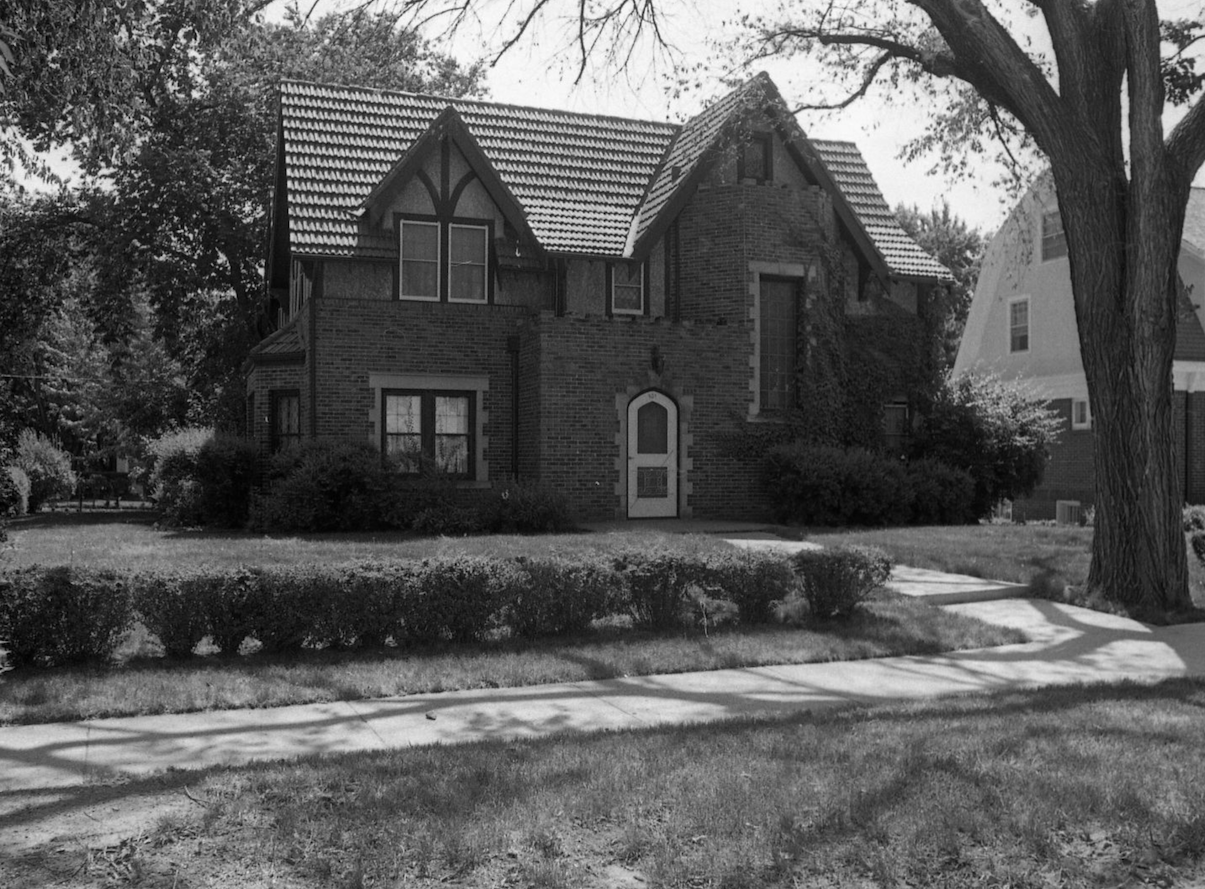
A high minded but still moderate version of the Omaha Tudor at 52nd and Howard Street, as photographed in 1971. Omaha Sun newspaper. The Durham Museum.
This gal was featured recently in another investigation: The Little Stories: 615 North Fairacres Road
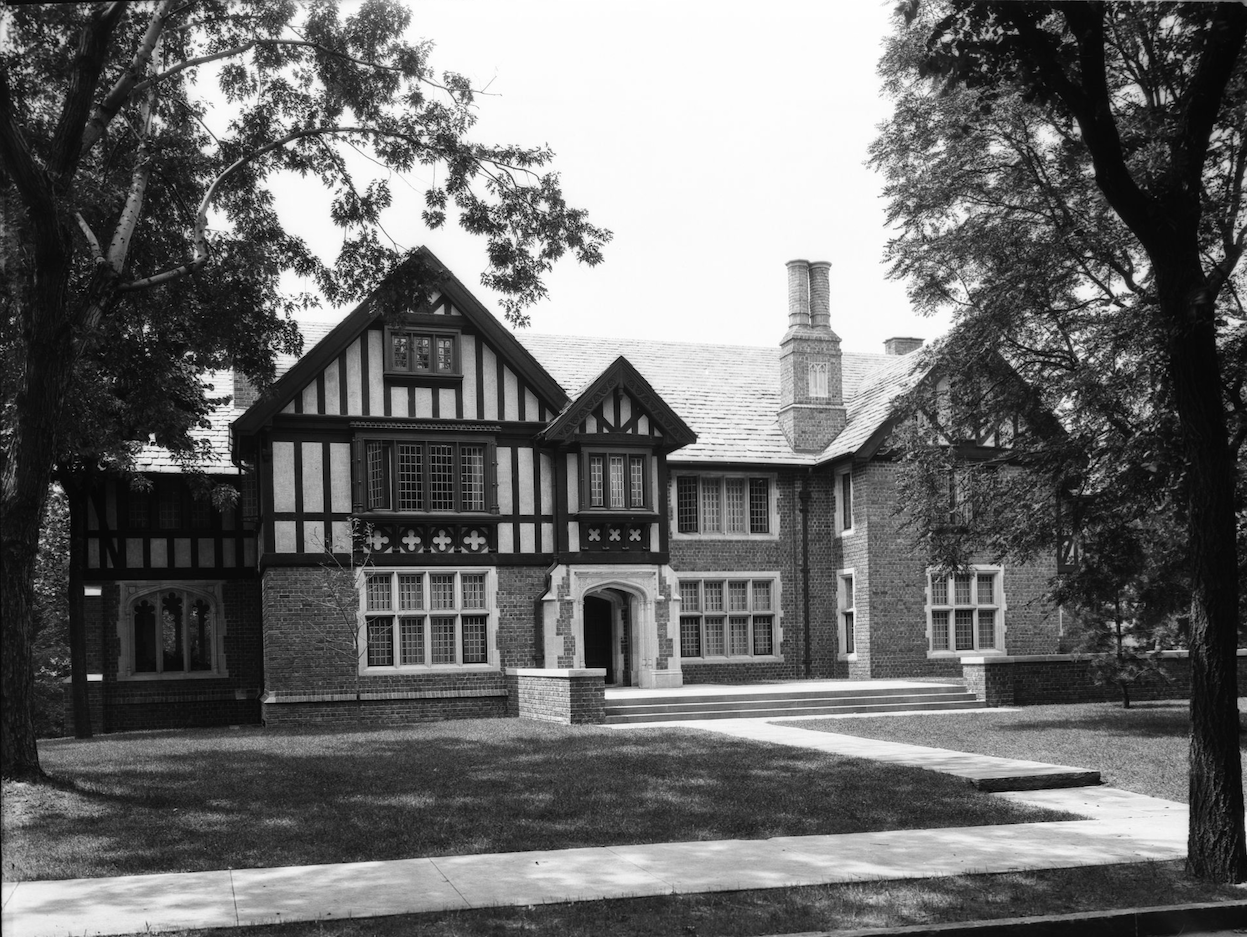
Here is a very formal Omaha Tudor—the gorgeous Edgar M. Morsman, Jr. mansion at 518 South 38th Street. Bostwick, Louis and Frohardt, Homer. The Durham Museum. 1924.
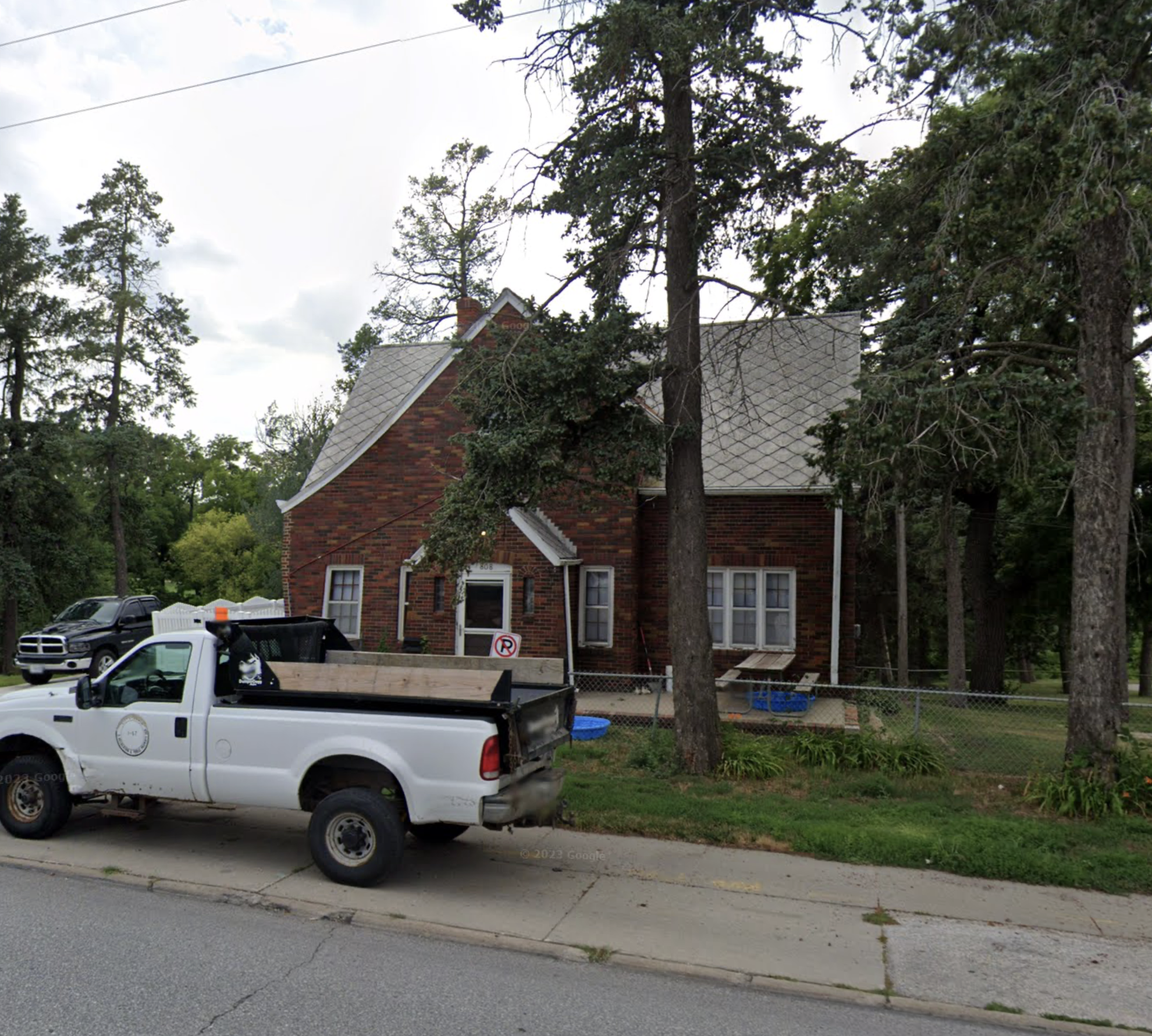
Other standouts are that 808 South 60th Street features an interesting variation in brick color and, what I believe is, its original, natural, Asbestos tile roof in a harlequin pattern. (Mr. Cassette and I had a roof of the same patinaed, transite tiles and I miss it terribly!) When this Asbestos is intact, upholding its integrity, as this one is, there is nothing better. “About 20 percent of Tudor homes are side gabled or hipped form with a single front facing gable added in the middle as a dominant façade element.” Image borrowed from Google Maps.
My video of 808 South 60th Street to give those out of town the feel of her placement on 60th Street. Press the white arrow within the red rectangle to view the video.
Lay of the Land
808 South 60th Street has the auspicious designation of being the only house built on the western edge of 60th Street from northern boundary of Leavenworth Street all the way down to Pacific Street—also the only house built within this portion of the gorgeous Elmwood Park. These clues made its Elmwood “caretaker’s cottage” status believable.
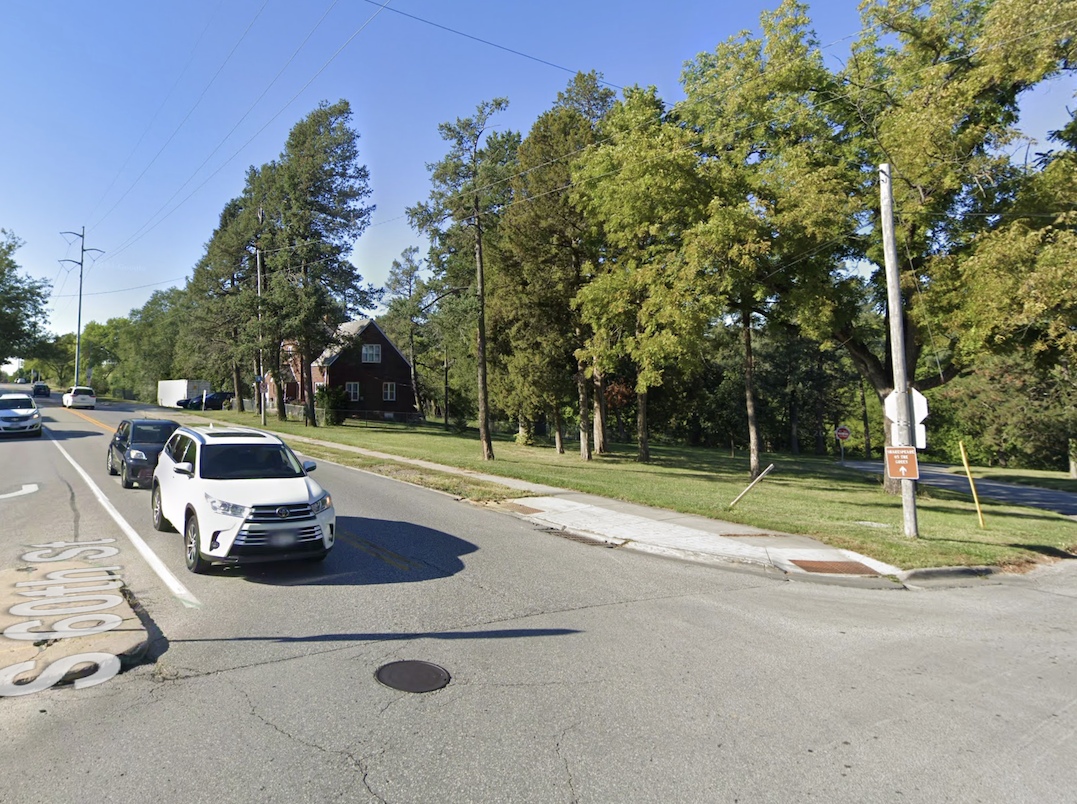
Facing southwest. 808 South 60th seen down the road from the corner of 60th and Leavenworth.
I found it interesting that my Douglas County contact estimated 808’s build date to the mid 1930’s because her nearest house and building neighbors were from a number of time periods. The nearest homes on the north side of Leavenworth were built in the late 1800s. Elmwood Park itself dates to 1889. The buildings along the east side of 60th Street, across the street from 808, were built starting in the early 1920s, with a trio grouping built in 1937. The closest Tudor house on 60th Street was built in 1922.
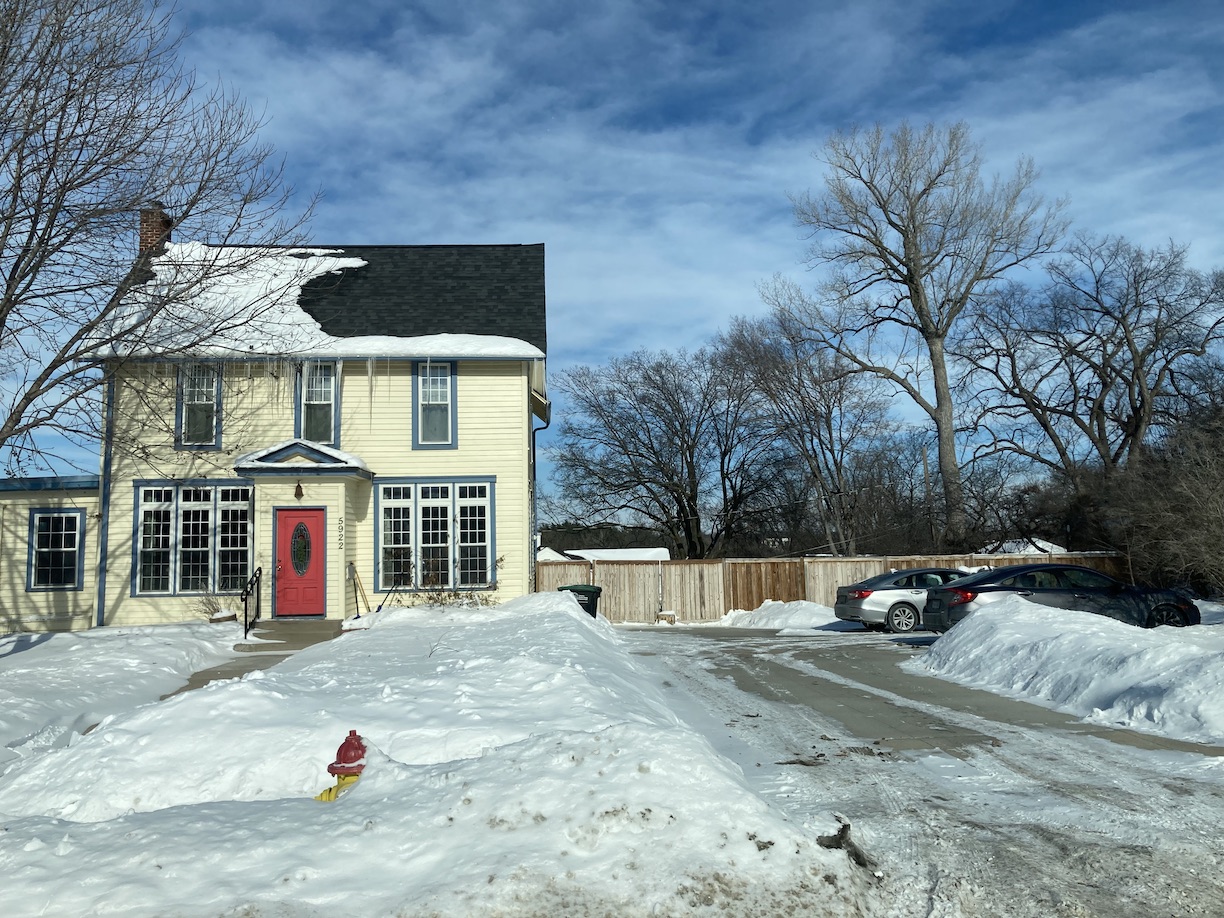
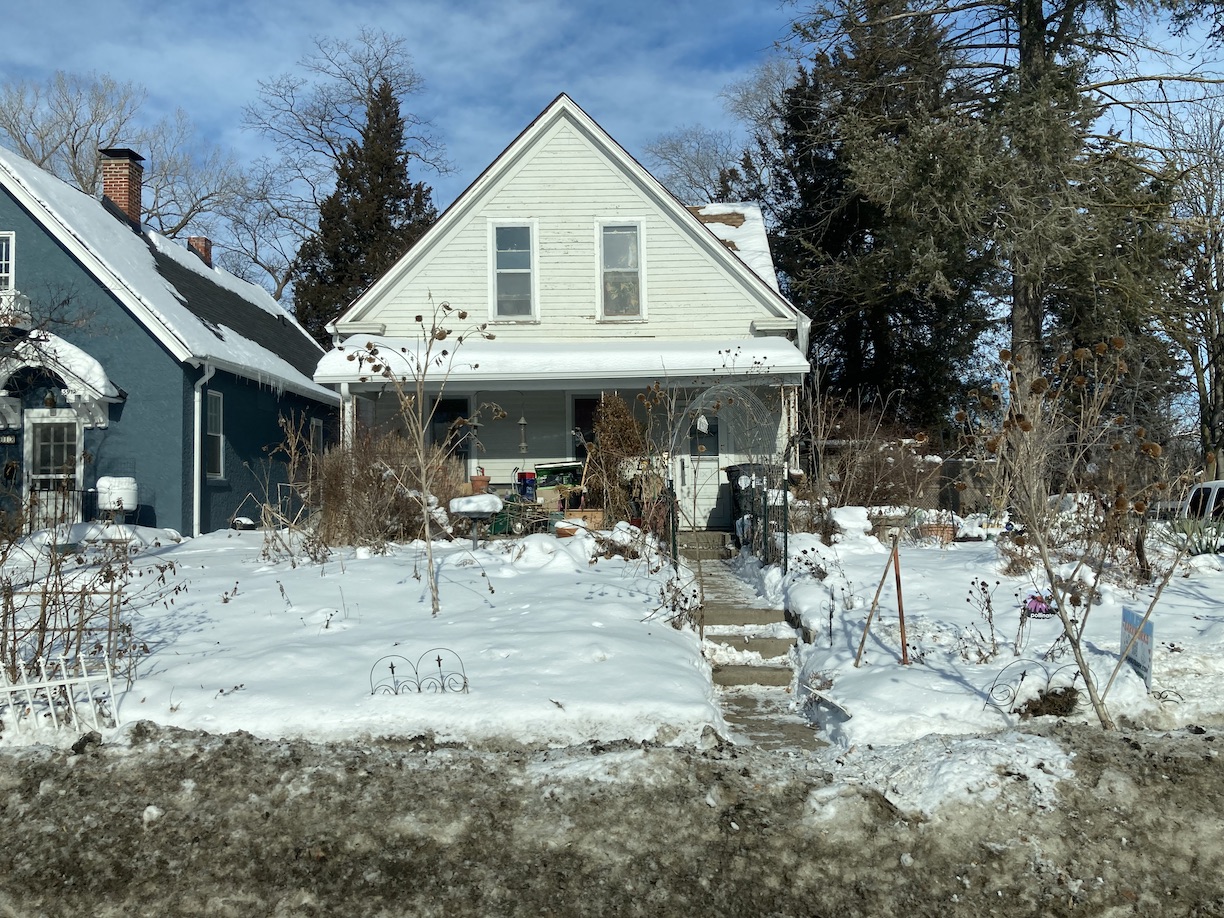
5910, 5912 and 5922 (above) Leavenworth Street, all built in the late 1800s.
For more on the neighbors, check out my earlier investigations:
Mysteries of Omaha: The Log Cabin and the Jones Street Bridge
Mysteries of Omaha: 5423 Leavenworth Street
Mysteries of Omaha: Arms and Ammo
After July of 1921, America would experience a time of prosperity. The Model T car reached popularity with regular citizens as it became more economical. Both the popularity of the car and Omaha’s public streetcars, of which Leavenworth Street offered an early thoroughfare line, would forge the way for many urban dwellers to move out of the Downtown radius and into the far reaches—such as the Dundee and Elmwood Park area. We already know from the 60th and Leavenworth case, 5922 Leavenworth Look Back, that this area was developed as a suburban streetcar neighborhood; daily grocery shopping was typically located along trolley stops or walkable from surrounding homes. Short blocks were typical. Located along streetcar lines out from the urban core of Downtown Omaha. Convenience to streetcar line was important. Narrow street width was an intimate, friendly feeling.
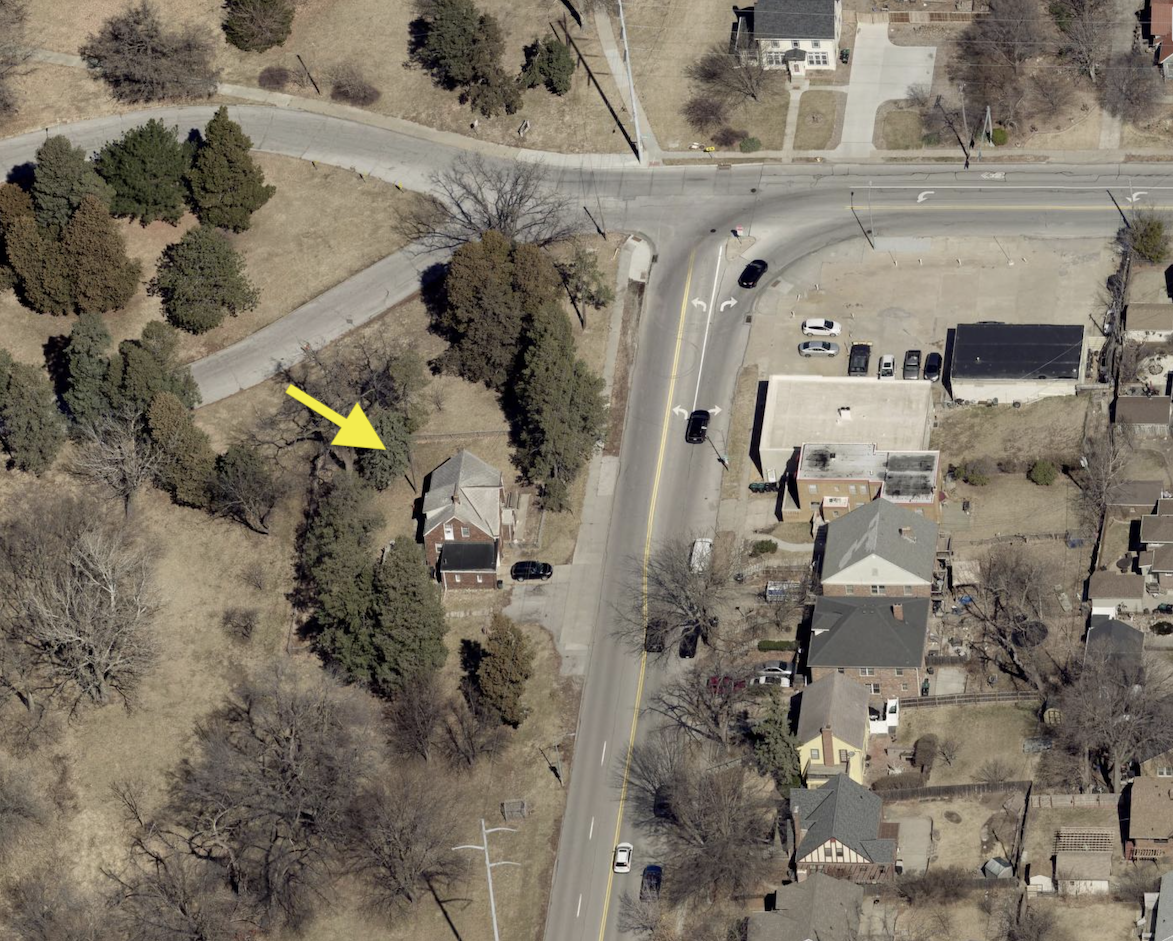
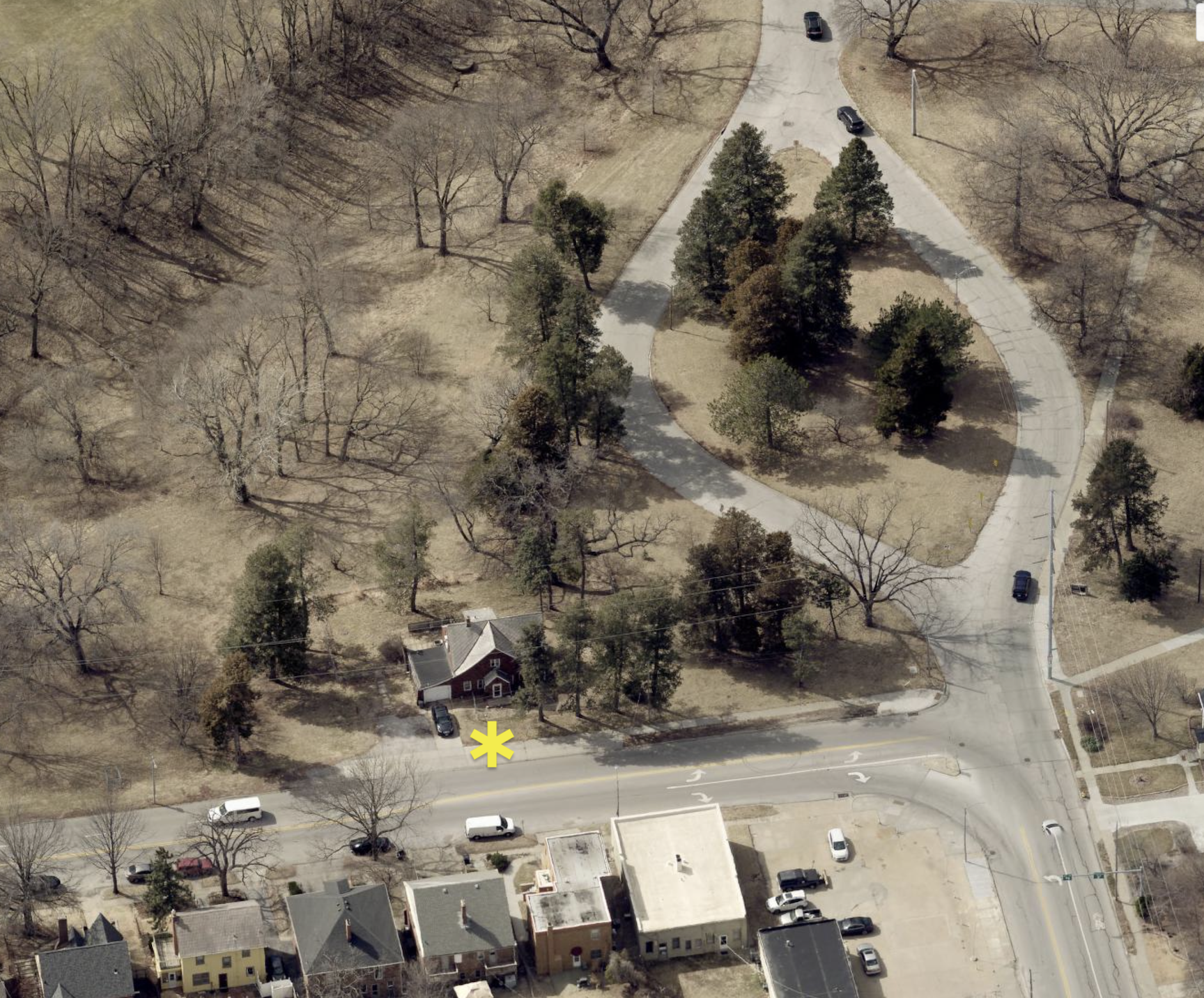
All alone, just the way she likes it. These fantastic images of 808 South 60th (denoted with the yellow arrow and star) and surrounding environs were borrowed from the Douglas-Omaha Geographic Information Systems site. Camera faces west.
Early Years Deep Dig
I reviewed neighborhood reconnaissance surveys and historic books of the area—of course nothing came to light because 808 South 60th didn’t technically exist outside of the city tax exempt register, which we now know has no true architectural data. Although it was not apparent when 808 South 60th was built or for what exact purpose, I needed to start somewhere. From what I could find, Elmwood Park, or the West Leavenworth Street Park in its initial phase, began to take formation in 1889 when the park commission recommended that the city acquire “forty and three-tenths acres” of land offered by Omahans Leopold Doll, Lyman Richardson, John T. Bell, H. M. Hurlbut and H. B. Wiley for “park purposes.” Doll’s land was farmland, that I am sure of—the rest, honestly I did not dig into. Of note in 1886 this eastern most portion and southern perimeter abutting Pacific Street was known (in 1870s and 80s) as Doll’s Orchard and Vineyard, a portion of the Leopold Doll farm. The southern most part of the park (now the golf course?) would remain Doll farm land into the 1930s.
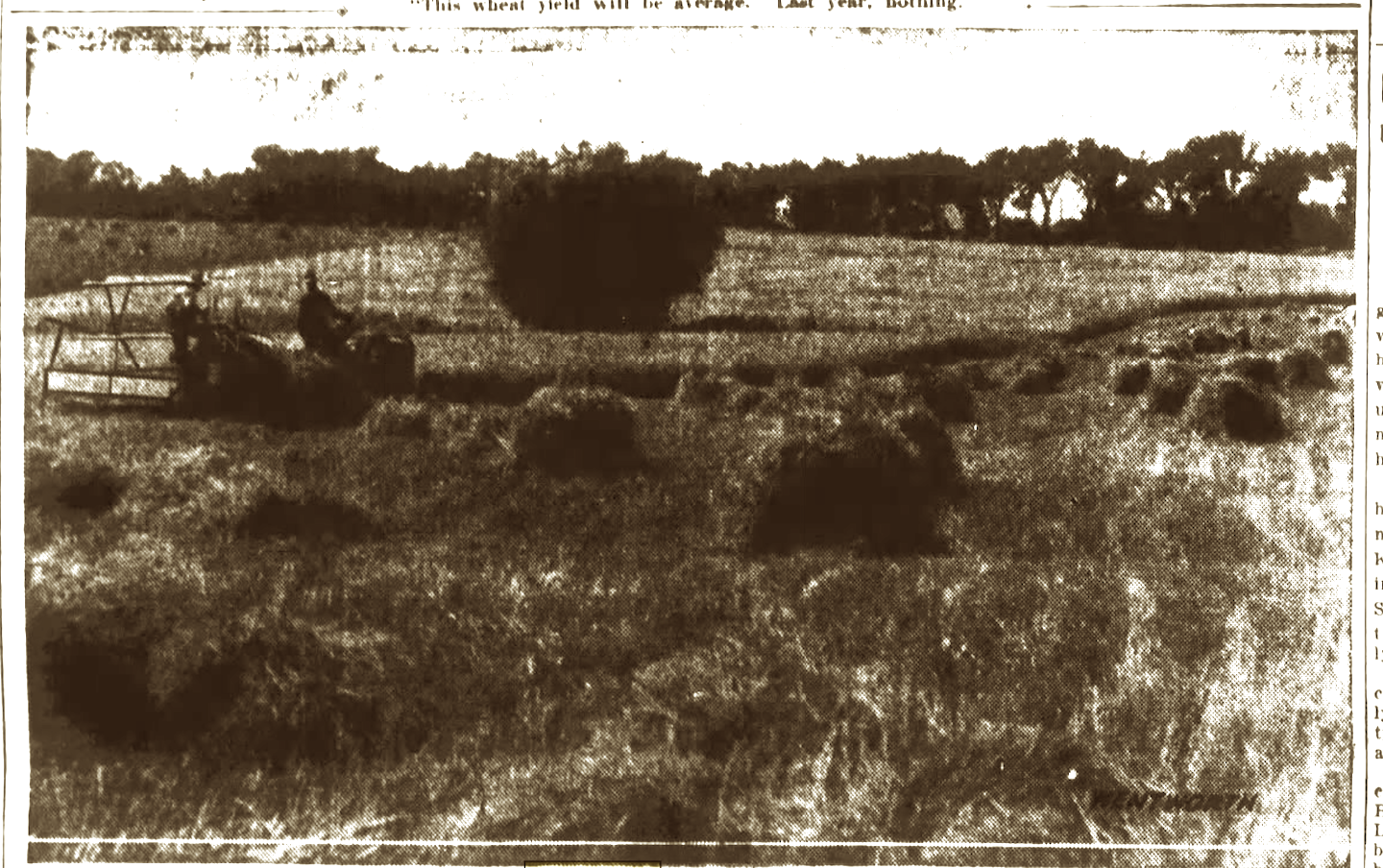
“Harvesting 50 acres of wheat on the Doll Farm north of Pacific Street and adjacent to Elmwood Park. Has been in the family for 60 years and now belongs to William, Charles and August Doll.” 1935. Omaha Sunday Bee News.
When Leopold Doll died in 1901, his obituary described a “pioneer settler of Douglas County” who arrived in 1860. He married Mina Walther and together they had sixteen children. (!) He was described as a “hard-headed, industrious citizen and acquired an independent fortune.” Obviously before his death, he sold the city his land east of his Doll farm.” From my digging it appears that his brother, Fred Doll, continued to run the original farm, “half mile west of Elmwood Park.” Doll owned many parcels of land all over town. His holdings were also obsessed over in the Mysteries of Omaha: 9301 West Dodge Road investigation.
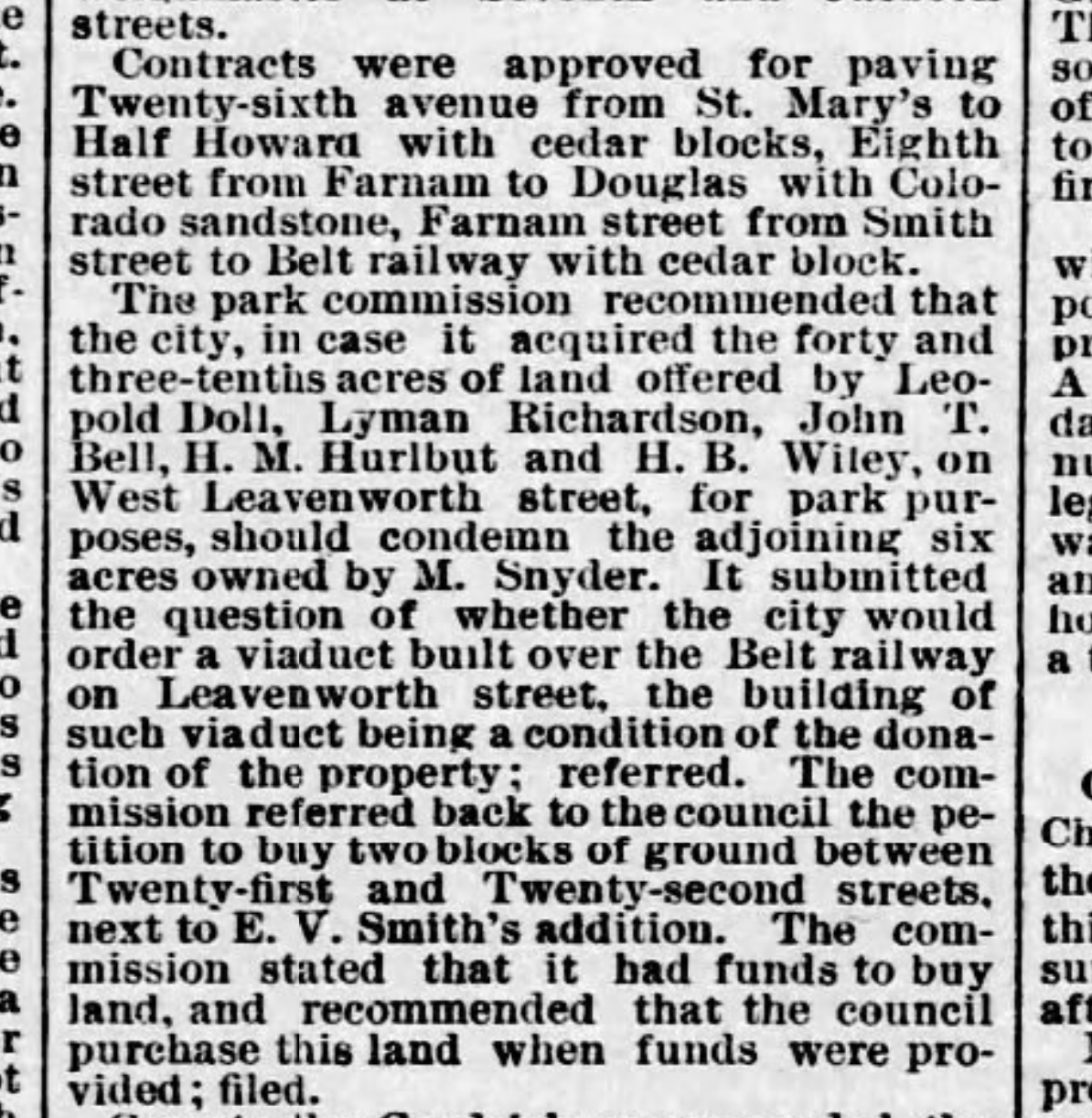
1889 OWH.
There was a matter of an adjoining six acres owned by an “M. Snyder,” essentially “a narrow strip of land near the ravine on the north,” that park designer, Horace Cleveland, thought would help widen the roadway to the park. A survey of an 1889 map of the neighborhood revealed that a William F. Snyder owned many acres in the area, north and south of Leavenworth. There was even a Snyder Avenue, later changed to 57th Street. In our earlier Cabin in Elmwood Park investigation, we had figured out that My Snyder had owned the original plot of land that Dr. James Taliaferro Maxwell’s log cabin was later built on. For more on Snyder, Doll, Richardson, Bell, Hurlbut etc, check out that case when you have time.
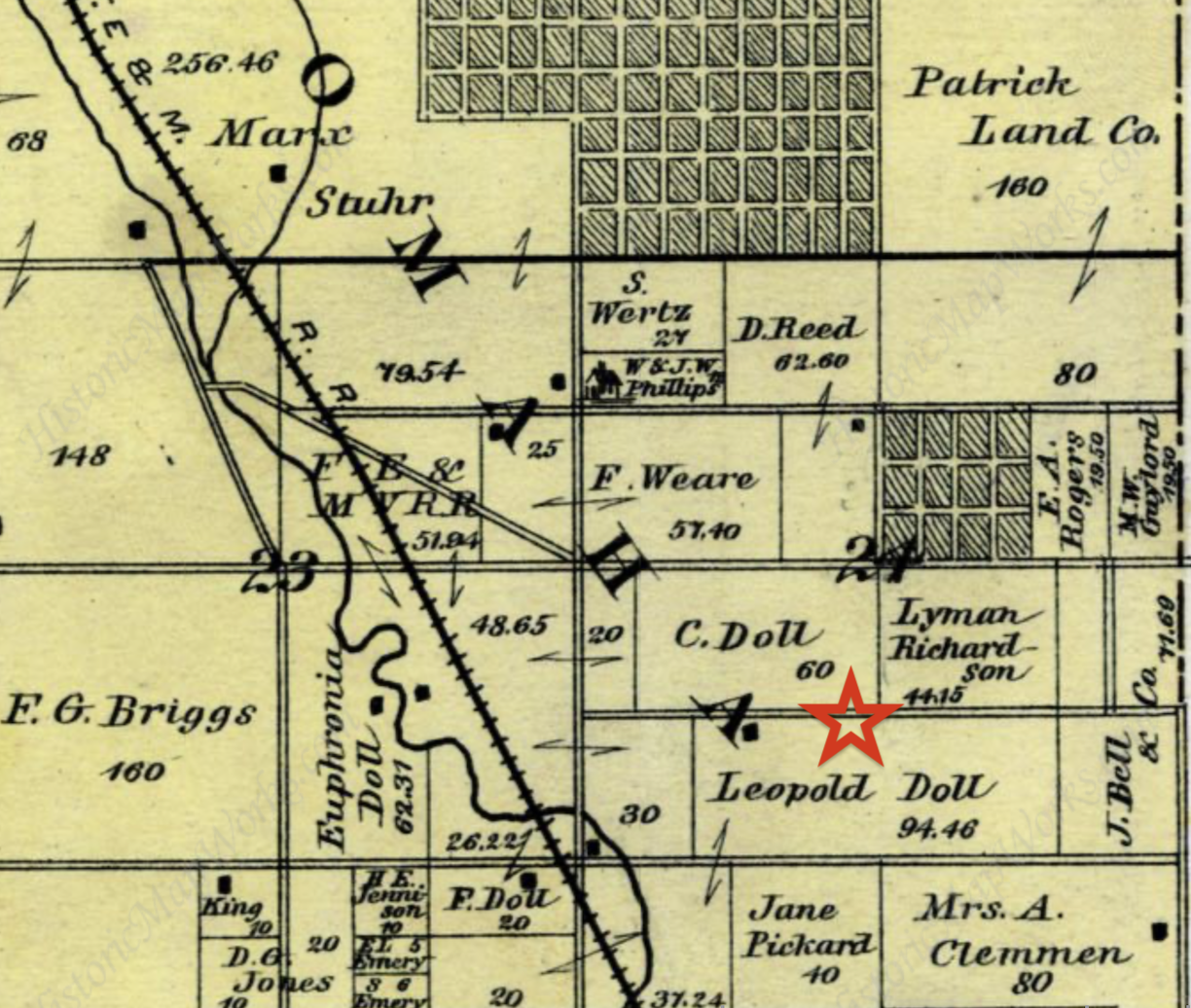
I was very glad to find us this 1889 map because it helps give a visual to the property lines. I placed a red star in the middle of these parcels of the land owners mentioned above. Patrick Land Company at the top of the map would become Dundee. For right edge is 60th Street. Double line below the Leopold Doll name is Pacific Street. The numbers below the land owners’ names denotes the amount of acres. Image borrowed from the Historic Map Works Rare Historic Maps Collection full atlas of Douglas and Sarpy County, 1889.
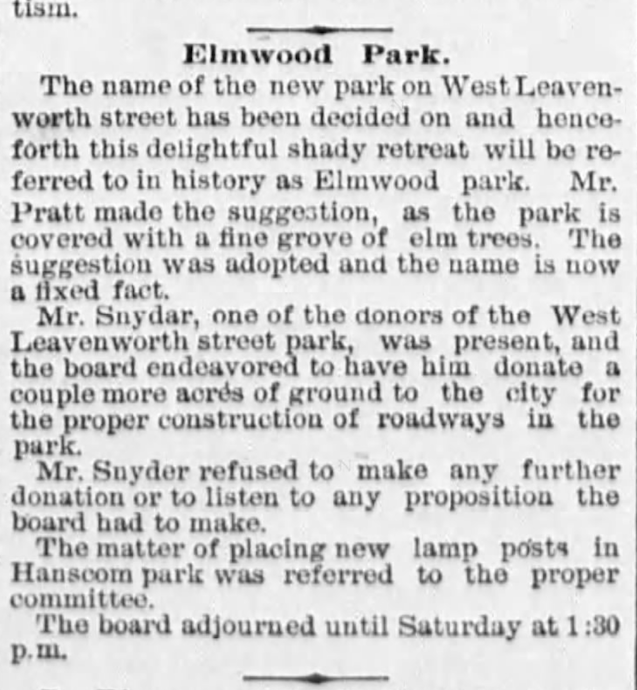
Omaha Daily Bee from June 1890 let on that the park would be christened Elmwood, after a suggestion by a Mr. Pratt because of the “fine grove of elm trees.” The park had encompassed the Mr. Snyder land at that point.
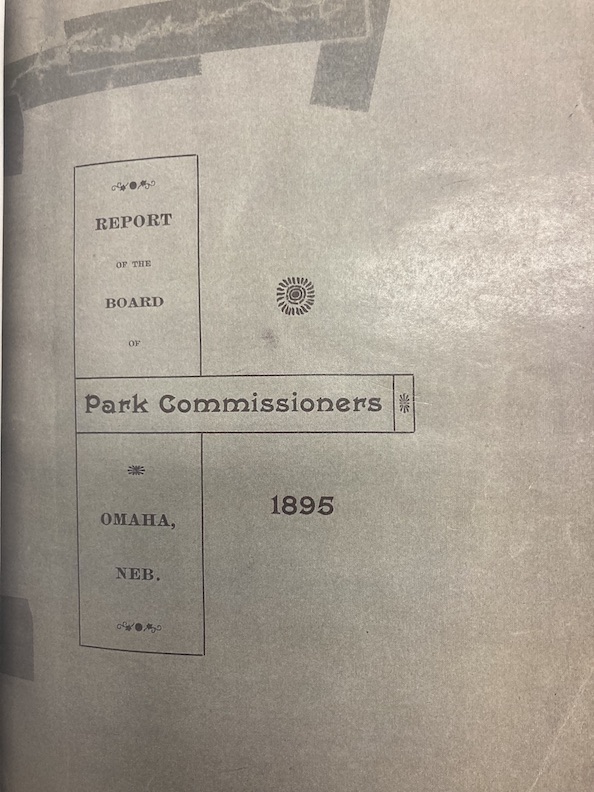
Back in January of 2022, librarian-detective Martha Grenzeback of the W. Dale Clark Library (RIP) dug up this fabulous pamphlet from 1895 entitled Report of the Board of Park Commissioners Omaha, Neb. It outlined city park revenue and cost of operations. I was interested to learn that in 1895, grass and hay sold was a source of income from Elmwood Park. As for expenses, “Improvements in the past year were the planting of 7, 113 trees” and “the opening of 1,750 feet of the twenty-five foot driveway connecting the main and southeast entrances.” I share these tidbits because missing from the list was a caretaker’s house or any kind of salary or accommodations.
Notes on the Park Entrance
Something that I find quite peculiar is that this opening into Elmwood Park, to the west of Leavenworth and 60th, is actually the formal entrance to the park. For myself, it is such an awkward drive that I had always assumed this was the backdoor, with the formal gateway surely to the north…at say…the Happy Hollow Boulevard roundabout. (Actually the more I consider how one gets into the park, all entrances are strangely casual. Like you are required to sneak in on the hush.) But from its pilot season, 60th and Leavenworth was listed as The Approach of Elmwood Park. This very entrance and its deep plunge into the park has a weighty history of suicides, automobile accidents, vehicular deaths and is miraculously Home of Nebraska’s largest Swamp White Oak tree.
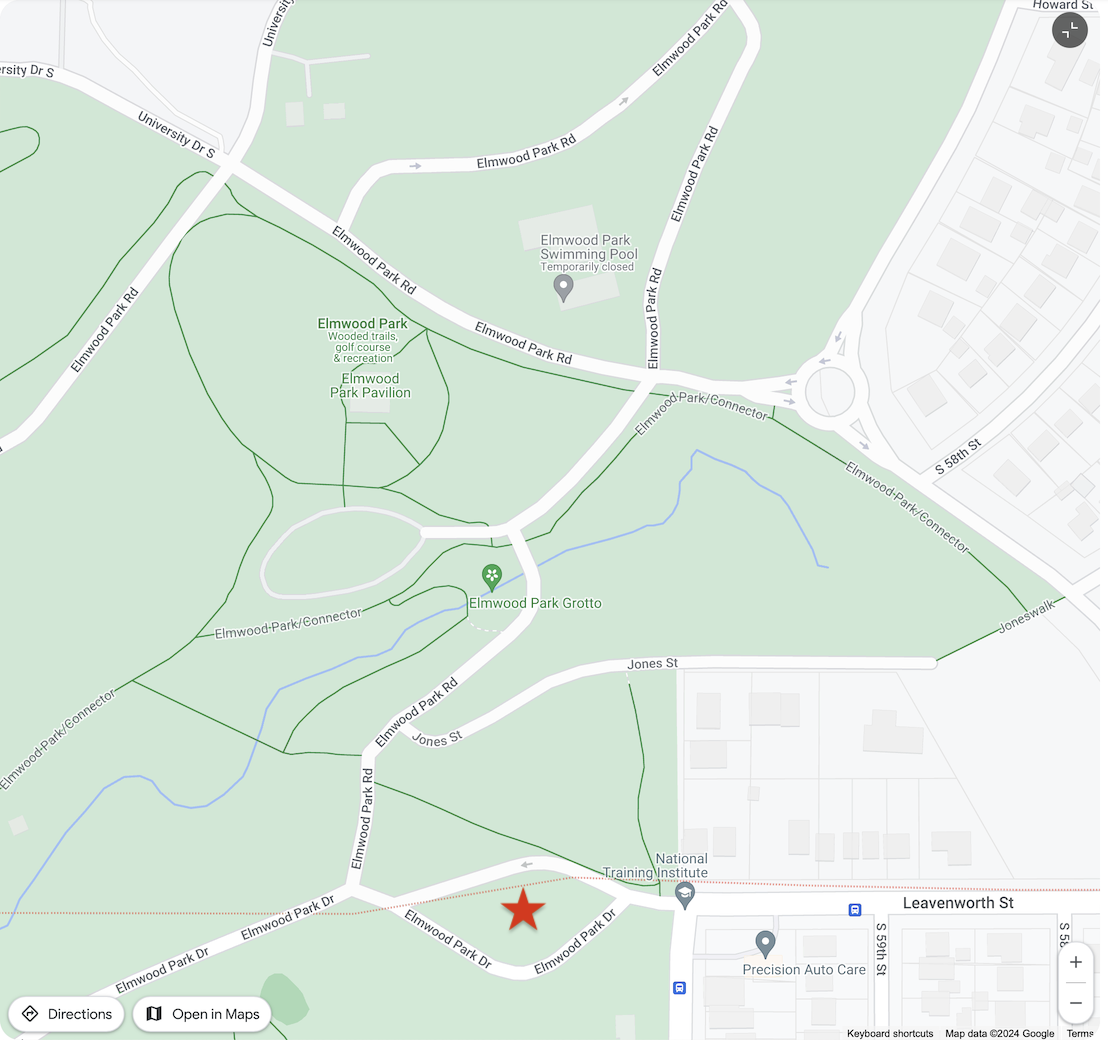
Top of map image is north. I placed a red star at the perfectly weird loop-de-loo entrance off of Leavenworth Street onto the oblong circle of Elmwood Park Drive, featured in the following photos. Elmwood Park Drive and Elmwood Park Road meander together.

1934: a traffic signal to warn motorists was set up at 60th and Leavenworth where drivers would often miss the 60th Street turn.
From the Omaha: A Guide to the City and Environs, written and compiled by the Federal Writers’ Project Works Progress Administration, 1935-1939: “With main entrance at 60th and Leavenworth Streets, extending from Happy Hollow Blvd and 60th Street to 67th Street, from Pacific Street to Howard and Dodge Streets, is at present the most complete park in the city for recreation and picnicking. Dates from 1889. Noted for its natural scenery and contains 4.5 miles of oak, elm, pine and white birch shared bridle paths. Near the main entrance is a mineral spring, the water of which contains silica, magnesia and soda. Flanking the east edges of the park are densely wooded ravines that serve as bird sanctuaries all through the year. It has an 18 hole golf course, 2 baseball diamonds, 2 softball field, bicycle concession, 12 horseshoe courts, an archery range, a volley ball court, an outdoor basketball court, enclosed pavilion, open pavilion ‘called the Moorish Castle’ playground equipment and picnic facilities.”
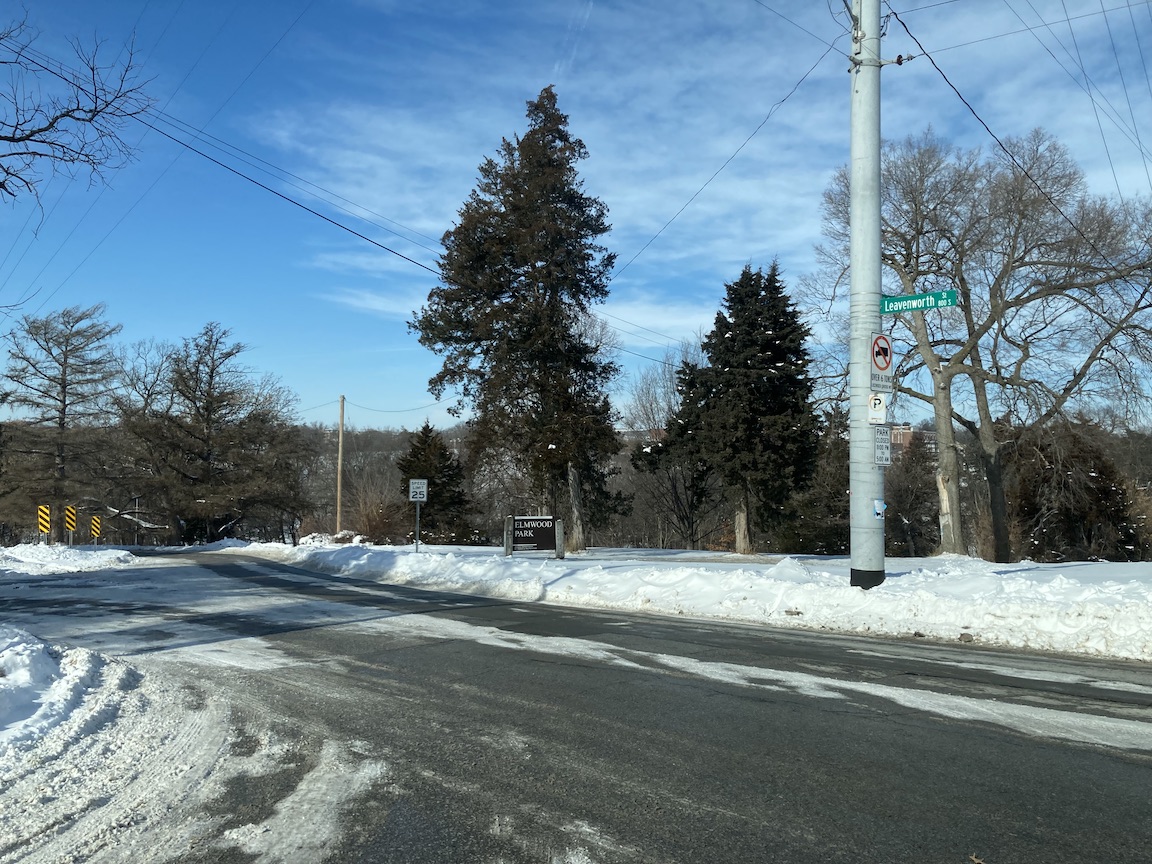
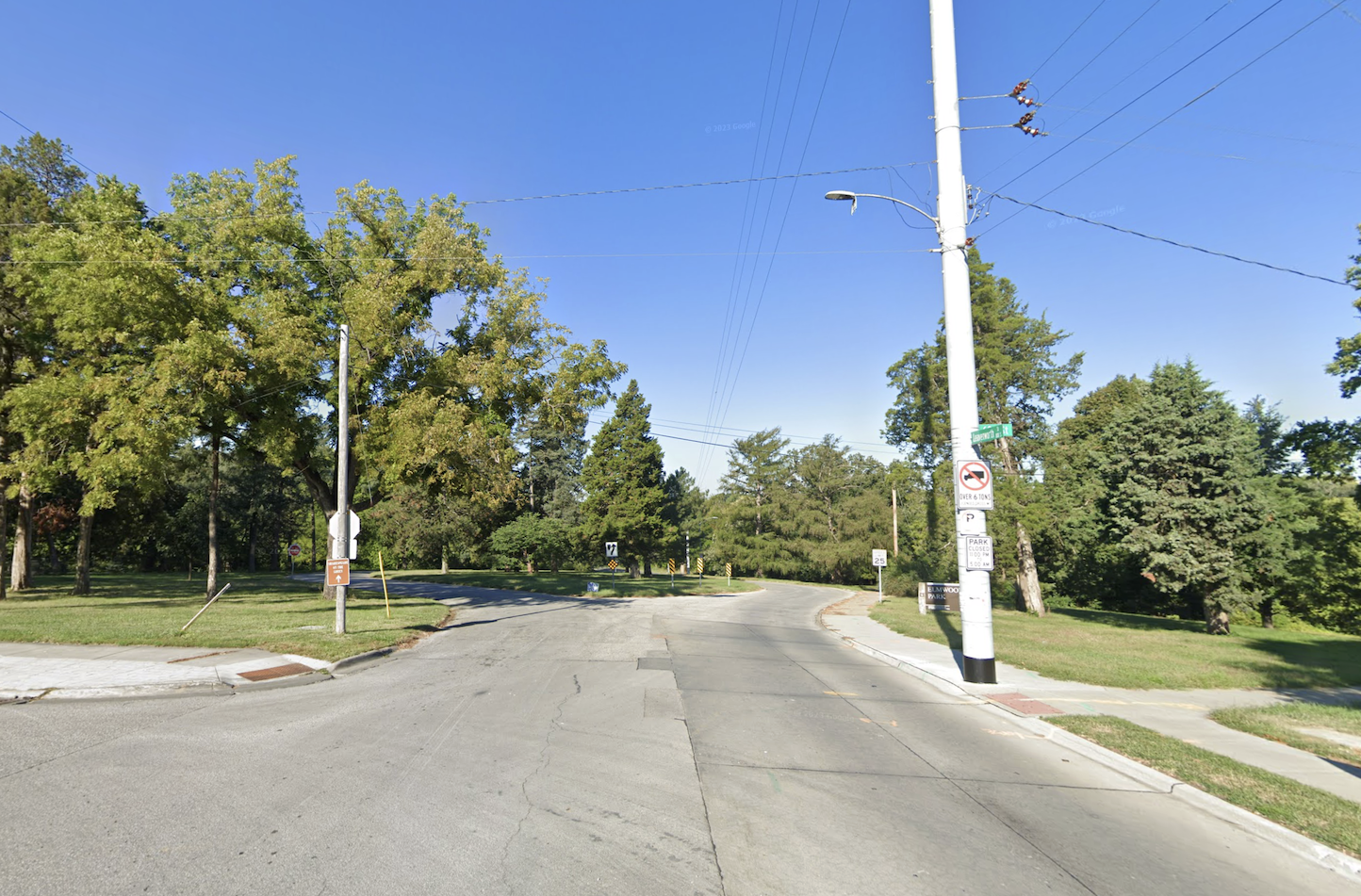
Top two color photographs preceding from current day; camera facing west, into the park looking at Elmwood Park Drive.
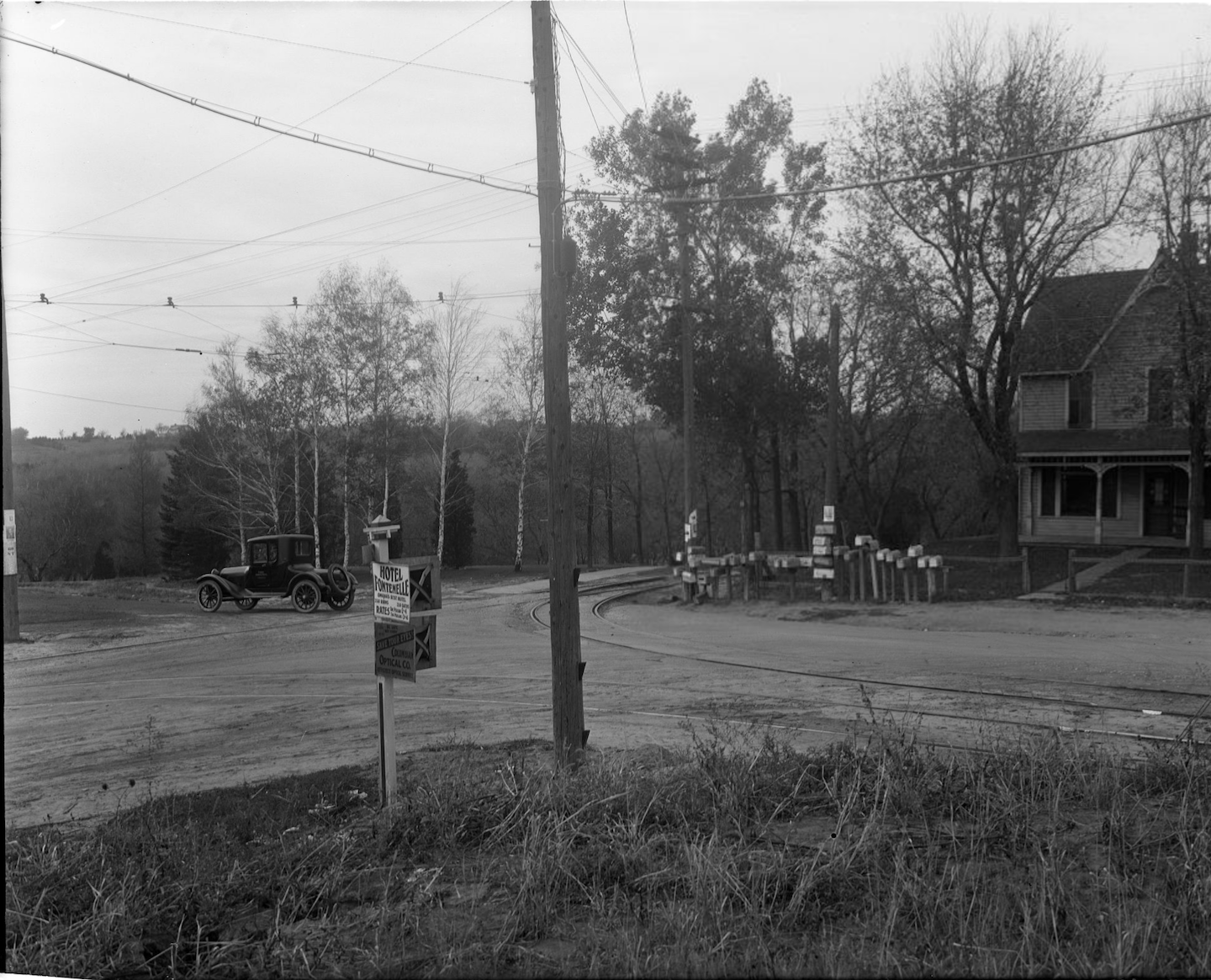
Black and white photo from 1918. Camera is southeast of 60th and Leavenworth, looking northwest into Elmwood Park. 5922 Leavenworth seen in her original glory. Vehicle is headed down Elmwood Park Drive. He just crossed over street that used to lead to the secret Jones Street cabin property of Dr. Maxwell. Photo by Bostwick, Louis and Frohardt, Homer. Durham Museum.

A portion of 5922 Leavenworth Street in her current state of luxury.
George Cole
George Cole would come across my radar in about the 1907 time period when an advertisement was placed selling “two fresh cows at Doll Farm, west side of Elmwood Park.” The contact name was George Cole. The name stood out as a West Leavenworth character I had chanced on in the past, so I sifted through this very website. Anna Beedle Cole seemingly owned land all over the Dundee-Elmwood Park area, with parcel lots up and down Leavenworth when we had previously uncovered she was married to none other than George W. Cole. (Owners of our 5423 Leavenworth Street—the former Tasty Pizza house) George Cole was long considered a “pioneer resident” of Omaha but somehow it had passed me by that he was also the well-known caretaker of Elmwood Park. “Practically everyone who ever went to Elmwood Park saw him.” He was called King Cole by the Elmwood baseball boys. He lived “near the park” on what was called “West Leavenworth.” As to his connection to Doll Farm, I wondered if George Cole was a land manager for the Dolls or perhaps just a local point of contact for their farm.
It was 1890 when George Washington Cole, then 33 years old, married Annie Beedle (22) in Omaha, Nebraska. A later article would confirm that George begun employment with Elmwood Park in 1891. It appeared that the predominant requirements for a park caretaker were maintaining strict sobriety (during the day?) and being a reliable, older man. Now we know George was not elderly but given the 1890s timeframe, a man in his 30s was most assuredly considered seasoned.

George Cole in his younger years. Photo shared by Priscilla on Find a Grave.
But what of the Coles’ home, the park caretaker’s home? According to the 1900 U. S. Census, the Coles lived at 3511 Jones Street. All caretaker information that I came across mentioned the blurriness of Cole West Leavenworth residence. One potential clue was another treasure from that 2022 expedition involving Martha Grenzeback at the W. Dale Clark Library– the 1909 Board of Park Commissioners Annual Report.
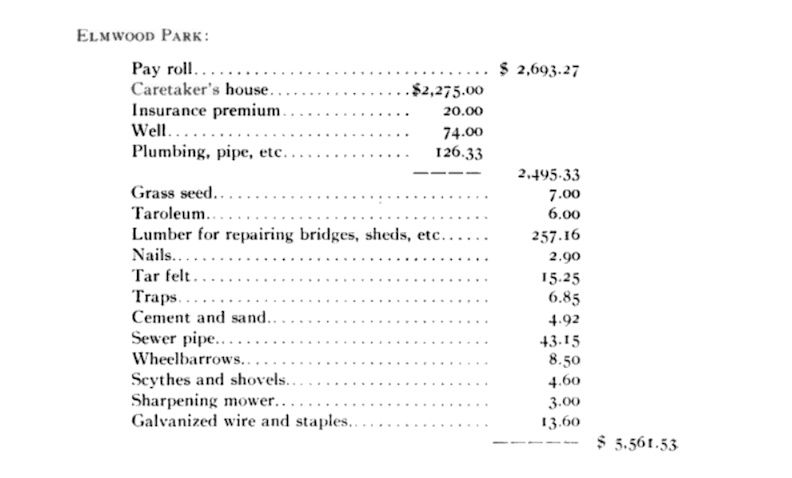
The Elmwood Park caretaker’s house was noted as costing the city $2,275.00, which would have been a very nice house indeed. Build amount? Purchase amount? The average wage in 1909 was 22 cents per hour with average American workers making between $200 and $400 per year. Image taken from the 1909 Board of Park Commissioners Annual Report.
By the 1910 Census, a year after the Board of Park Commissioners report, the George Coles lived in Dundee Township, on West Leavenworth—frustratingly no house address documented for anyone residing on that street. Most likely this was the house the city had paid for the year prior. George Cole was registered as a 52-year-old “foreman of a public park.” Wife Anna Cole was then 41. They had three sons: James “Click” Andrew (18), Raymond “Ray” Earle (16) and Clifford “Herbert” Herbert (13).
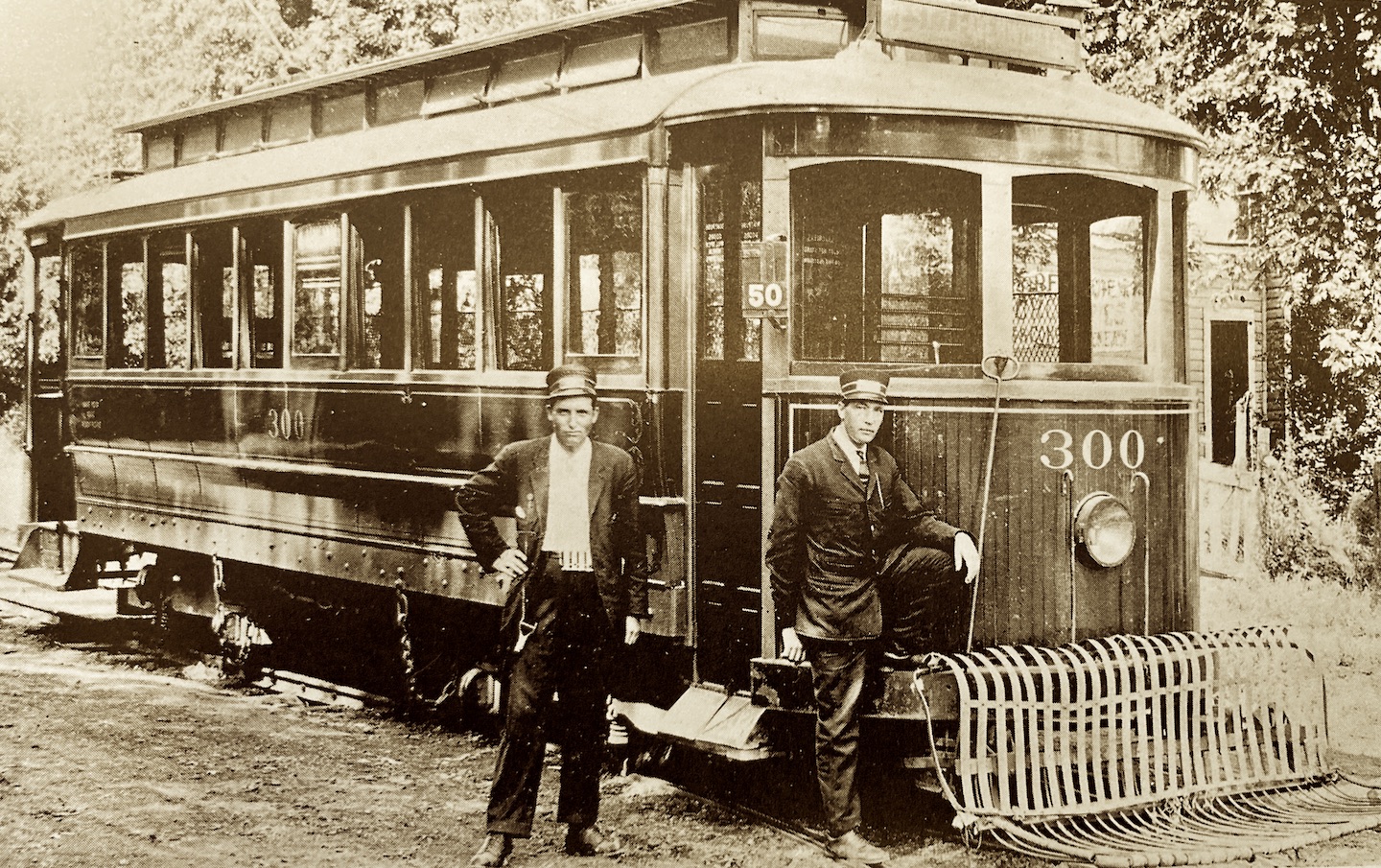
Incredible photograph shared for context of the times by local hero, Richard Orr. About 1910. Two young carmen pose by their 200 series, on unpaved west Leavenworth at the end of the line at 60th Street. Borrowed from his incredible book, O & CB: Streetcars of Omaha and Council Bluffs. 1996.
Joe Hummel
Joseph “Joe” Benjamin Hummel was Omaha’s first park commissioner after stints on the Omaha City Council and serving as Street Commissioner. As you might have guessed, Hummel Park was named after him. “In 1912 he was chosen the first Commissioner of Parks and Public Property and served until 1939.” Hummel would darken the doorway of the investigation later, but I figure it is important to place him in our timeline of events.
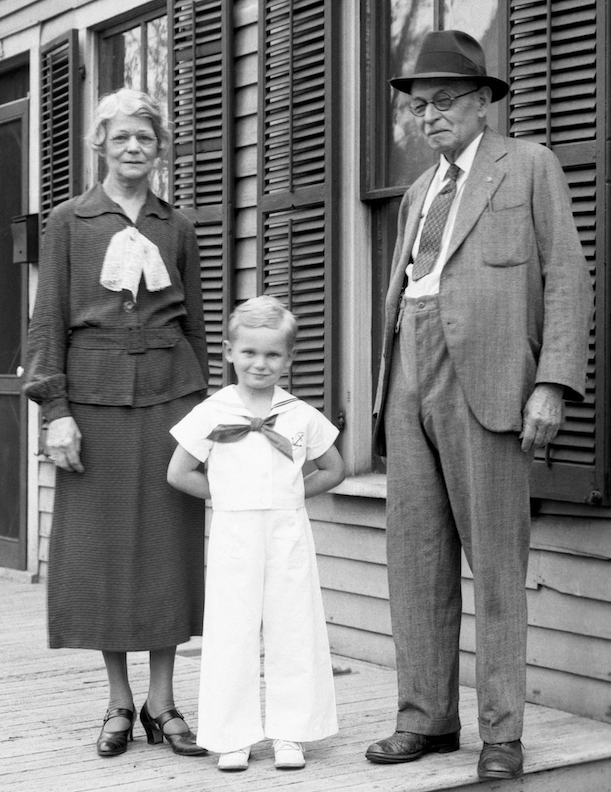
Joe and Josephine Meyers Hummel with a grandson? Omaha Park Commissioner from 1912-1939 with the exception of two terms, which will come up again later.
Cole House Questions
Other clues would hazily mention the Coles living at 60th and Leavenworth through the years. The Omaha City Directory of 1917 pointed to the George Coles living at 6003 Leavenworth within “Elmwood Park.” For the record, the 6003 Leavenworth house address is no longer in use.
Was there a house within the park that was torn down?
An extant residence on Leavenworth renumbered?
Or was the brick Tudor at 808 South 60th Street a remodel of the original house site of the Coles’ caretaker dwelling?
Later the US Census of 1930 indicated that Anna Cole, lived with son Ray Cole, his wife Mary, and their son Charles at 428 South 60th Street (also no longer an Omaha address) but pretty much right where Leavenworth turns into 60th Street to the south.
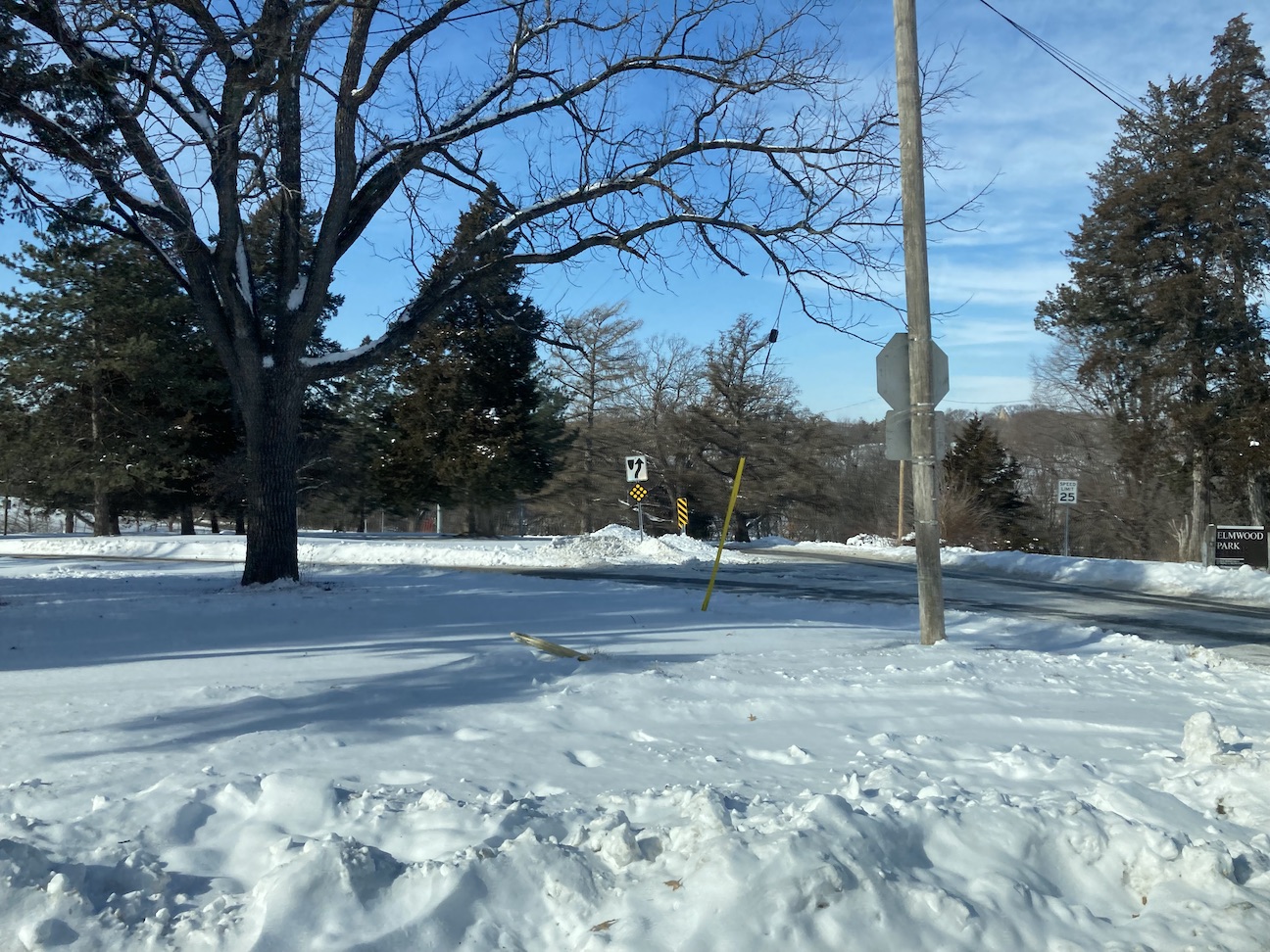
Portion of Elmwood Park’s border along 60th Street, just north of 808 South 60th. Could this have been an early caretaker’s home site?
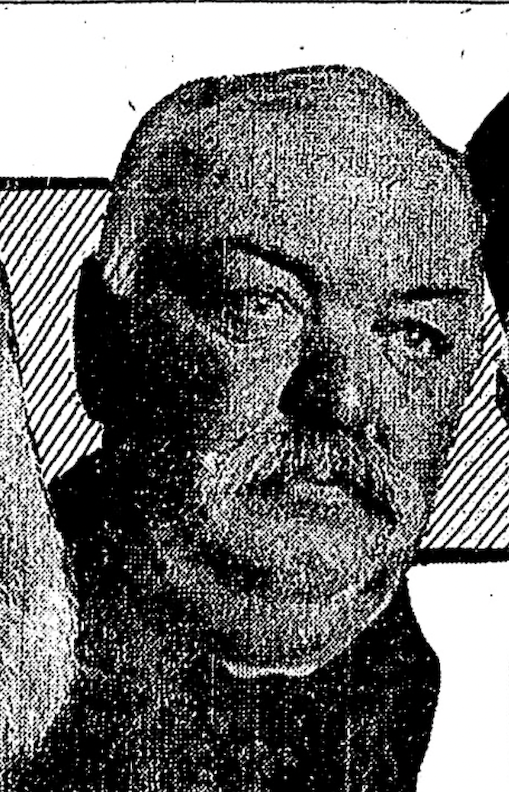
- OWH archives. George Cole was featured in an article about long time Omaha employees. “George Cole, caretaker, Elmwood park, twenty-four years.”
The Curious Clubhouse and Locker Room
A big clue came when the Elmwood Park board made moves in the winter of 1916 to buy a house at 5912 Leavenworth on two lots. This house would serve as the club to the newly formed Elmwood Golf Club. This new Elmwood Golf club, used the new municipal course in Elmwood park incorporated for $100,00 and proposed to sell shares at $100 each. “Probably the best move so far made by the club is securing of a permanent home at Sixtieth and Leavenworth streets.”
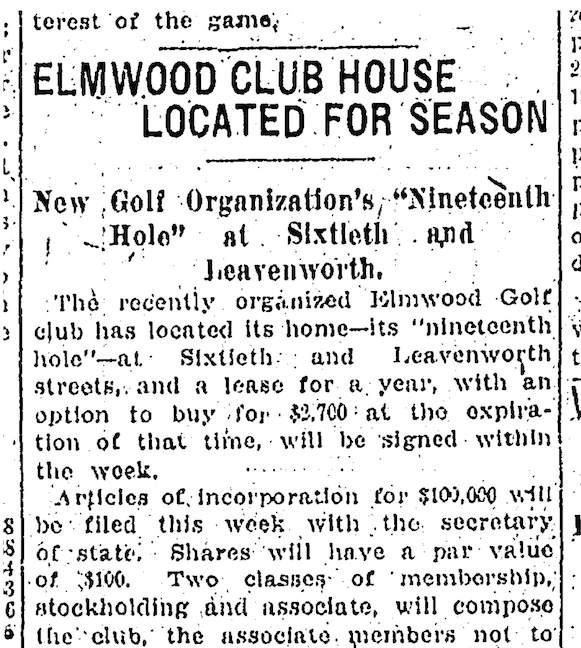
1916 Feb. 29: OWH archives. “There is a 7 room house on the two lots, 100 by 140 at Sixtieth and Leavenworth Streets. There is ample room in the yard for a putting green of sizeable proportions and a tennis court. There will be room for locker space and shower and tub baths. Caretakers will be on hand all year to care for the wants of the members. The club is to be dry.”
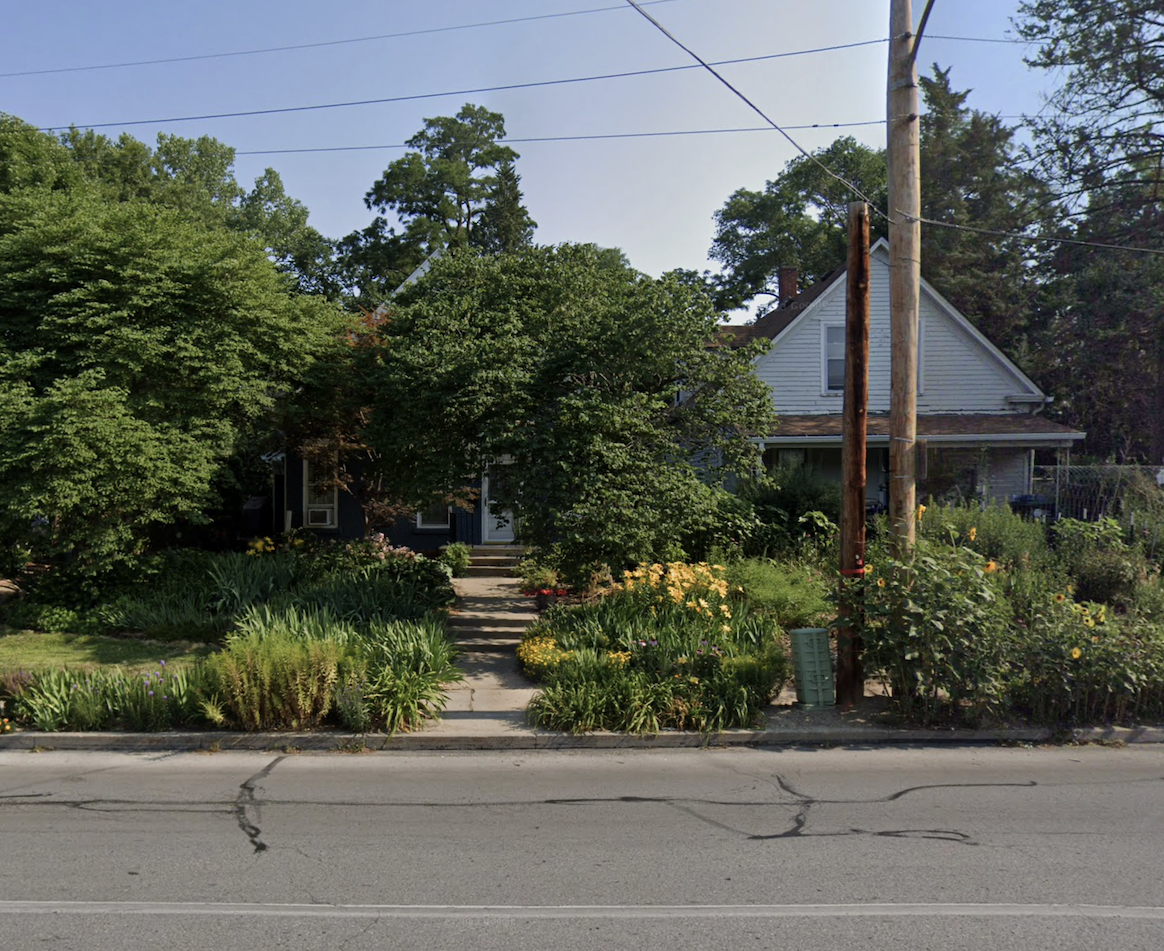
5912 Leavenworth is seen on the left. She is a gorgeous front gable girl with the most delicious garden. 5912 is a storybook cottage. She had a perfect color scheme of deep blue with a red clay tile roof but I think the clay tiles might be gone now. But in my case, I like 5912 particularly because of its good feelings. At any rate, you must go have a look.
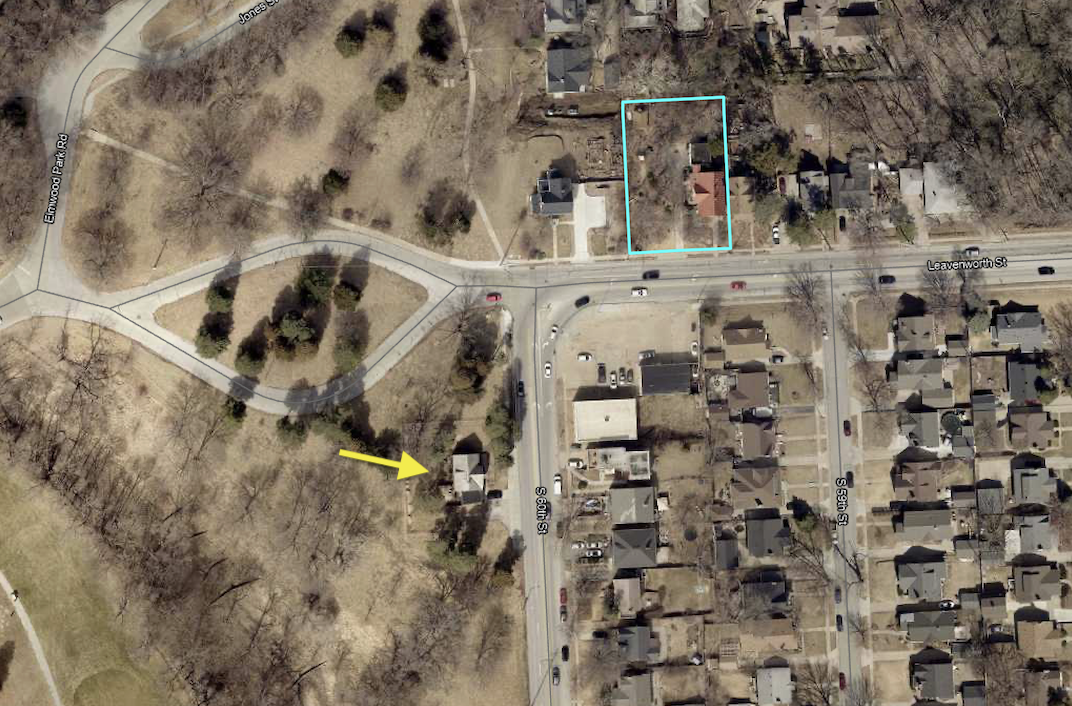
5912 Leavenworth’s large property is outlined in turquoise. The yellow arrow continues to point at 808 South 60th for reference. Image borrowed from the Douglas County Assessor site.
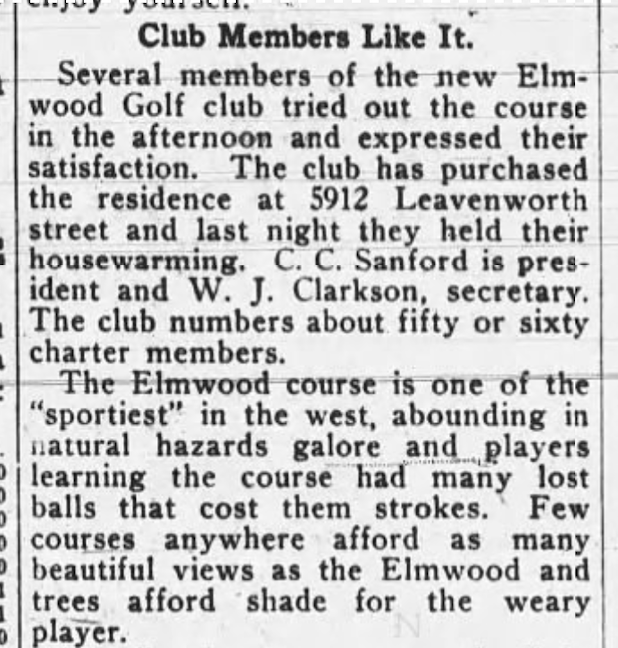
Omaha Daily Bee August of 1916: Club purchased residence at 5912 Leavenworth for their golf club. By the following May 100 new lockers had been installed in the house (!) and half a dozen showers added. For these reasons alone, I will go on record and say that George Cole and family most likely did not live in 5912 Leavenworth. This was not the park caretaker’s cottage.
It wasn’t until February 20, 1924 that the Elmwood Golf Club, Inc at 5912 Leavenworth Street was successful in getting the property placed in the name of the club and the deed recorded.
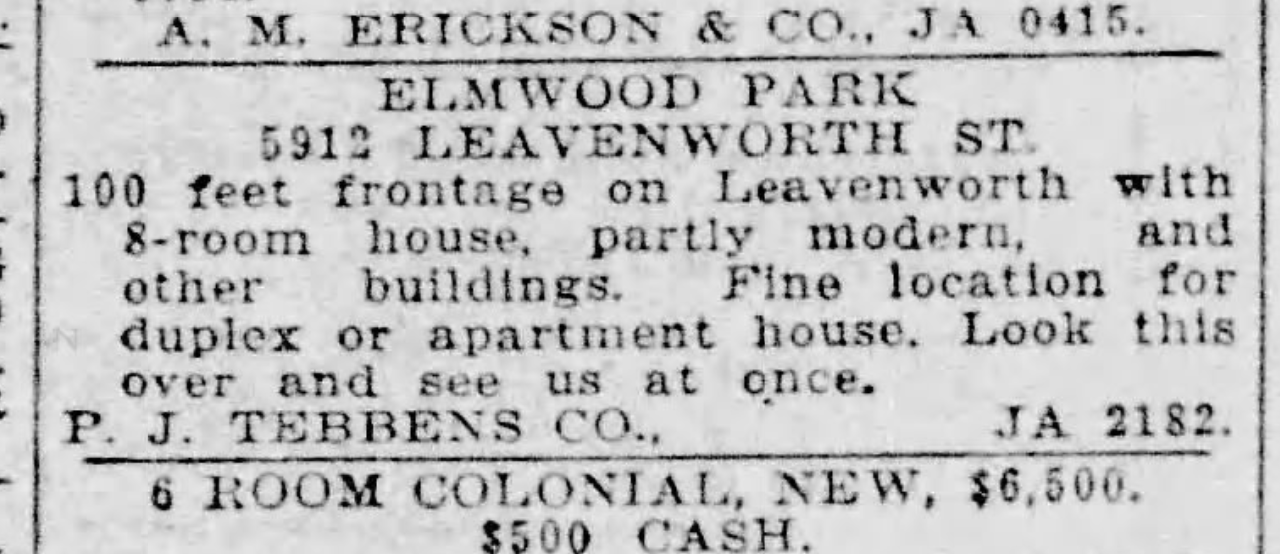
OWH archive. May 1926. But the clubhouse, although bought and paid for, was short lived. 5912 Leavenworth was for sale. By this time it was called a locker house, offered 125 lockers and only three showers. “Other buildings” interested me. By August of 1928, an E. K. Murray was sinking $4,000 into altering his new home, according to the building permit. It’s been a residence ever since.
Death of George Cole
In November of 1917, at just 59 years of age, George Cole, died in his Elmwood Park, after twenty-five years of service to the park and the people of Omaha. “He was giving instructions to a number of men at Elmwood Park who were fixing the golf links, when suddenly he dropped to the ground and before medical air could be obtained, he died.”
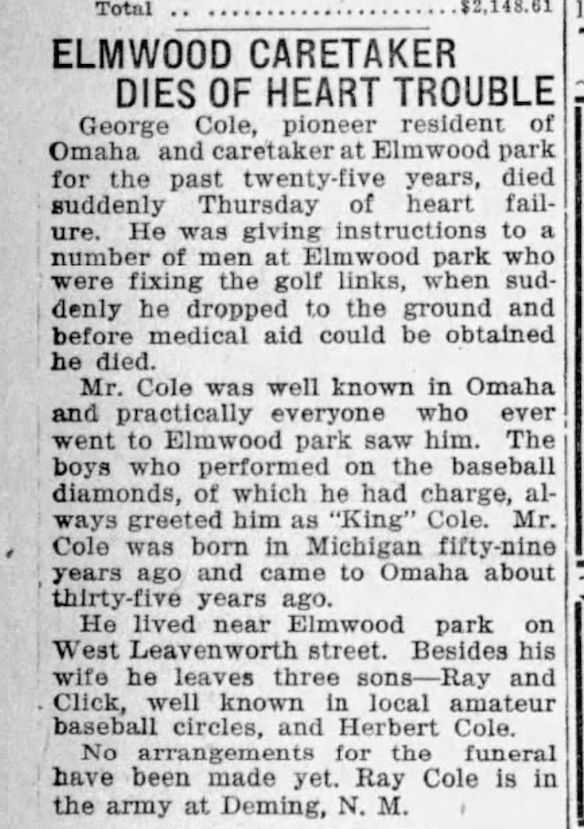
November of 1917. OWH archives. Another clue: “He lived near Elmwood Park on West Leavenworth Street.” Not within the park. Confusion rules this case.
Wife Anna Cole and sons would sell off some of their properties in the following years, 5423 Leavenworth Street—the former Tasty Pizza house, then serving as a grocery residence, was one of them. As I had previously tipped off, the US Census of 1930 indicated that Anna Cole, lived with son Ray Cole, his wife Mary, and their son Charles at 428 South 60th Street (also no longer an Omaha address) but pretty much right where Leavenworth turns into 60th Street to the south.
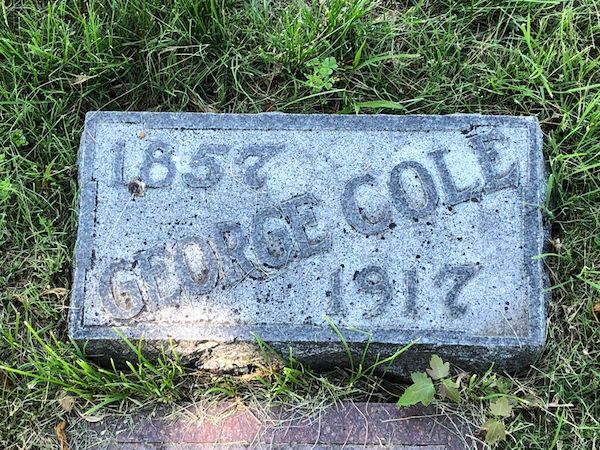
Mr. George Washington Cole was buried at Westlawn Hillcrest Cemetery. Gravestone photo by Keith Gee, borrowed from Find a Grave.
6001 Leavenworth Street
Another reference to an Elmwood Park caretaker living at 6001 Leavenworth Street (non extant address) fell into the dossier in an unexpected way. The Omaha Evening Bee Dec 1921 made mention of a J. P. Grace of 6001 Leavenworth Street, who had his right foot cut off by a Missouri Pacific passenger train at Fifteenth and Nicholas Streets. Mr. Grace was the newest “watchman” of the Elmwood Park, working for Commissioner Hummel’s department. The Bee reported no one saw the accident but The World-Herald detailed that Grace fell beneath the wheels of a trains. “Grace was employed as watchman in the park department.” Elmwood Park that is, by his resident address considered within Elmwood. Interestingly J. P. Grace had long been a magnetic talisman of the unlucky sort–his uncanny ability was discovering horrifying, newsworthy street events and their victims—in 1891 Grace witnessed a brutal fight between a circus cook and a defenseless waiter, whereby the waiter’s skull was crushed in with a tent stake. In 1902 Grace discovered a Colorado man lying in a pool of blood in downtown Omaha with a broken jaw and hair pulled out from being dragged on the pavement. By 1903 Mr. Grace found a dead body on the train tracks of a woman run down and killed by an Illinois Central switch engine. “Grace was the first to notice the mangled remains of Mrs. Sayles,” after apparently leaving for his dinner at home. Now were these all the same J. P. Grace of Omaha? Regardless, from what I could track down, Elmwood Park caretaker J. P. Grace didn’t work in the park after his own horrible accident. Note to self: get back to J. P. Grace of Omaha.
Very Side Note: Office of the Caretaker
I only include this because I was overturning every possible rock to find a house building at this point and I think this is interesting.
According to an Omaha World-Herald article dated August of 1923, a “trim brick building known as the administration and recreation building” was erected to serve as “office of the caretaker.” I would track this building but it appeared that it never served as housing for the Elmwood caretakers and their families. Below describes the process for checking into the Elmwood Park tourist camp, where motorists would stay in the park. “Maintained for those passing through the country.” The park was becoming more and more popular with motorists. This ties in to our next clue.
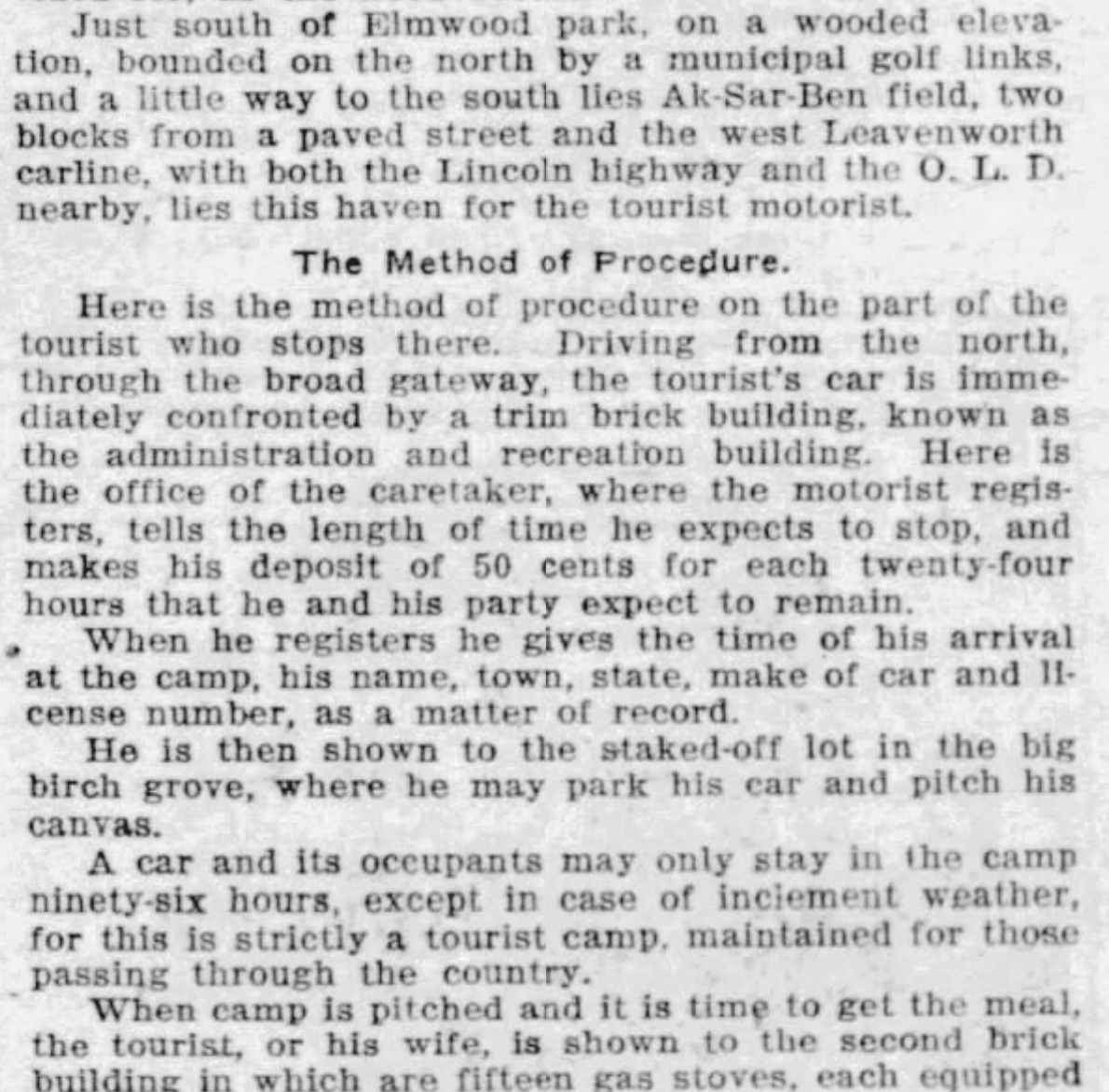
**Addendum of February 4, 2024*** Omaha Famous Kristine Gerber just reached out with photographic evidence of the Elmwood Park administration and recreation building that once served the tourist camp. She had found these images in the University of Michigan’s Special Collections Library when she was working on The Lincoln Highway, Nebraska’s Longest Main Street. These were all taken in at the Elmwood Park Tourist Camp in 1923.
Thank you, Kristine Gerber!
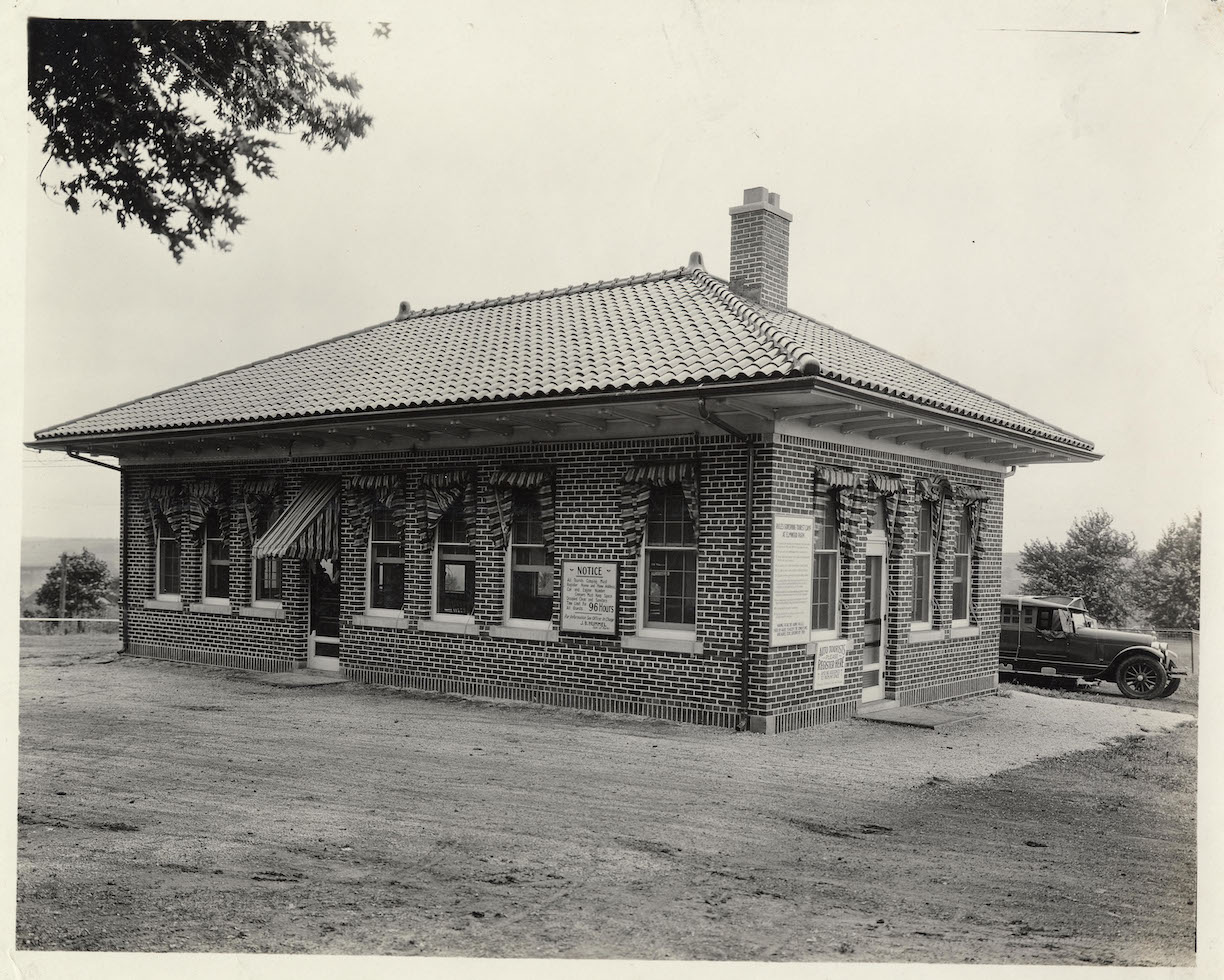
Exterior of the Elmwood Park Tourist Camp administration and recreation building in 1923. University of Michigan’s Special Collections Library.
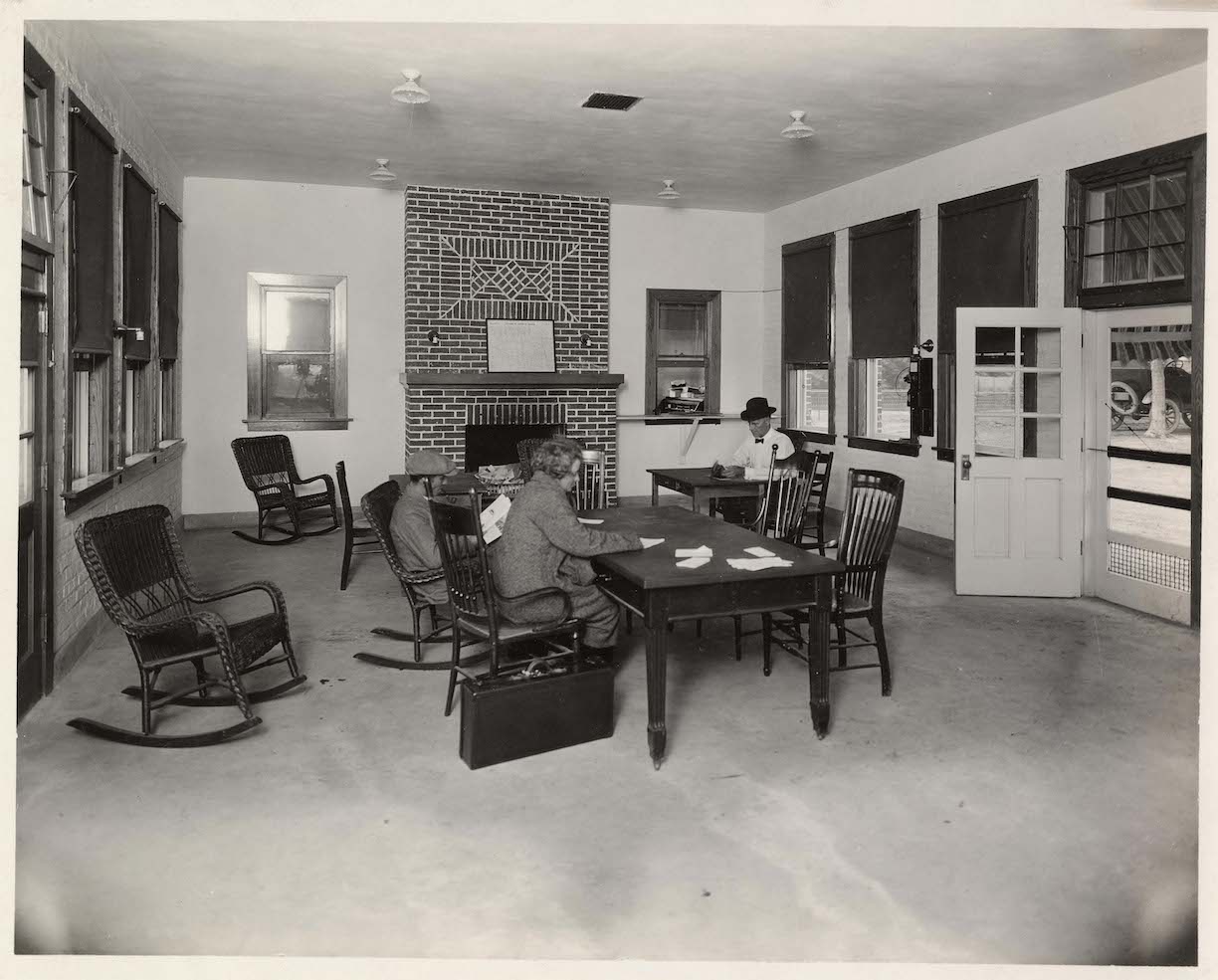
Interior of the Elmwood Park Tourist Camp administration and recreation building in 1923. University of Michigan’s Special Collections Library.
The New Neighbors
No doubt because of the steady flow of locals and vacationers toodling through the Elmwood Park, new buildings had sprung up at the intersection, but this time, on the southeast corner of 60th and Leavenworth. By 1924 the Standard Oil Company filling station had moved into the southeast corner of 60th and Leavenworth, caddy corner from the entrance to the park and right at the streetcar line turnaround. Standard Oil Co had erected the building “to serve park tourist and autoists who camp at the tourist park.” This address is now logged as 5923 Leavenworth. Since 1924 this corner has had a service station-used car lot function.
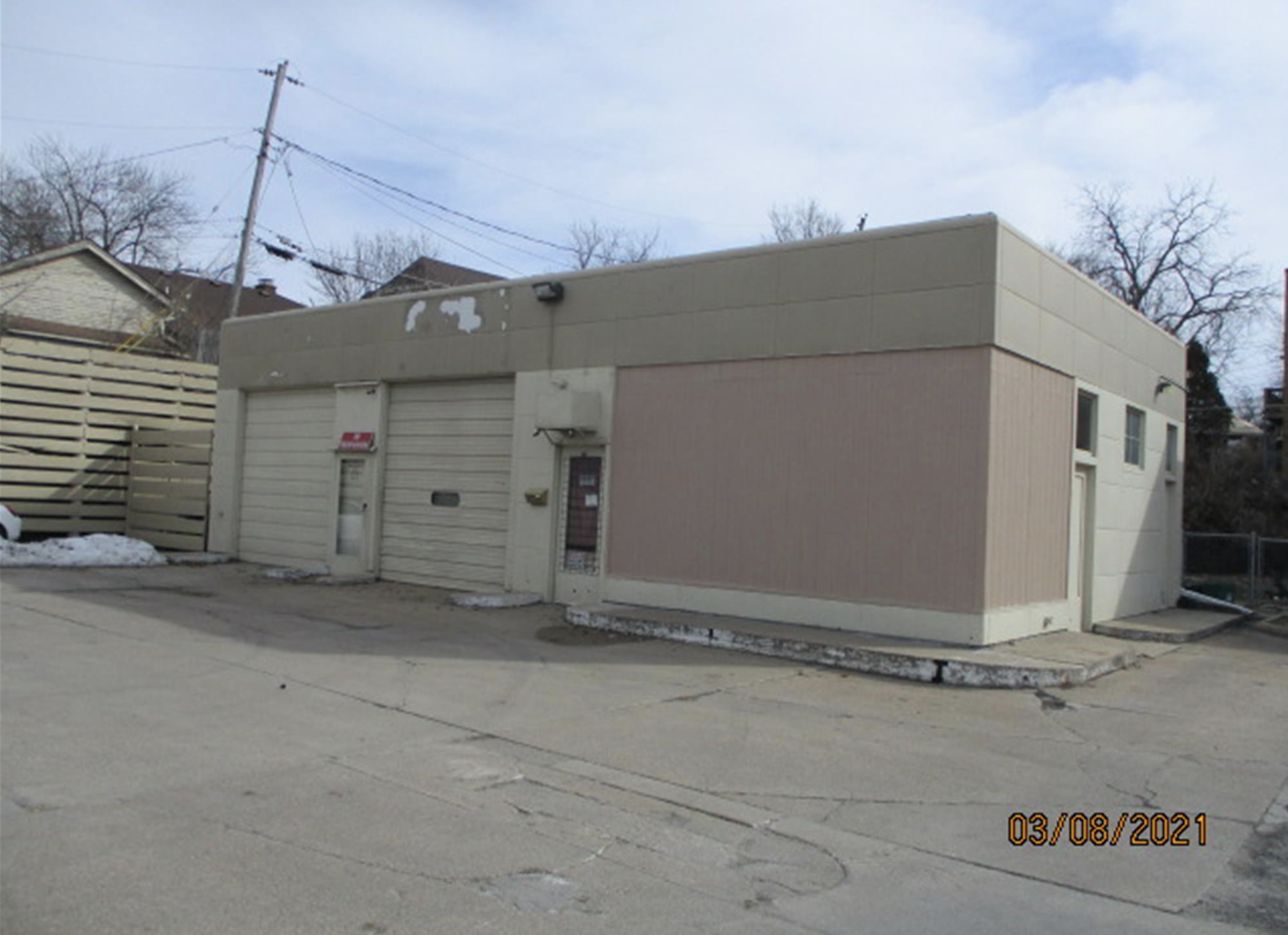
How 5923 Leavenworth looks today. It might seem odd to say but this is actually my favorite corner of the whole area. I love to imagine how this old gas station looked back in its day—or how it looked even in the 1950s.The filling station building is nestled in the absolute corner of the lot, with the front elevation (north) facing Leavenworth. Photo borrowed from the Douglas County Assessor site.
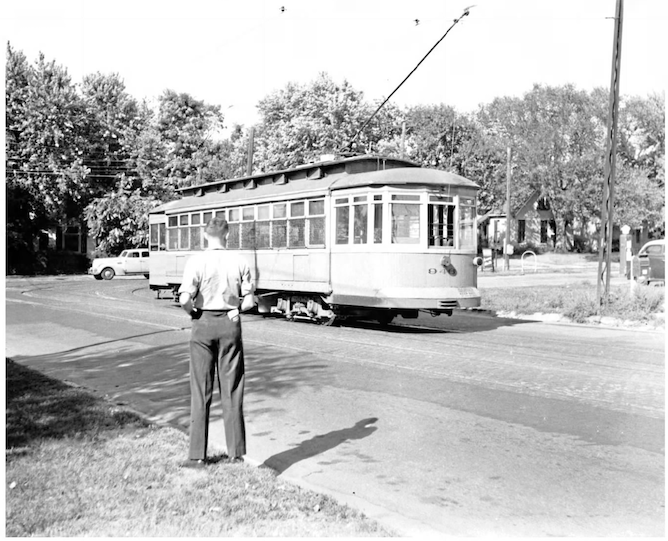
Our only slight peek at the Standard Oil filling station comes from this fantastic1942 photo by Richard Orr. Streetcar No. 946. Camera at about the caretaker’s house on 60th facing northeast angle. Borrowed from his incredible book, O& CB: Streetcars of Omaha and Council Bluffs.1996.
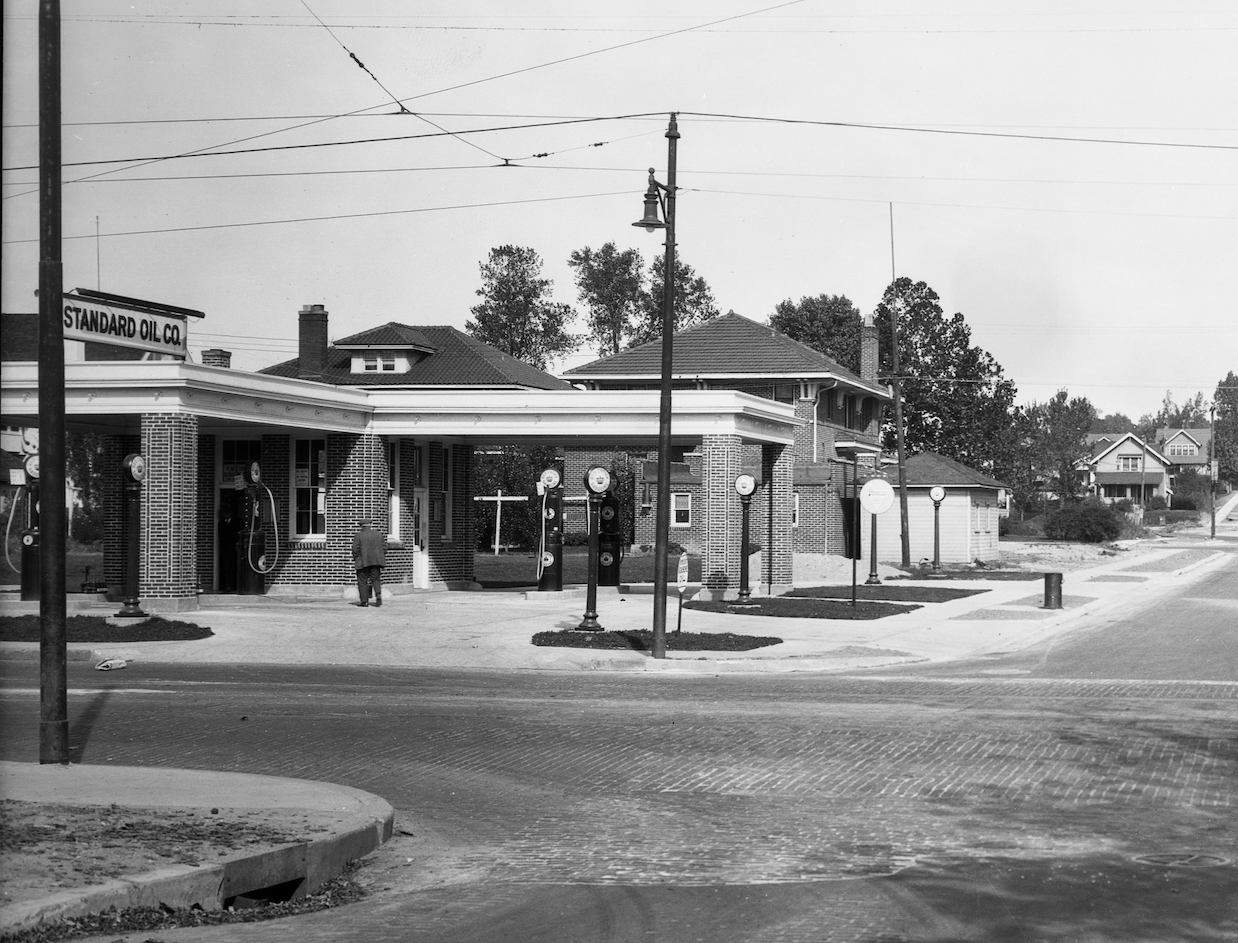
I show this as an example only because of the timeline. The Standard Oil Company had built this station at 30th and Cuming Street in 1926, two years after constructing their gas station at 60th and Leavenworth. Photographer looking north at 30th Street. Photo by Bostwick, Louis and Frohardt, Homer. The Durham Museum.
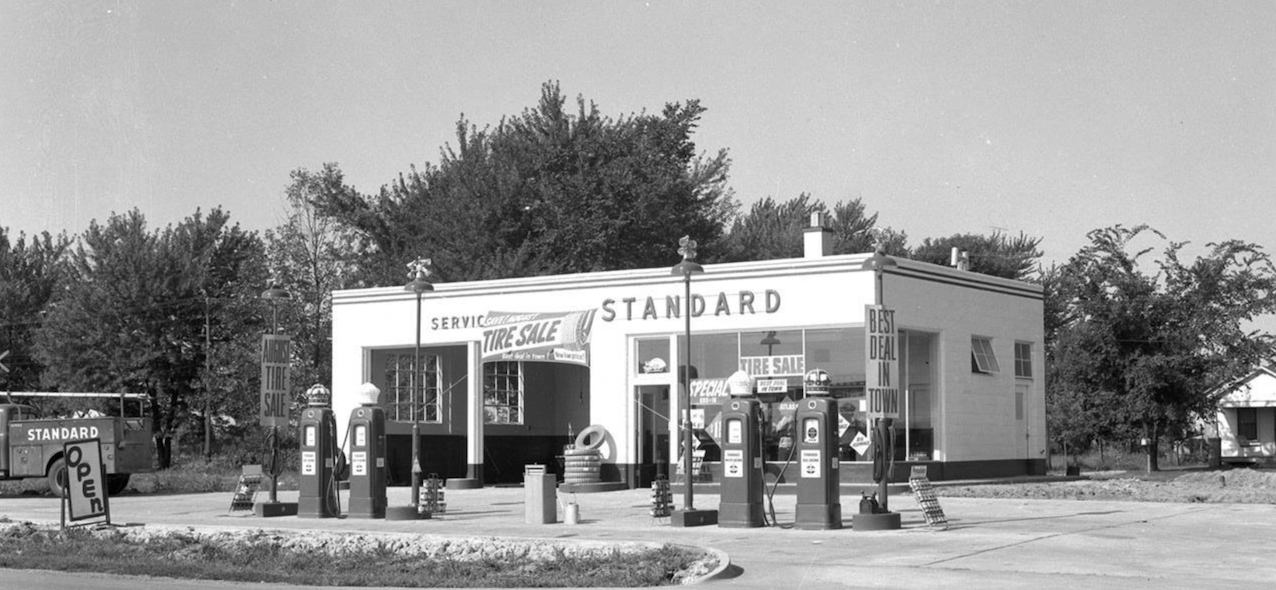
This 1950 Missouri Standard Oil filling station gives an even better example of the modern updates that 5923 Leavenworth endured in Mid-century years, bringing it to its current state.
Shortly after the filling station arrival, in November of 1924, a new brick building with a tile roof, offering two store bays opened. This structure was directly to the south of the Standard Oil station. George T. Kauffman operated the Elmwood Park Pharmacy in the northern bay and Morris Frieden leased the southern space for a grocery and meat market. This building is now known as 807 South 60thStreet.
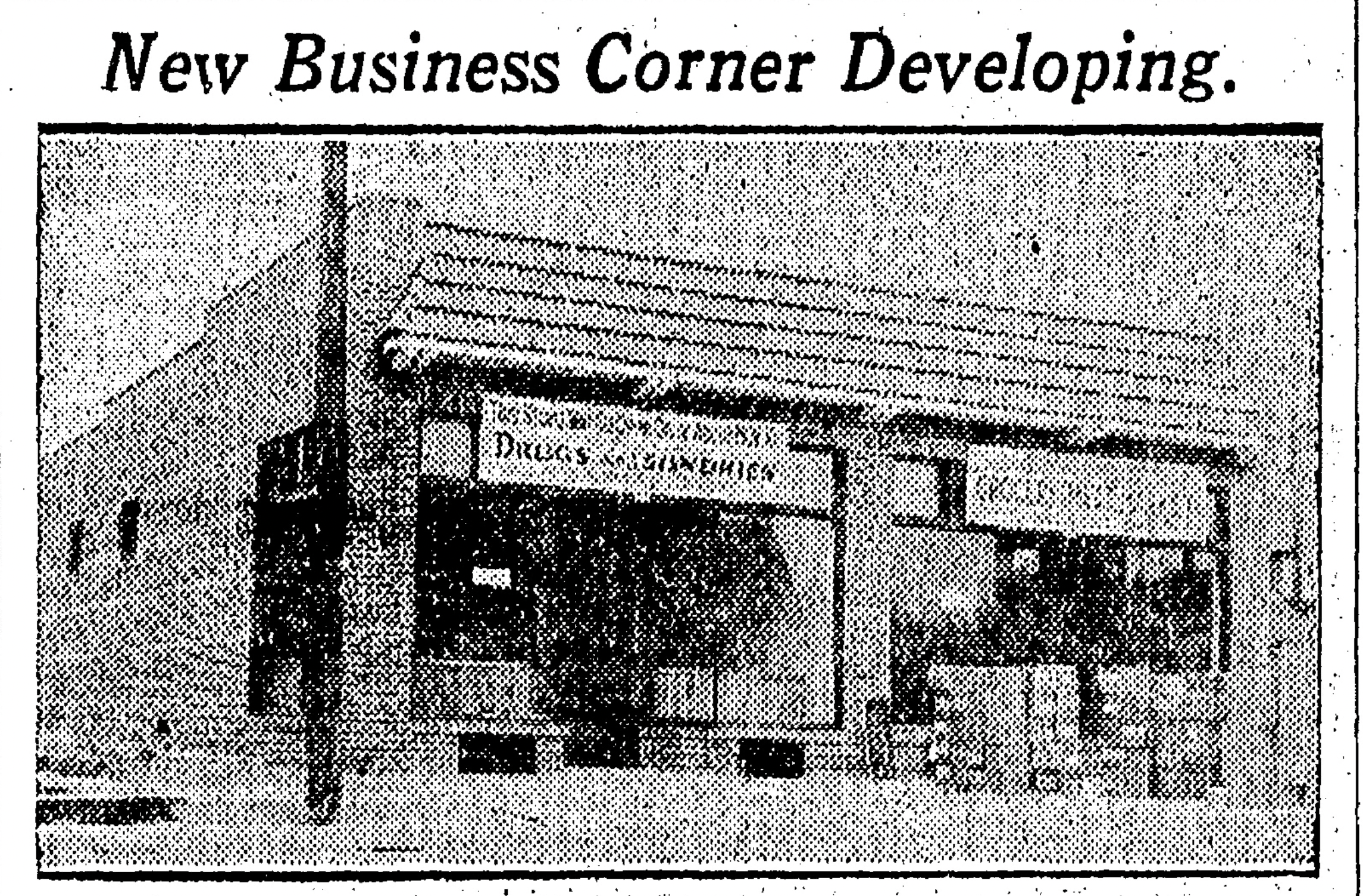
1924. OWH archives.

A year later, in 1925, the building is for sale. Elmwood Park pharmacy. Very Cool.
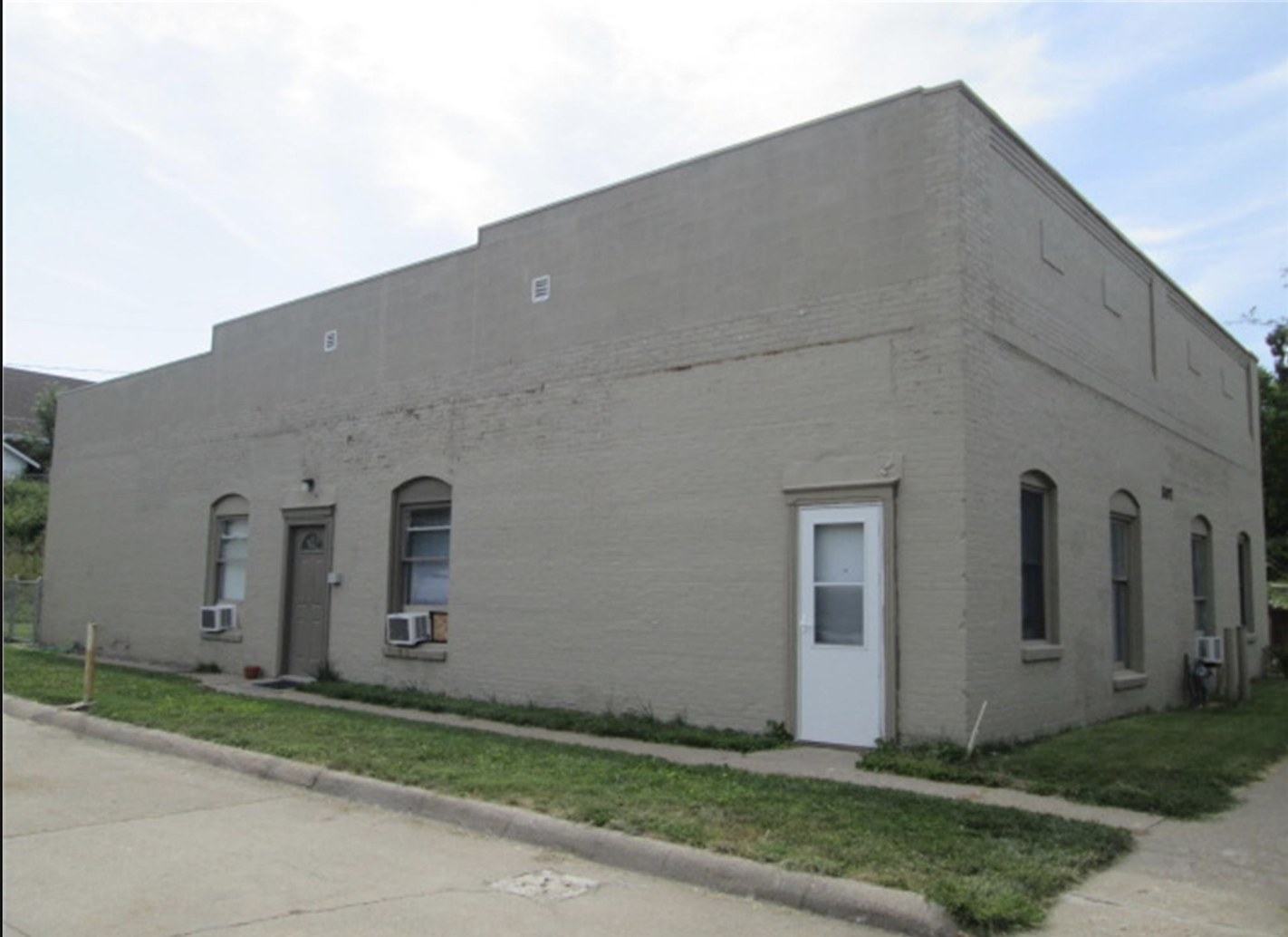
How 807 South 60th looks today. Refashioned in 1952. This building is across the street from the Tudor at 808 South 60th Street. I believe these are apartments now. The gray and white doors face the north parking lot of the once gas station on Leavenworth. Series of four windows face 60th Street. It is all a mystery.

Current aerial borrowed from the Douglas County Assessor site. Red arrow points at the Standard Oil filling station and the green arrow points to the pharmacy-grocery store building.
Meanwhile this illuminating landowners’ map to follow shows how the whole area is shaping up. Elmwood Park is depicted in a fairly square manner.

1925 Dundee Township. Image taken from the Douglas County Atlas. Historic Map Works Rare Historic Maps Collection. Top of the map is north. Solid black line through the center is Dodge Street. Lower black line is Pacific Street. Is that Cole Creek running through the park and did they name it that after George “King” Cole?
Charles Loftman
Charles G. Loftman was the caretaker of Elmwood Park by at least 1923. I would find the 6001 Leavenworth address listed time and again in the Omaha City Directory corresponding with his employment years. Loftman emigrated to America in 1884 from Sweden. His wife Matilda “Lillie” Johnson was also a native of Sweden; they married in Douglas County in 1894. They had a daughter, Vera. At the time of the 1920 U. S. Census the family lived at 2433 Spaulding and Loftman worked as a school janitor. Scrutiny of the 1930 U. S. Census revealed all close by neighbors on Leavenworth accounted for to include the John Rohwers at 5910, the Spencer Potters of 5912, the Leander Reynolds of 5922. When I arrived at the Loftman couple, they were in their own category between “Leavenworth” and “Elmwood Park” and where it should read house number, it was scrawled “none.” Of note, another man was in this vague category, not residing with the Loftmans but apparently living in the park in some building without a house number: Robert Nurhling, a 30 year old, “helper” in the “kitchen.” This was possibly explained by information I had previously found when Elmwood Park had a formal camp kitchen built for their touring motorist camp venture. I’ve got to wonder if the census collectors found Mr. Nurhling lived on a cot in a corner of the camp kitchen, which wouldn’t be unheard of for those times.
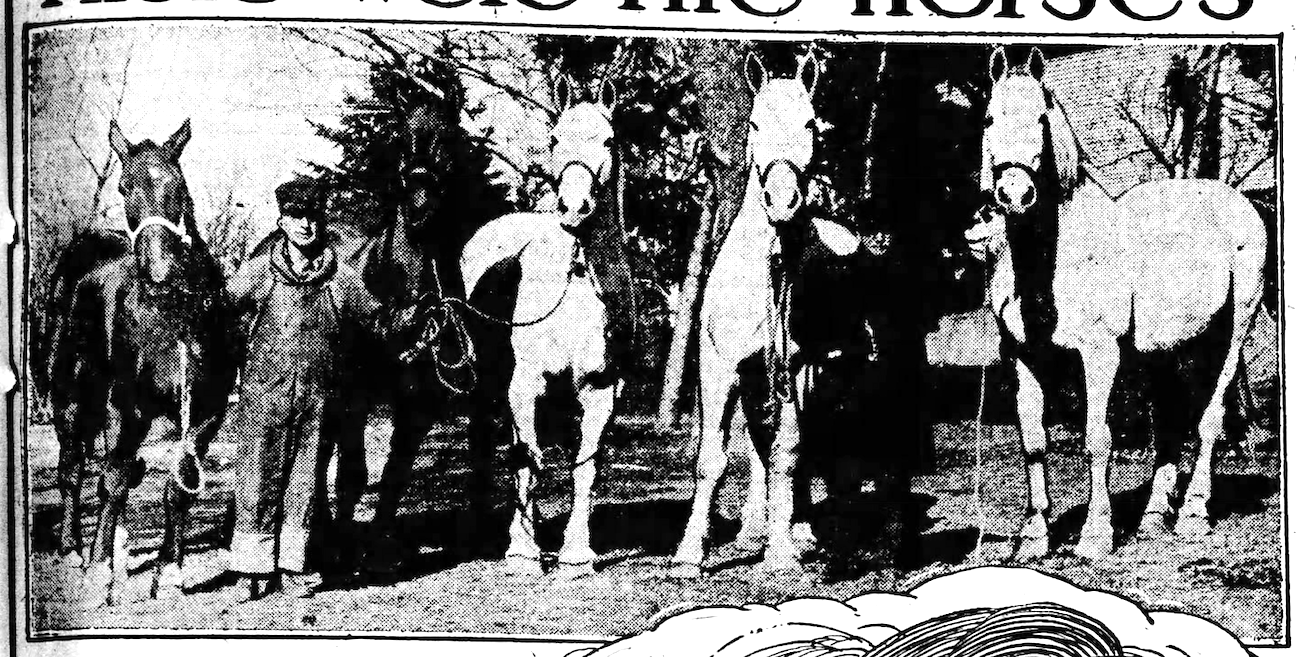
OWH archives. 1926 Group of retired city fire horses, now the property of the city park department. Five of them were quartered at the Elmwood Park barns under the charge of Charles Loftman, park caretaker. Loftman seen on the far right. The horse riders of Elmwood Park became something of an issue in the Twenties. Evidently there were issues with golfers, campers, picnickers and strolling folks enjoying the park in communion with those riding through on horseback. An article from 1929 Elmwood Park described caretaker Charles Loftman being “assailed with strong language by riders when they rode among the people at their tables and he tried to stop them.” It must have been a complicated job in those days trying to both caretake and police the park.

Beautiful, colored postcard of Elmwood Park in the 1930s.
From what I could find, Charles Loftman left the parks department employ in 1933. Full disclosure and neurosis compels me to share that by the time of the 1940 Census collection, Loftman was back living in his original 2433 Spaulding home, a parttime bartender at a local tavern at 78 years of age.
Theories—I wonder if when Park Commissioner Hummel failed to win election to park commissioner for the 1933-36 term, did Mr. Loftman leave with him? Or was Loftman ousted when Hummel’s political term ended? There were two terms in those years that Hummel wasn’t the park boss. And that is when our 808 South 60th Street Tudor became a scandal.
The Troubles of Frank Frost
Frank Frost first went on the council ballot in 1933. Frost was a local auto battery dealer; former Union Pacific stenographer; former accountant and office manager for the packing companies. He secured the City Commissioner position and by that May his park department campaign trumpeted his hopes of running off the tourist camp and turning it into the golf clubhouse. He also wanted to reroute the Elmwood links. That was my first introduction to Mr. Frost. Frank Frost did win his Park Commissioner position.
**Addendum of February 6, 2024** Sara Sharp gently corrected me that her grandfather was Frank L. Frost, a very different Frank Frost than the Omaha Park commissioner. Her grandfather Frost would go on to serve a remarkable 42 years on the MUD board until 1983, followed by her father, Jack Frost. She wrote of her grandfather: “He left school and home at age 12 to work, then later put himself through night law school. He was a working attorney in the Keeline Building for many years.” She also shared that having two Frank Frosts in town at the same time caused some local confusion—which I obviously fell prey to. I did wonder how our Frank Frost was a commissioner, an attorney, an accountant and an auto battery dealer. I thank you for the clarification, Sara!
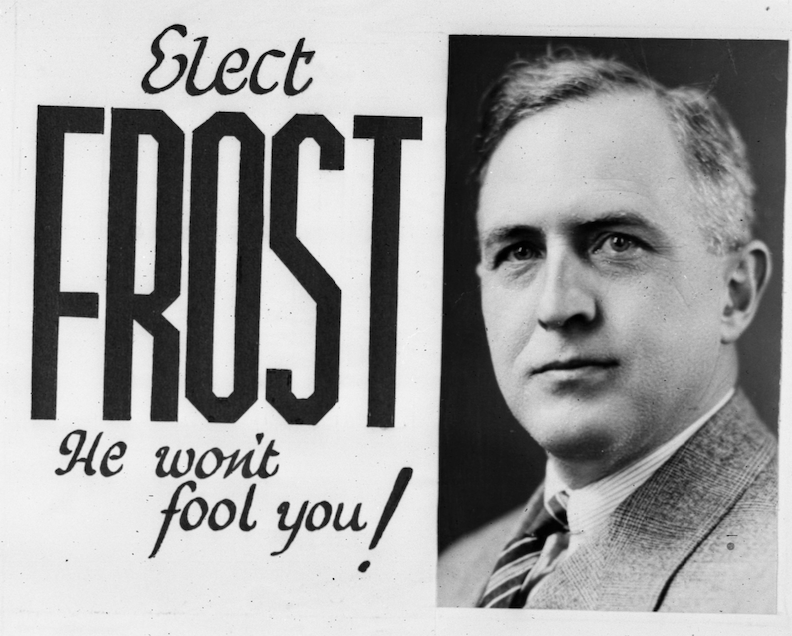
Frank Frost was a city commissioner and also owned Frost Battery Company. Photo by Savage, John. Publisher: Durham Museum.
Frank Frost started to make waves on day one into his new job as Park Commissioner when he ousted Jack Shearman as golf pro at Elmwood Park. We will find Mr. Shearman again in our case files.
When the city hit record high temps just a few weeks later, there were other complaints that Frost didn’t have any of the city “wading ponds” opened in the parks because of funding. One day later an article made mention that Frost had ordered 24-hour watering of greens and fairways at the Elmwood Golf course amidst the hot spell and drought. I could go on and on with public protestations but isn’t that what anyone in politics would endure daily?
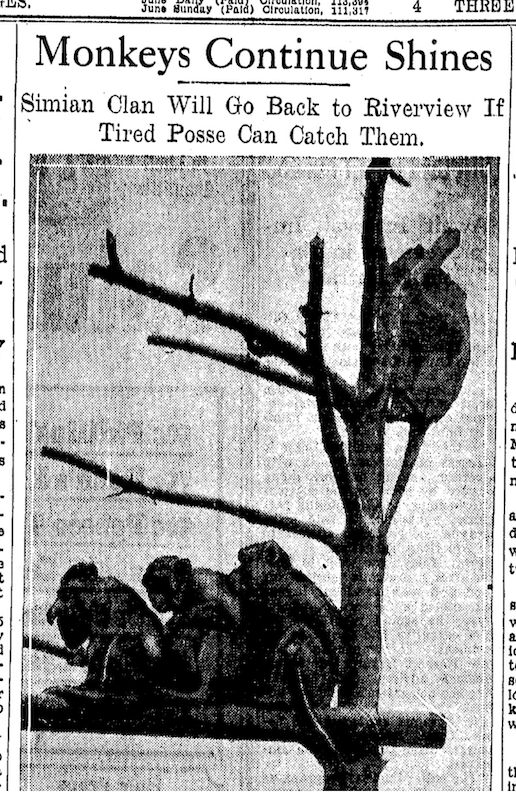
July of 1933. OWH archives.
Things got serious a week after that when Frost announced his “Monkey Island” idea being built in Elmwood Park “on the old parking lost used by golfers.” Monkey Island was north and west of the Happy Hollow Boulevard entrance, I estimate in the area where the Elmwood Pool is now. In Frost’s defense, I have found that many major cities in America launched Monkey Islands in this time period. “The wooded island, about 20 by 40 feet, will be surrounded by 10 feet of water. Monkeys from Riverview Park will be released on the island and will cavort in the trees. Other cities using the same plan, have found that the monkeys won’t cross the water.” Thanks to Omaha friend, Pat Lazure for sharing information about Monkey Island oh so many years ago. Sorry it has taken me so long, Pat.
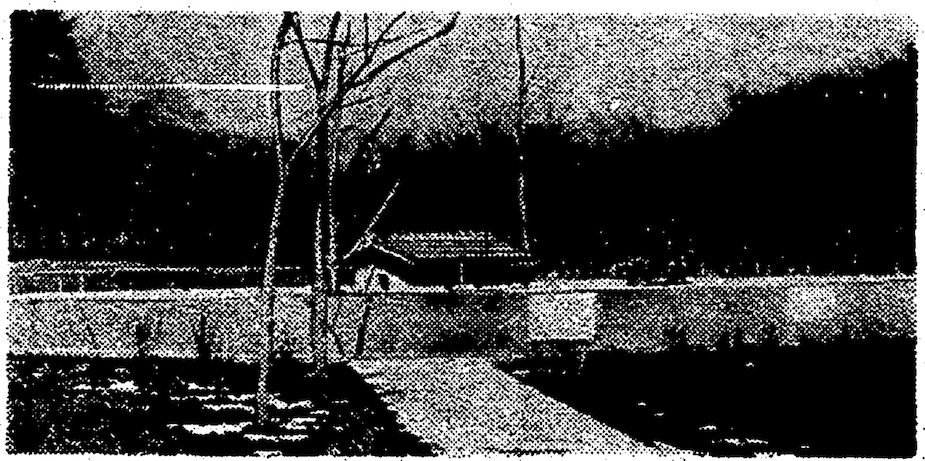
1933-1936. Monkey Island. OWH archives. Lagoon topped by a small bungalow housing the monkeys.
Many local journalists have written about Monkey Island at this point. So I will send you in their direction for more information. See these two links for the great details!
The monkeys, the golf course—these were the well publicized Frost issues. But you smarties probably already knew the Tudor at 808 South 60th would become involved.
The Case Against Charles Lindsey
By June of 1933 local meetings were held to discuss plans to remove Charles Lindsey, newest caretaker Frank Frost had appointed to our Elmwood Park, among two others, from the city pay roll. Petitions were circulated when it was discovered Lindsey’s address was in Griswold, Iowa.
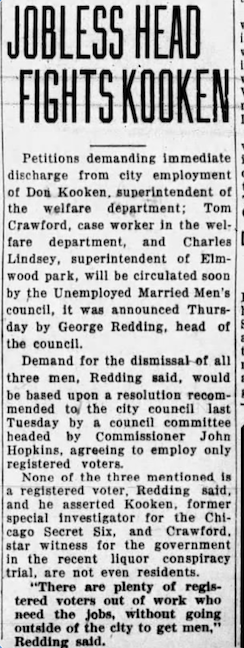
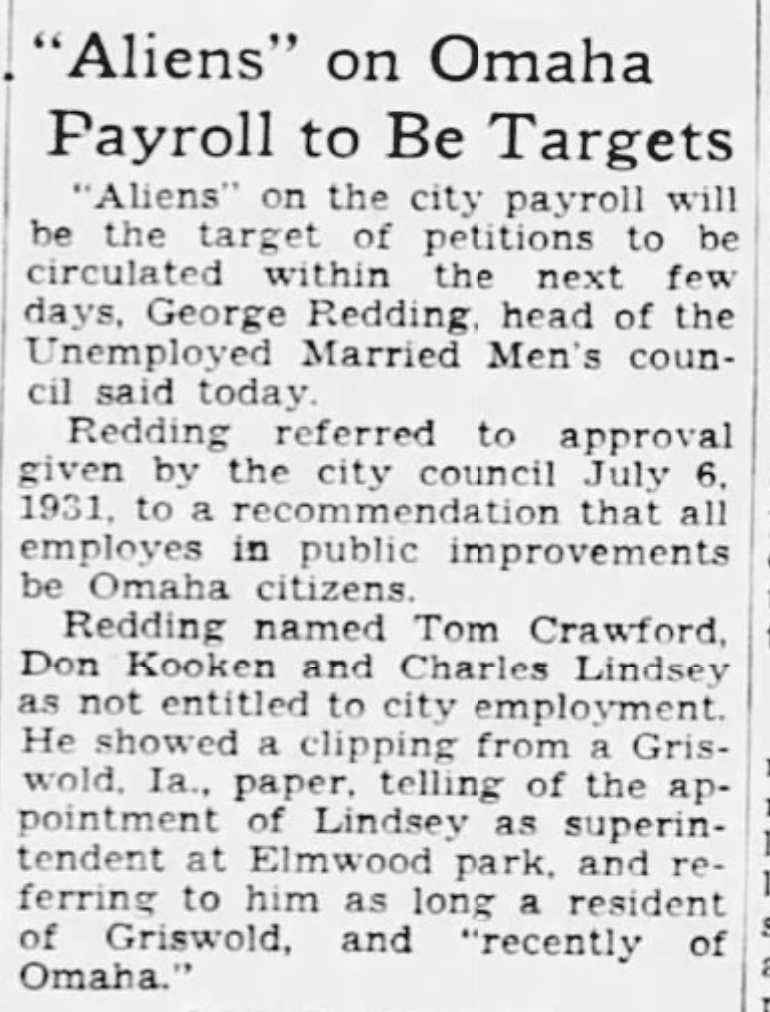
June 1933 Omaha Bee and June 1933. OWH.
August of 1935 it was exposed that Frank Frost had hired a Des Moines man, one Charles Lindsey (spelled Lindsay in some places) as the new caretaker of Elmwood Park. Lindsey was apparently father-in-law to a business associate of Frank Frost’s. The accusation was nepotism, before they called it that but considering the times, the real rub was stealing a good local job from a good local man. But here’s the quote I became obsessed with: “After he became Elmwood caretaker, his city-owned residence near the entrance of the park, was extensively remodeled. Rent fuel and utilities are furnished by the city.”
I trailed Charles Lindsey through the Omaha City Directory where he was living in town at that mysterious 6001 Leavenworth address. The 1934 directory made plain Lindsey had already assumed his role as Caretaker City Dept Parks and Public Property. Charles M Lindsey was born on January 30, 1870, in Bloom, Ohio. He married Isophene Norton in 1895 and they had three children during their marriage.
6001 Leavenworth is 808 South 60th Street
The 1935 and 1936 City Directories reveal Charles M. Lindsey living at newly named 808 South 60th Street. Upon moving to Omaha in 1933, Lindsey and his wife lived in the caretaker’s residence at 6001 Leavenworth. Park Commissioner Frost was accused of renovating this 6001 Leavenworth house into the 808 South 60th house. Lindsey was the center of a vigorous campaign attack on Frost during the city campaign, because it was being asserted Frost “imported” him from Iowa to occupy The Mansion.
It was an election year and Joe Hummel wanted back in as City Park Commissioner. Hummel was immediately upset about the Elmwood caretaker’s scandal and quickly named refashioned 808 South 60th The Mansion to play upon the taxpayers’ monies spent for what was considered a very posh house. The mansion was built for the caretaker by joint city, FERA funds and labor while Frank Frost was commissioner. Hummel: “That one out there has all the latest fancy nick-nacks and trimmin’s. It cost $7,5000 or eight thousand dollars if it cost a penny. I was afraid to go in for fear of scratching the floors or woodwork. I’m not suited to places like that. It had me spellbound for a while until I got to thinking that the taxpayers had to pay for it.” In another article: “Records in the park department do not show what the house cost. Whatever it was, the city paid 10 percent and FERA 90. The house was remade from an old frame structure which was the caretaker’s home in Hummel’s former administration.”
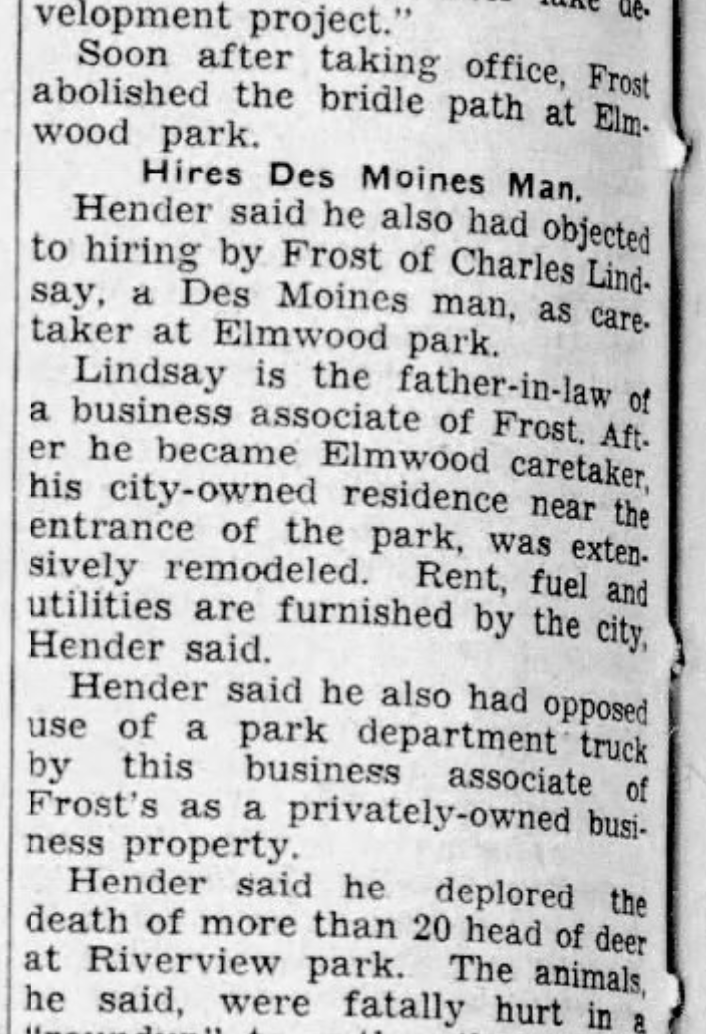
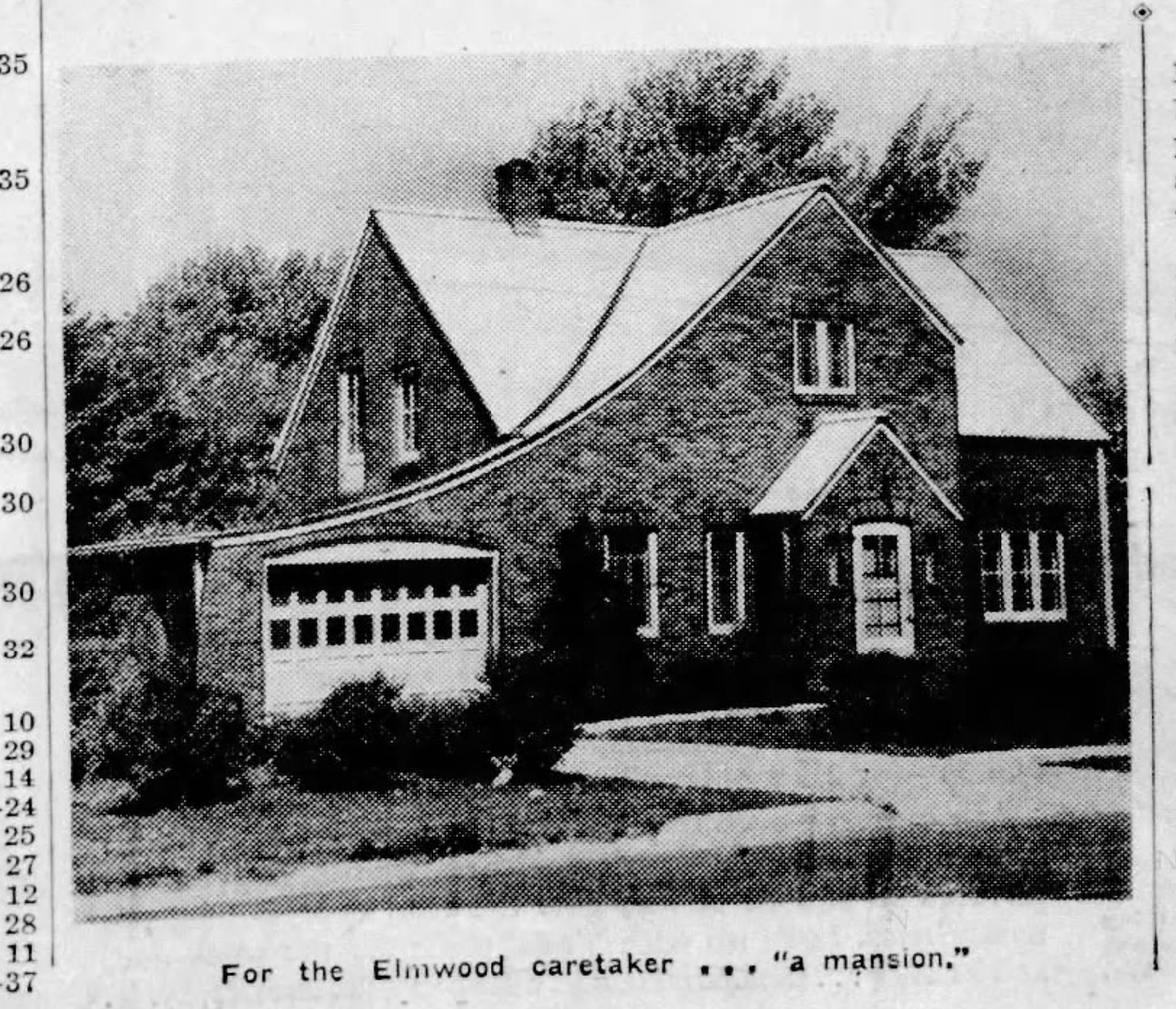
The money shot. Isn’t she lovely? Above article from 1935 OWH. Photo of 808 South 60th Street from 1936 OWH article. So after all of this time, 6001 Leavenworth was the site of 808 South 60th. It wasn’t on Leavenworth, after all. I wanted to know if it was a complete renovation, or if there were some bones left from the original wood frame structure. I would guess not. She possibly looked more like the wood frame cottages nearest on Leavenworth.
Frank Frost left the Park Commissioner office having been called the Chief Monkey Chaser; his local business would continue.
Joe Hummel is Back
Once in office, Joe Hummel made loud comparisons between the 808 South 60th Street caretaker’s mansion and his own humble wood frame home at 524 North 18th Street.
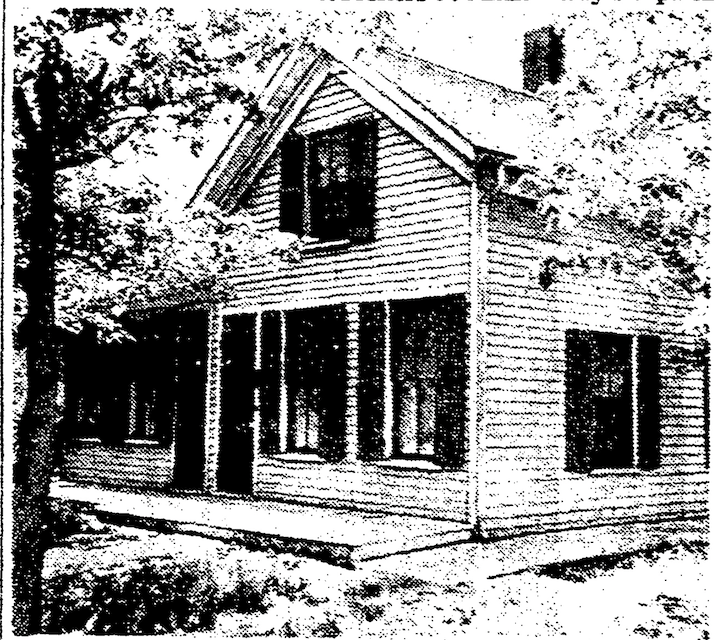
OWH. 1936. Joe Hummel’s home at 524 North 18th Street.
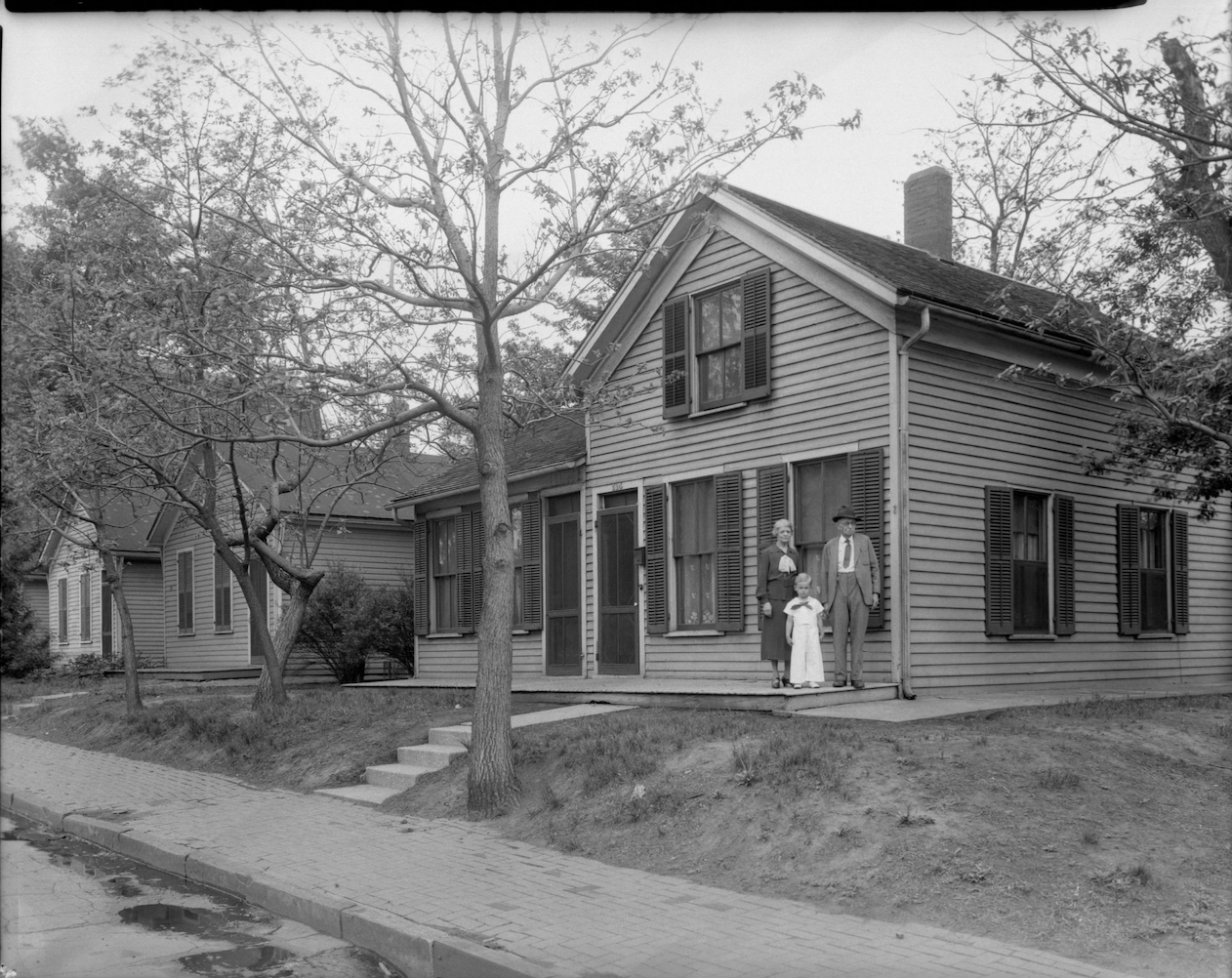
Joe Hummel’s 524 North 18th Street house.
From May of 1960: “A modest frame house at 524 North Eighteenth Street, once the home of the late Park Commissioner Joe Hummel at one time the center of a lively City Hall controversy is no more. It was torn down Tuesday to make way for a parking lot. Mr. Hummel lived in the seven room dwelling from 1863, when he was four months old, until he died there in 1942. The house figured in the news in 1936. The city, with the help of federal funds, had built a brick residence for the Elmwood Park caretaker.”
It was in the Commissioner’s words, a ‘blooming mansion’ and he resented that building because his own house seemed humble by comparison. The World-Herald printed a picture of both houses which seemed to verify Mr. Hummel’s claim. “My home is plain and old fashioned.. Whoever I put in the caretaker’s house will get a swell head, just living there.” Mr. Hummel suggested the Mayor move in instead. The Mayor didn’t take him up on the offer and Mr. Hummel also remained in his own residence.
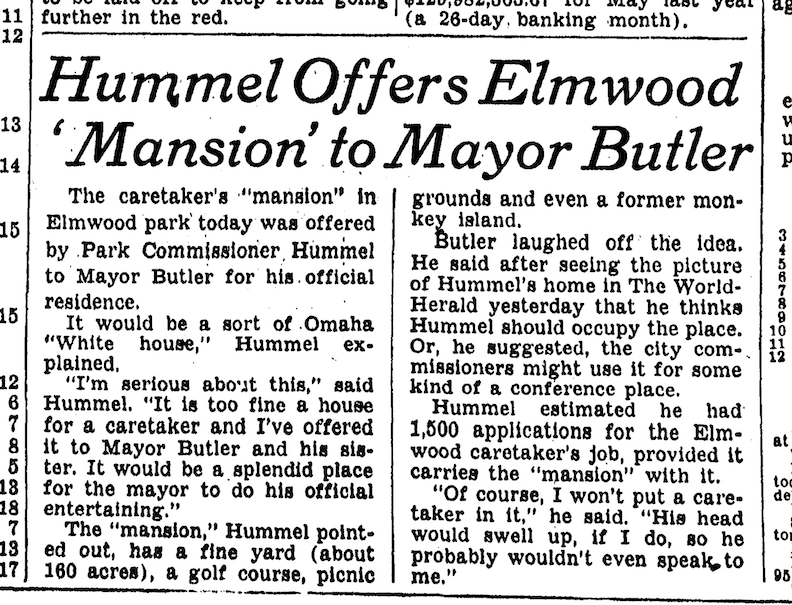
1936. OWH. “It would be a sort of Omaha ‘White House,’ Hummel explained.”
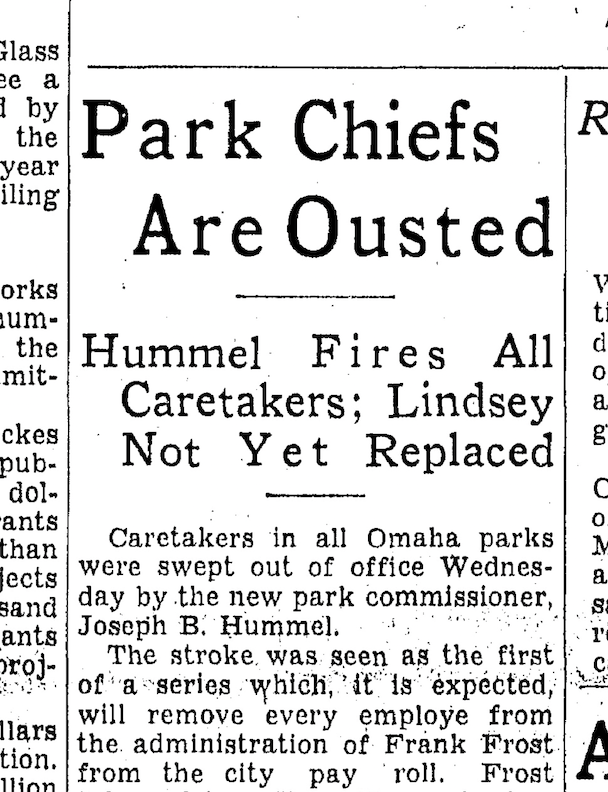
May of 1936. OWH. One of Hummel’s first lines of business was to let all of the current caretakers go. Obviously by the headline Charles Lindsey and his glorious Tudor was a thorn in Hummel’s side.
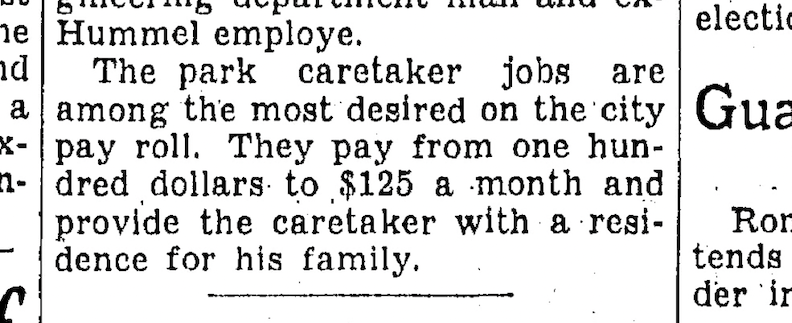
A bit of context from 1936.
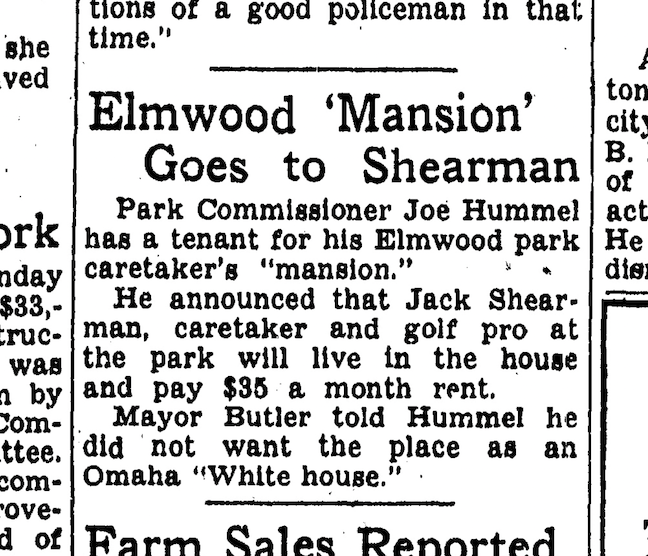
The ongoing drama of Joe Hummel. He would put Jack Shearman, the once Frost-fired Elmwood Golf pro, into the job of Elmwood Park caretaker.
Let’s stop over to that other wonderful mystery building within the park.
My Favorite Cottage was Never a Cottage
Also completed in about September of 1936 was the Elmwood Service Building. I was so surprised that it never was built as a residence. Joe Hummel was also surprised by this building and had another axe to grind. He thought about it for a year and decided in summer of 1937 to turn it into a picnic building.
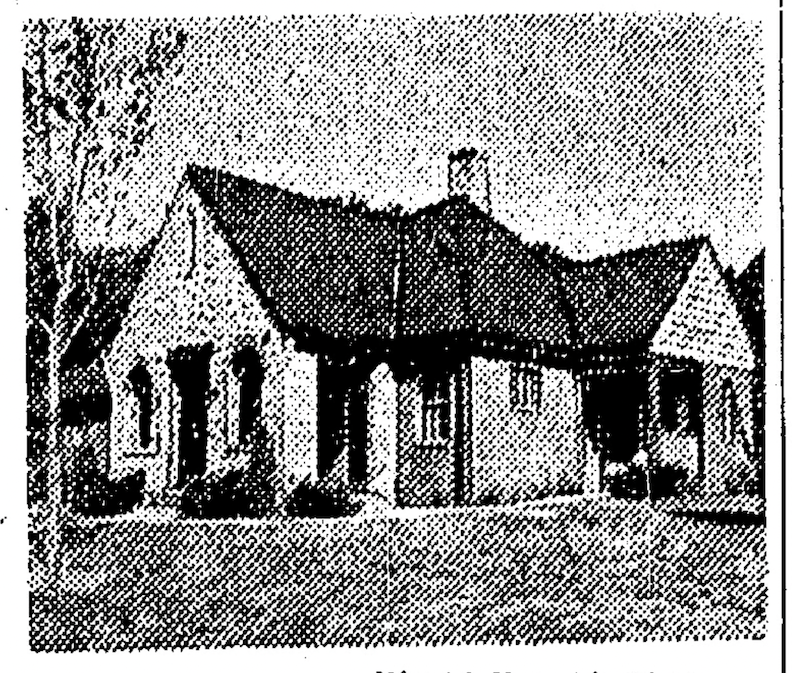
“The service center built with WPA labor, stands across the road from the renowned ‘Monkey Island.’ It cost $17,500. It was designed mainly as a garage to hold four trucks. It also contains a small office or waiting room and men’s and women’s lavatories. Outside the building looks more like a nice bungalow type home than a garage” announced the World-Herald. 1936
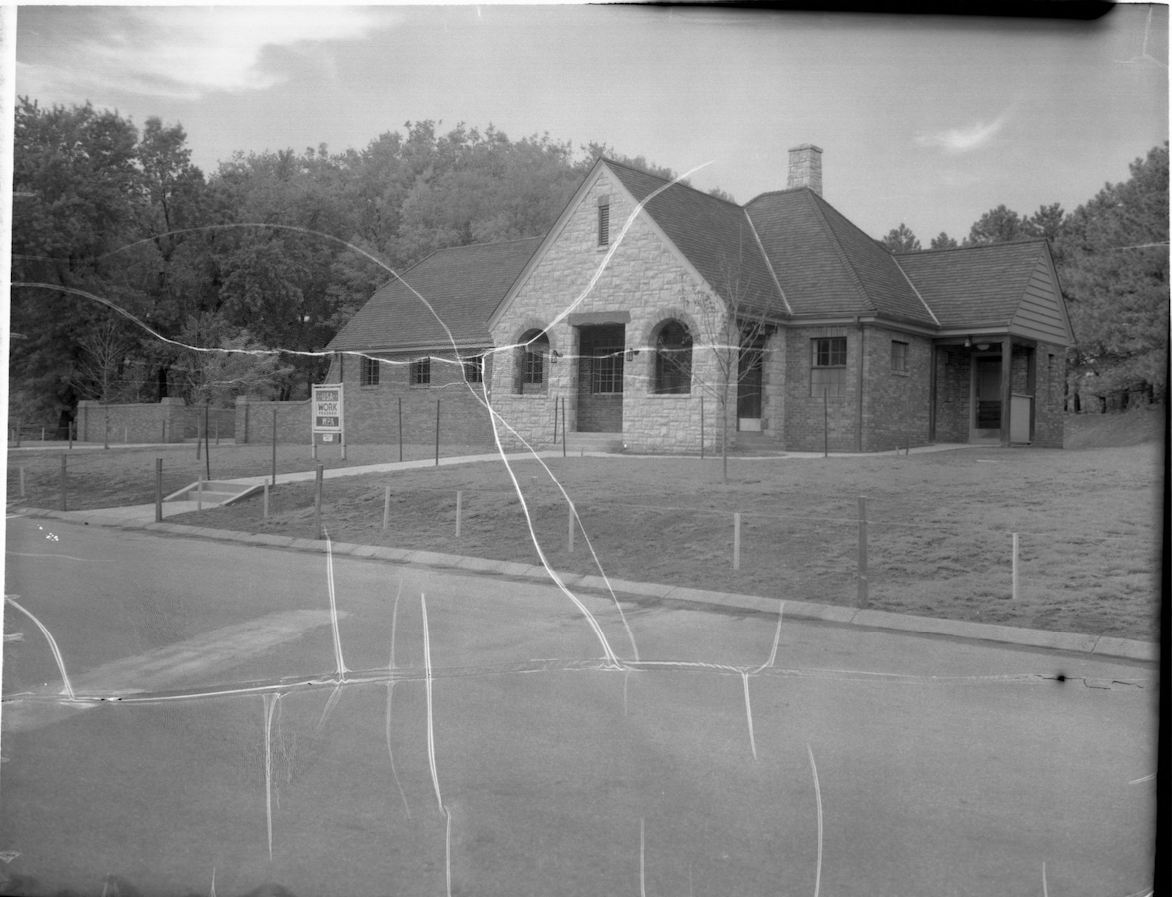
Built by the WPA in the 1930s. Bostwick, Louis and Frohardt, Homer. Durham Museum. 1936.
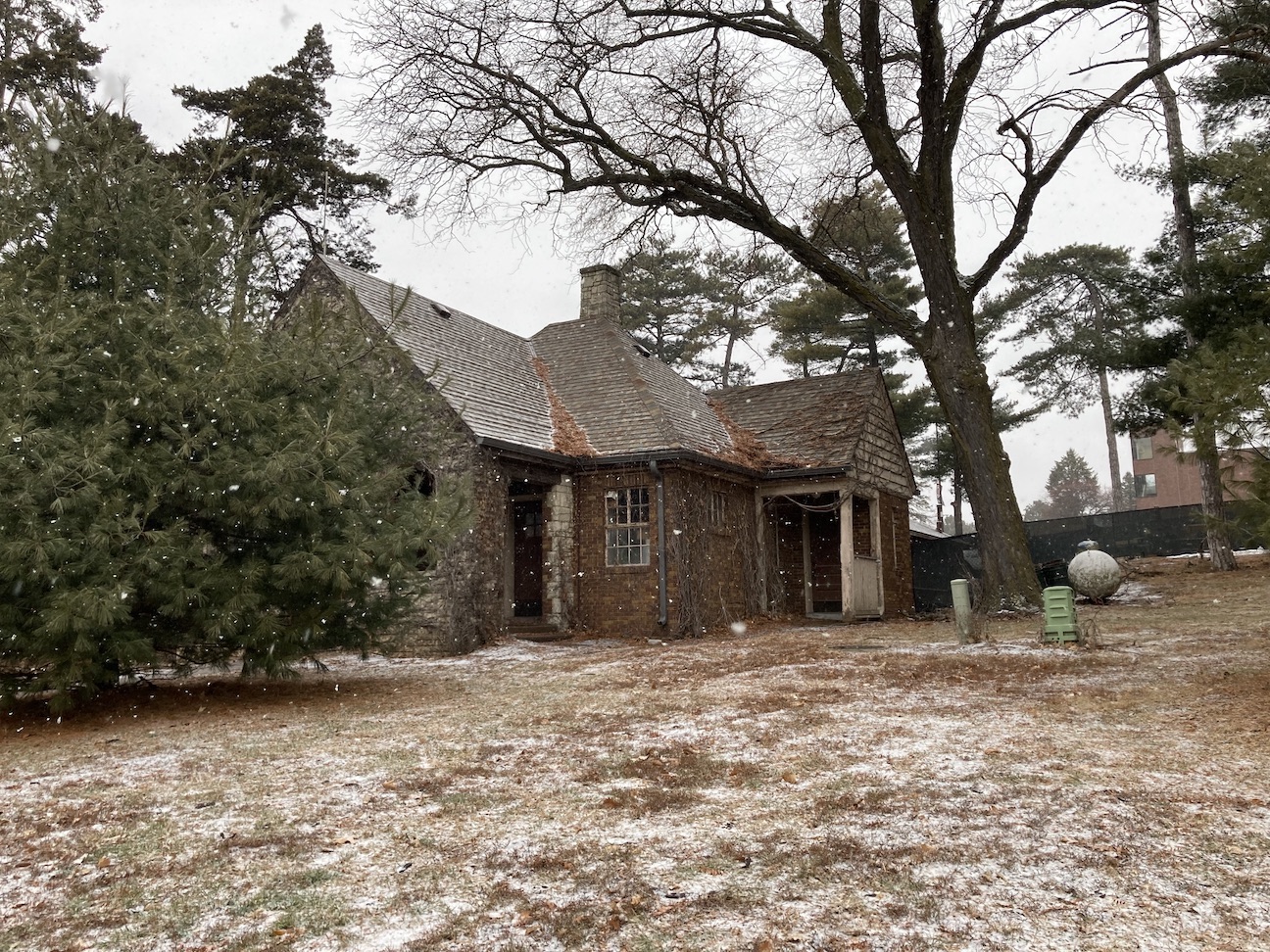

I quite enjoy this summary. From A History of Omaha’s Parks and Recreation System, Feb 1982. Omaha City Planning Department from Historical Society of Douglas County: “Both public works and recreation management programs were part of WPA involvement in Omaha. Among the public works projects were the construction or redevelopment of roads in Mandan, Spring Lake and Hummel parks and the erection of pavilions and service buildings, the development of playfields and numerous improvements in many parks. Two WPA structures at Elmwood Park caused great consternation for Parks Commissioner Joe Hummel. Between 1933-36 when he failed to win election to office, Parks Commissioner Frank Frost began construction of both a service building and caretaker’s home at Elmwood. Upon Hummel’s return to office, he criticized the grand and expensive structures. The conflict over the Elmwood Park buildings illustrated how politics were allowed to interfere with administration of the parks system, particularly when commissioners could be replaced every three years.”
My video of the Elmwood Park service building to give those out of town the feel. Press the white arrow within the red rectangle to view the video.
By 1938 the handsome brick and stone Elmwood Park equipment house became the garden center. It was leased by the Nebraska Federation of Garden Clubs for use as a garden center, serving as their headquarters.
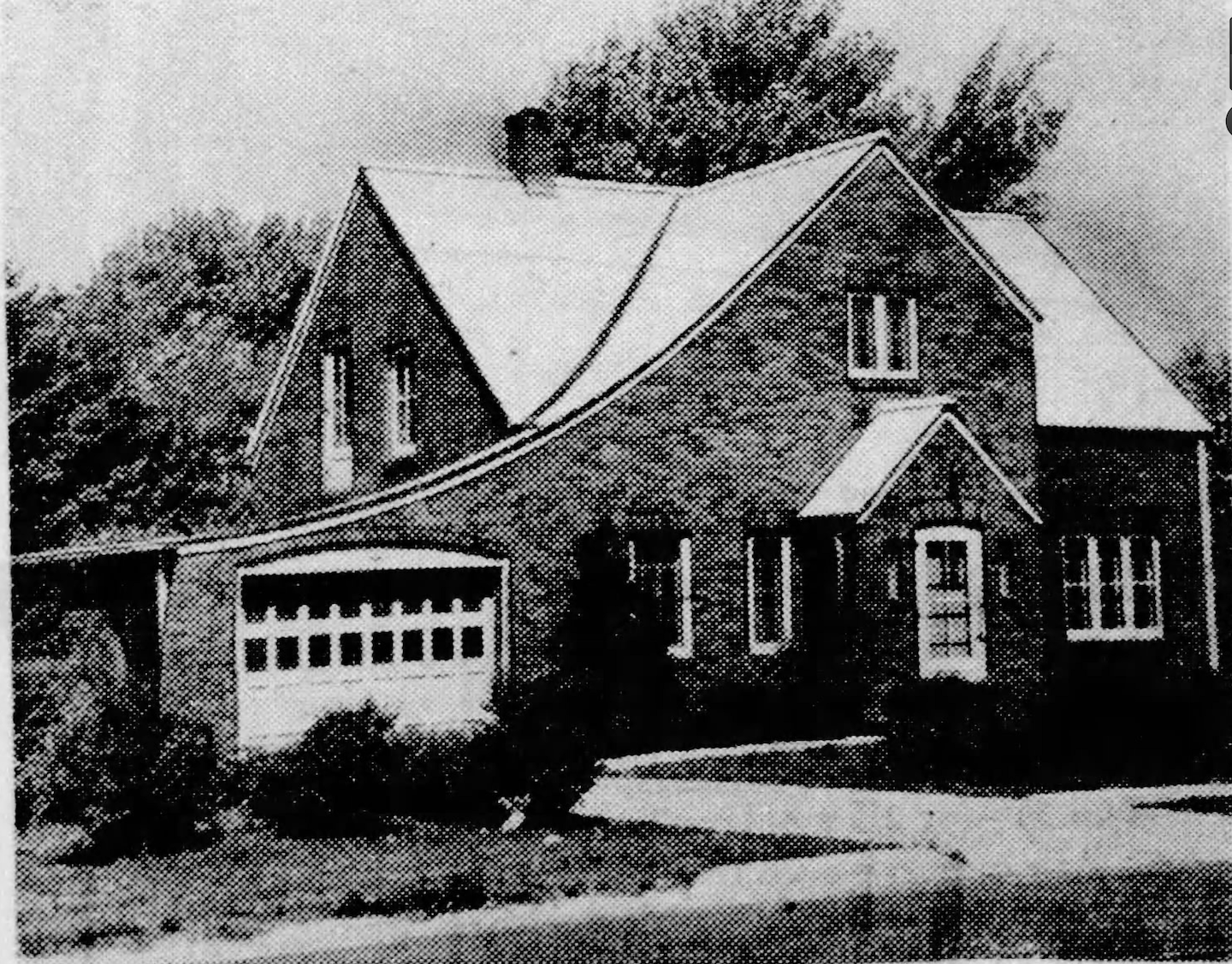
Jack and Gladys Shearman and their daughter, Alice Claire, continued to live at 808 South 60th Street until 1939 at least. After all of the problems, public shaming and attention heaped on the brick Tudor at 808, all I could hope at that point was that someone eked a little pleasure and out of the place.
The Eviction Notice
At least one caretaker appreciated the lovely brick Tudor. Jay Dudley served as Elmwood Park caretaker after the Shearmans moved on. Little is known about him except that he had been superintendent of the airport when it was a city municipality. In 1933 he was dismissed with no explanation given other than “airport funds are gone.” I wondered if it was just more politics. Shortly after he was appointed a fire inspector position on Detective Chief Danbaum’s team. There was also a Jay Dudley who as a sheriff’s deputy openly admitted to giving away confiscated slot machines to people in town. He also let on that clue owners and wealthy folks who wanted them for their basement Rumpus Rooms had gotten the keys to the property room. Surely that wasn’t the same man who the city made an example of when he didn’t move on from the caretaker’s mansion at 808 South 60th in a timely manner. Dudley went on record saying he was willing to move when his caretaker job ended in summer. But by November 2, 1942, the city served him an eviction notice through the public media. Apparently he had refused a job transfer to Hummel Park.
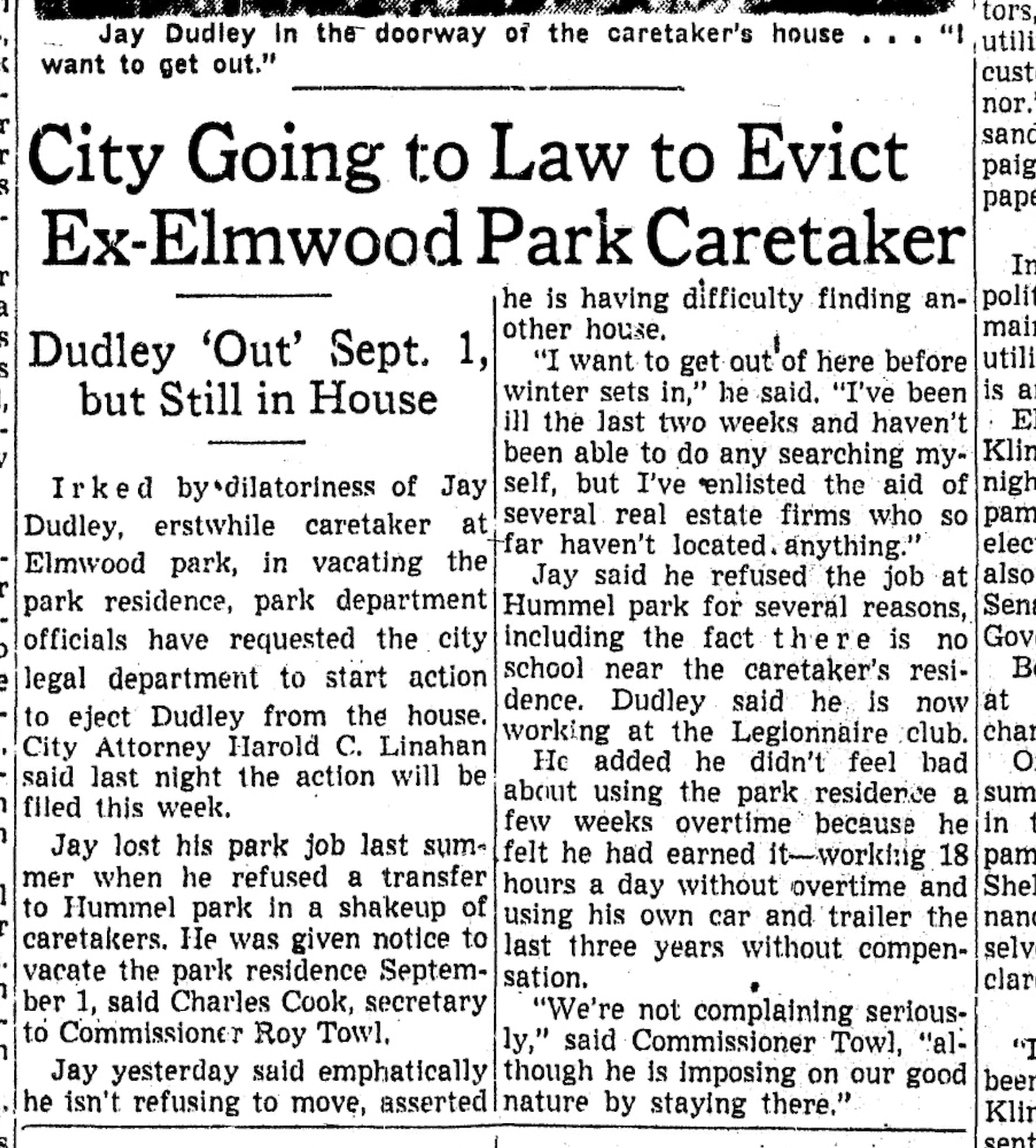
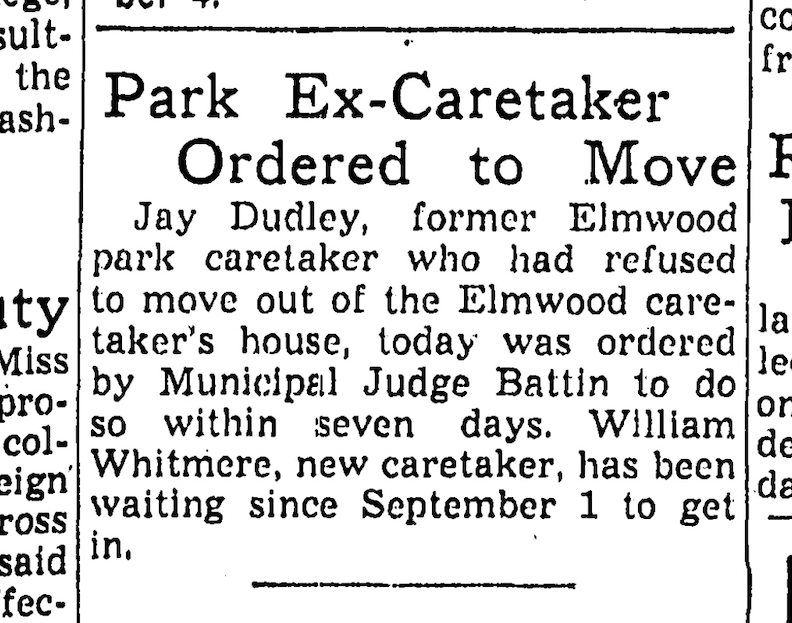
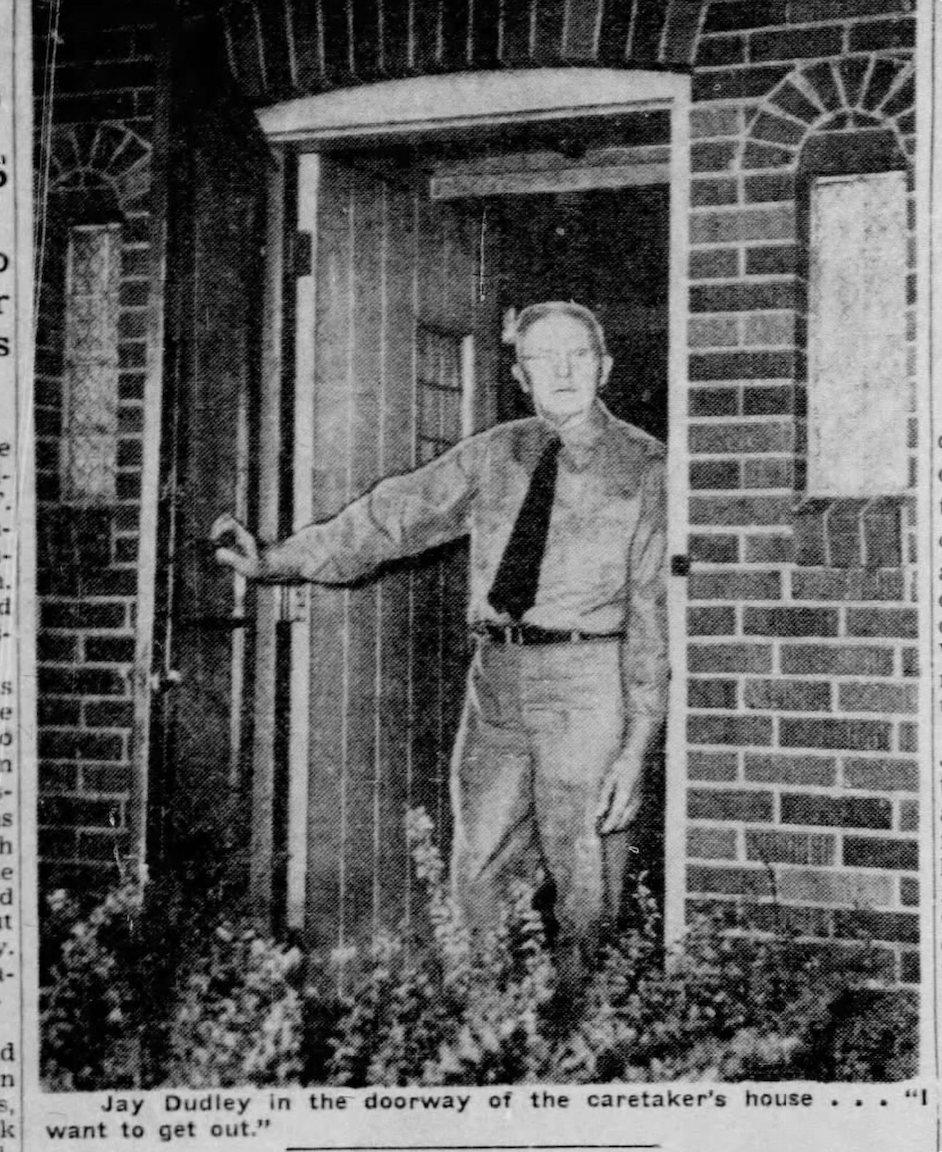
Nov 9, 1942 “Jay Dudley, former Elmwood Park caretaker who had refused to move out of the Elmwood caretaker’s house, today was ordered by Municipal Judge Battin to do so within seven days. William Whitmer, new caretaker, has been waiting since Sept 1 to get in.”
Great details of the matching lights and classic English door at the front of 808 South 60th Street.
There were many more caretakers to come and go from the Elmwood Park caretaker’s house. I’ve got a list to prove it but for our purposes here tonight, I think we got down to very nearly the bottom of 808 South 60th. There is always more to know and that’s where you come in. If you were one such caretaker or have any stories to share, please do. Also, before we depart, let’s raise a glass to 808 South 60th Street. Still going strong. Still good looking. She is serving the park caretakers and the people of Omaha. May she live many more years.
Now I really must get a little shut eye before I head out again.
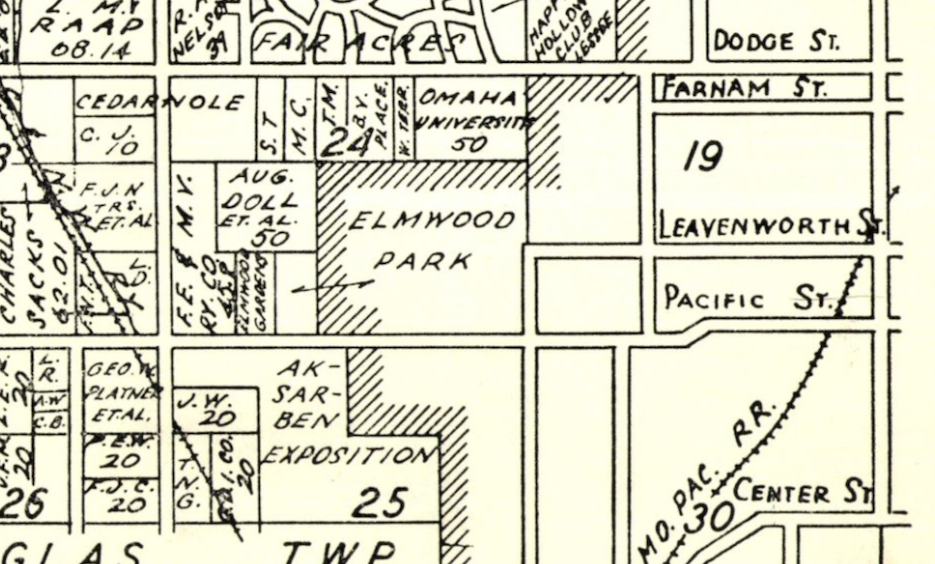
Douglas County 1938. Perkins Map and Directory Co. From the collection of Historic Map Works Rare Historic Maps Collection.
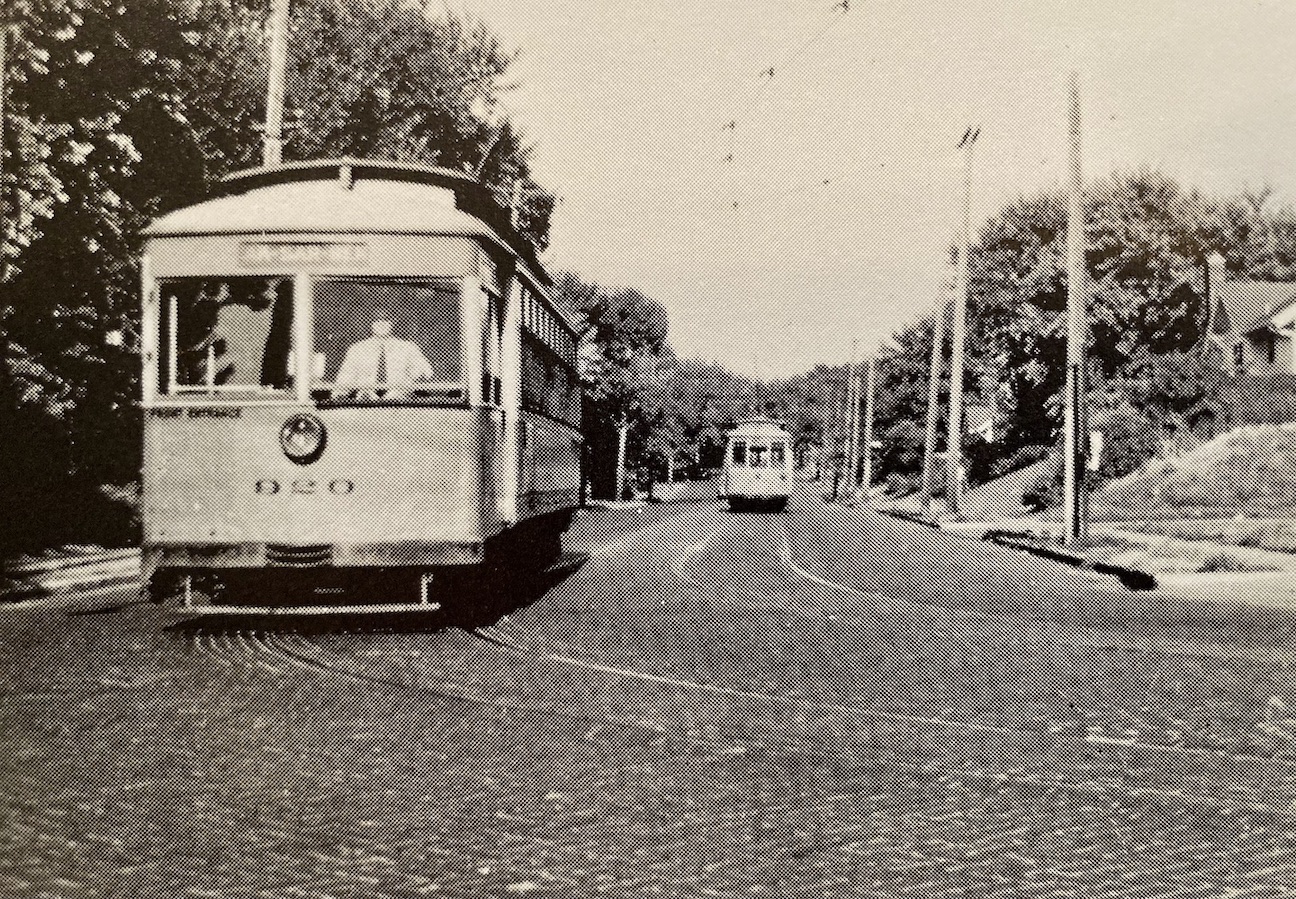
The year was 1947. This streetcar is bound for Aksarben. Camera facing east Leavenworth. This car will turn south from Leavenworth onto 60th Street, eastern edge of Elmwood Park. Borrowed from Richard Orr’s incredible book, O & CB: Streetcars of Omaha and Council Bluffs.1996.
I welcome your feedback and comments on this treasured Omaha home, any of the characters, 60th and Leavenworth, and Elmwood Park. Let us hear from you. Please share your additional clues to the story in the “Comments,” as we know more together. Everyone would love to read what you have to say and it makes the sharing of Omaha history more fun. You can use an anonymous smokescreen name if need be. We want to hear from you.
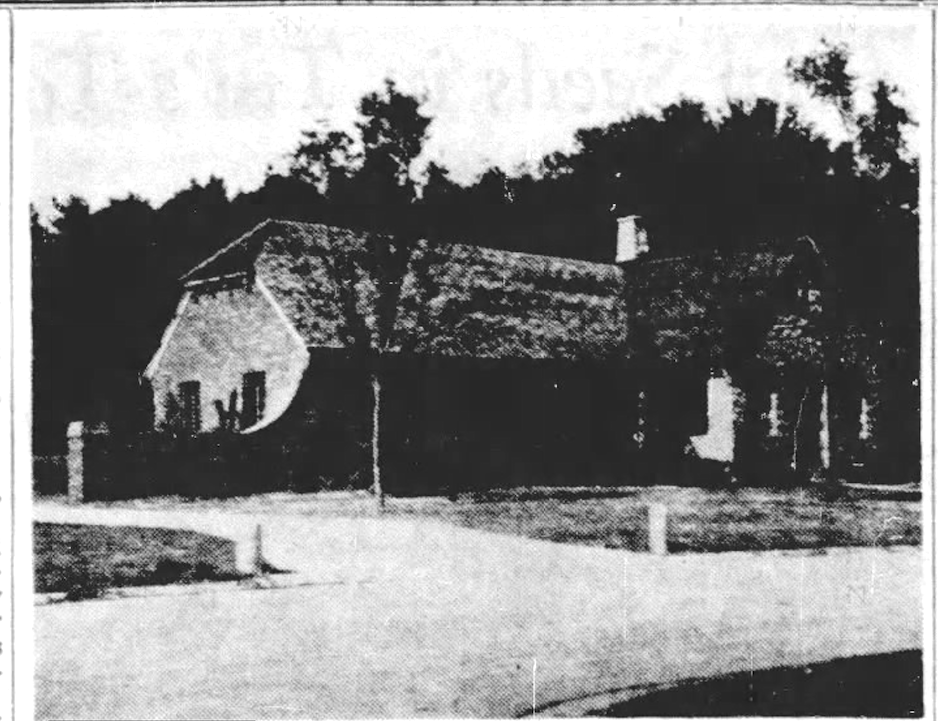
1938. The garden center, as it was newly coined.
You can keep up with my latest investigations by joining my email group. Click on “Contact” then look for “Sign me up for the Newsletter!” Enter your email address. You will get sent email updates every time I have written a new article. Also feel free to join My Omaha Obsession on Facebook. Thank you, Omaha friends. Miss Cassette

Aerial of 808 South 60th Street in 2013, before they cut back the trees. I think it was even more enveloped than this, to my memory, before. Image borrowed from the DOGIS site.
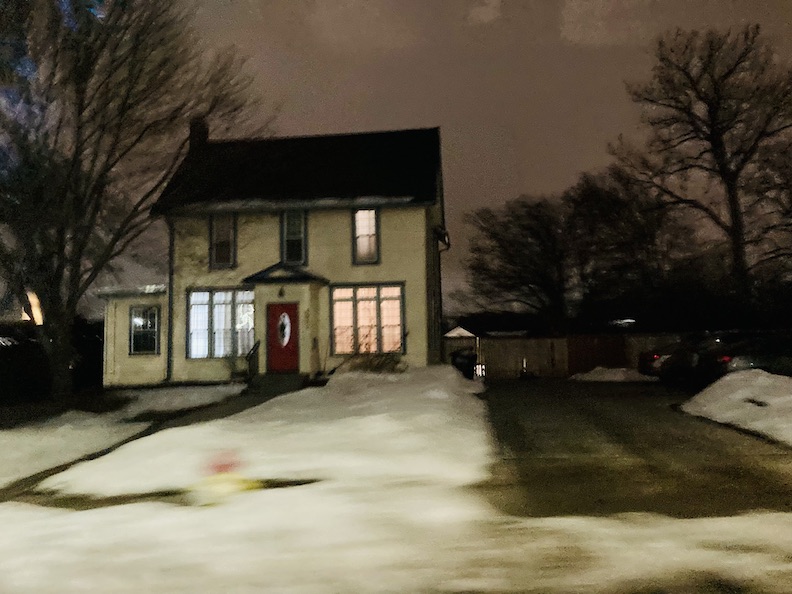
5922 Leavenworth.
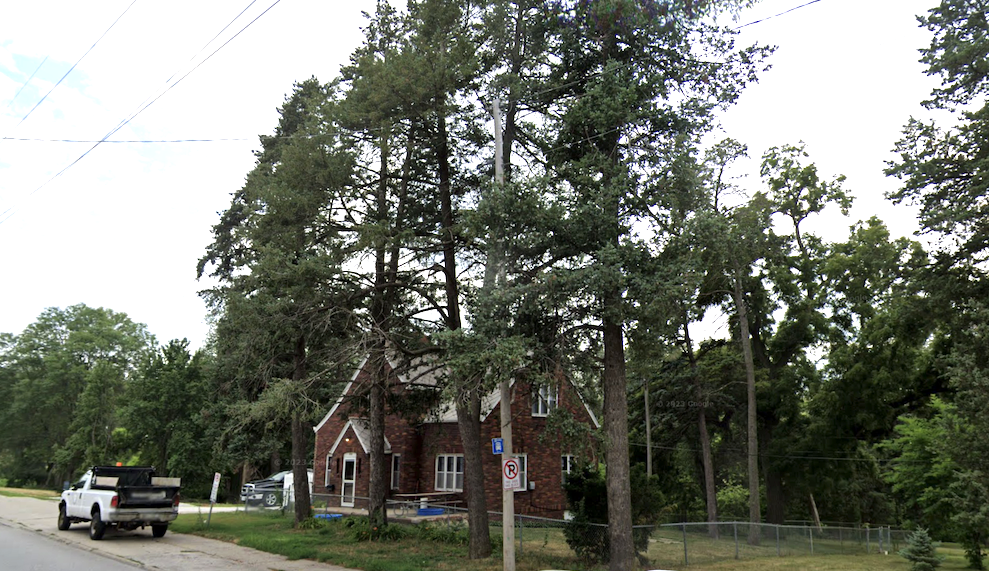
“It is too fine a house for a caretaker.”
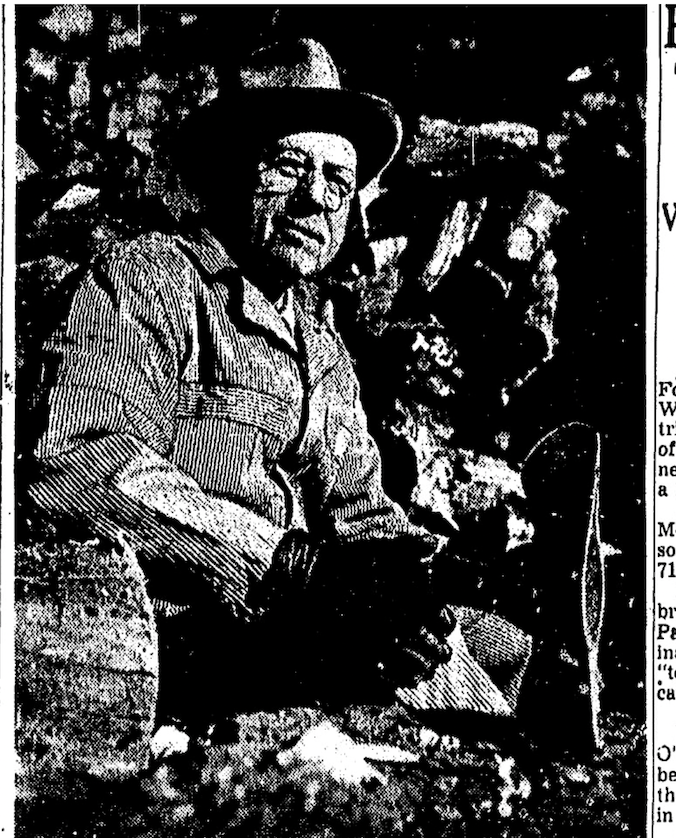
William “Bill” H. Whitmer, Elmwood Park caretaker in the 1950s.
© Miss Cassette and myomahaobsession, 2024. Unauthorized use and/or duplication of this material without express and written permission from this site’s author and/or owner is strictly prohibited. Excerpts and links may be used, provided that full and clear credit is given to Miss Cassette and myomahaobsession with appropriate and specific direction to the original content.
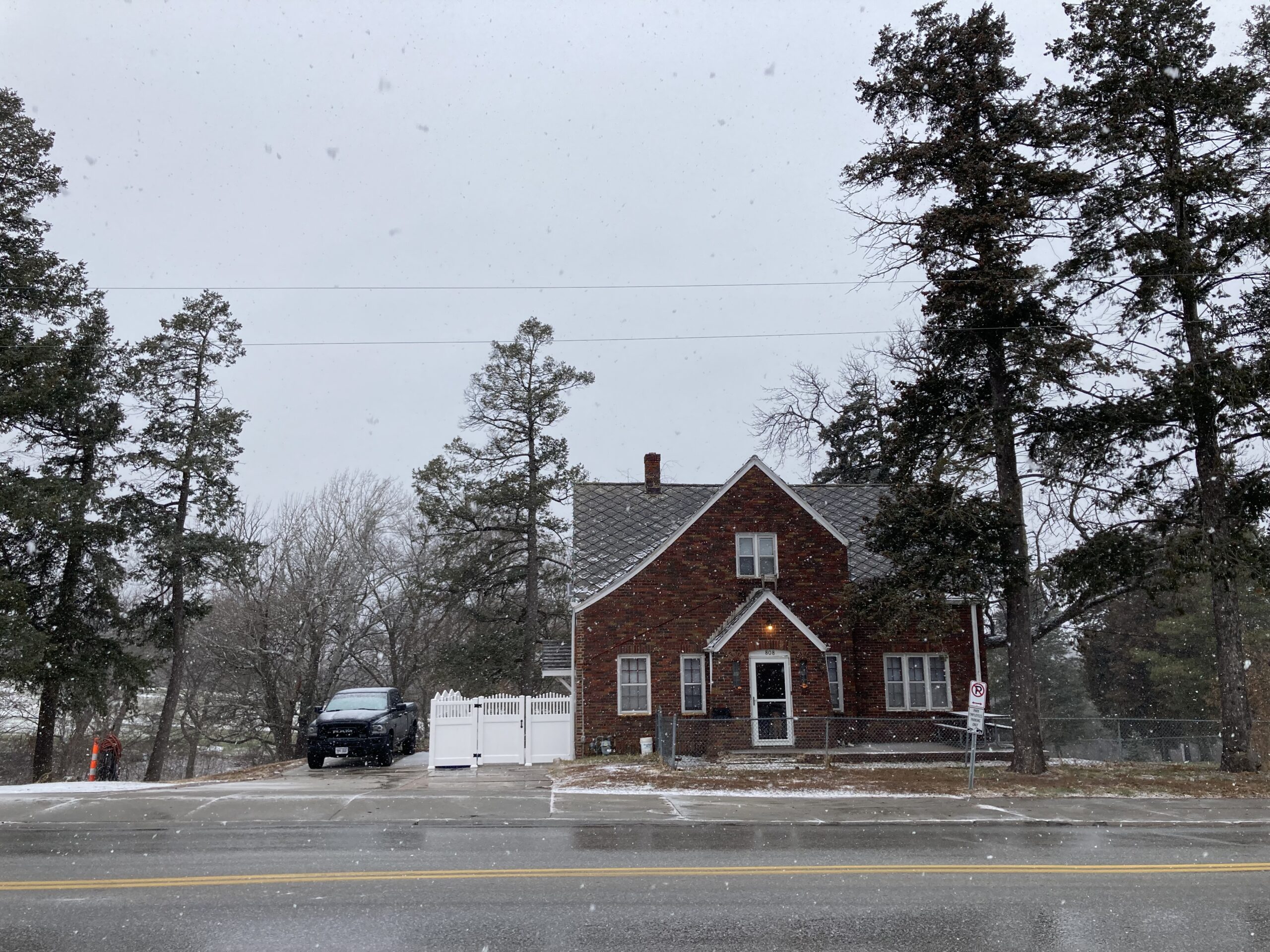
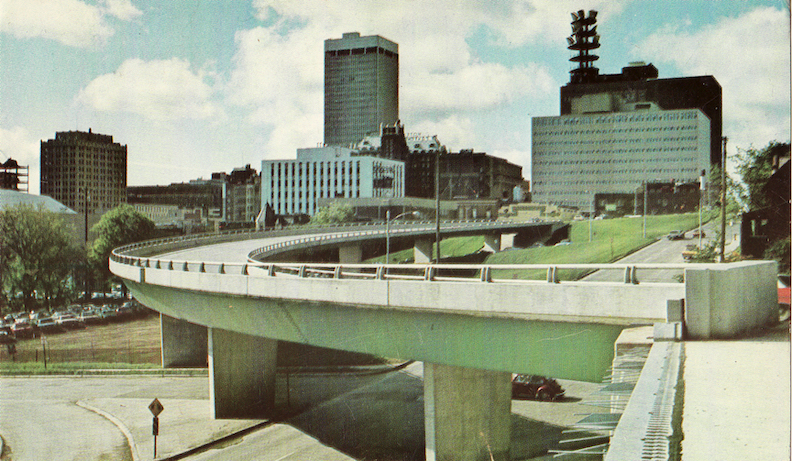

Thank you so much for your work honoring the architecture of the past in Omaha. I get back from Arkansas a couple of times a year and I’m appalled by the “growth” in Omaha. These newer buildings are hideous. When I was a child, my grandfather, Einar Berg from the Hidden House, would fill up his Chrysler sedan at the gas station on the corner of 60th and Leavenworth. He’d tell the attendant, “Fill her up with ethyl.”
So enjoyed the videos! The large, slowly drifting snowflakes are enchanting, and enhance the houses dramatically. You’ve written a compelling story, while rich with detail, moves along at a good pace.
Thank you for working with utmost skill to present such luxurious stories. Omaha is better having received this gift from you.
I’m wondering if there was more than one Frank Frost. My grandfather was Frank L. Frost. He left school and home at age 12 to work, then later put himself through night law school. He was a working attorney in the Keeline Building for many years. He did indeed serve on the MUD board for years, followed by my father, Jack Frost. The campaign card with the photo is not my grandfather. There was another Frost family that had a tire and battery company, located on Pacific Street when I was in high school. We frequently got phone calls for that family. It seems the two families may have been somehow mixed together.
Thank you so much for this info! You have answered a question for me that was bugging me during my research. I will certainly correct this within the article tomorrow. Thank you so much.
Thanks for all the interesting information! My family now owns 807 s 60th and 5923 Leavenworth. 807 is in fact a 4 unit apartment building and the old shop is mainly storage now (: very much enjoyed reading this story!
Hi Kaley,
Thanks so much for the feedback and extra clues. I really appreciate it. What great properties you own. May I ask are there any architectural clues in the apartment building or in the basement? Thanks!
Hello. I worked for the City of Omaha Parks Dept. every summer from 1970 to 1974. I worked at Elmwood Park during the summer of 1971 as a laborer, mowing and trimming and picking up trash.
I just read your article about the house at 808 S. 60th. Very interesting.
You might be interested to know that the caretaker of Elmwood during the ’60s and ’70s (exact years unknown to me) was a funny little guy named Ray Pike, and he lived in the 808 house with his wife, whom I never met. He was a dedicated City employee who really cared for “his” park. He was a good boss, easy to work for. In later years, the City got rid of all the caretakers, which was too bad. (I also worked at Mandan Park for an excellent caretaker named Fred Hutchinson.)
Anyway, I got to know Elmwood Park like the back of my hand, and have many fond memories of that summer of 1971 I later went to college at UNO, and would always park my car in the park and walk up to the campus, past all the huge trees that I used to mow around!
PS, I would like to add that the worse fatality accident in Omaha history occurred right there in the “whoop-de-do” right by 808. A car full of kids came off of westbound Leavenworth too fast and hit one of those big trees right there on the north side of the street. Five people were killed. I’ve seen the photos, they are out there, maybe you could track them down. The tree is still there, as far as I know, with bad damage to the trunk. Sad story.
Ken Lant
Buena Vista, CO
I live in the area and it was so neat to see what that house is/was all about! I’ve always wondered why that “lone” house was there!
Keep the stories coming!
Thank you, Daniel! Well you live in a beautiful part of town and I am quite envious. There are so many interesting pieces of the puzzle in that area and I hope to keep going with my investigation. Thank you so much for writing in.